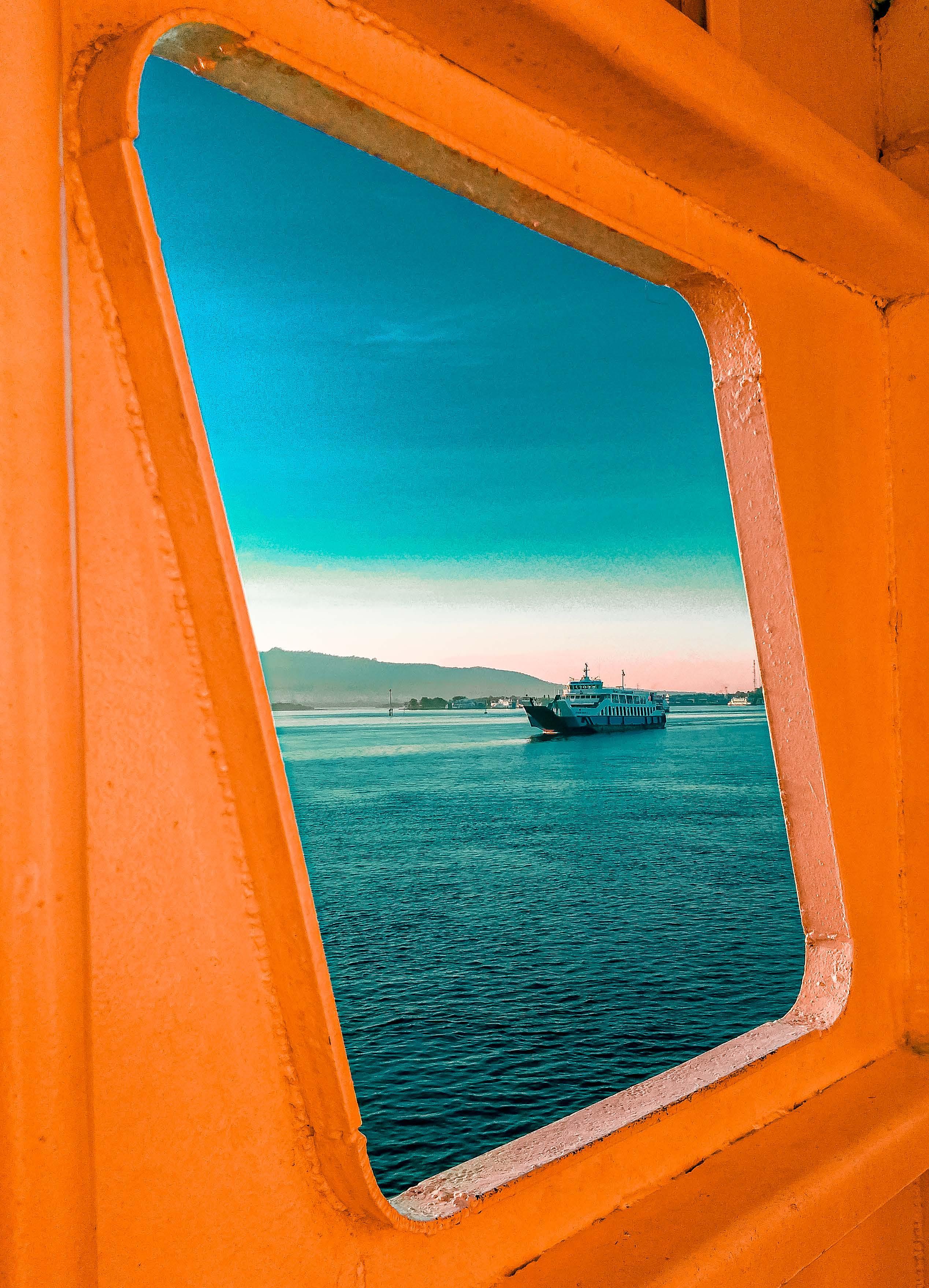
WINDOW OF OPPORTUNITY
Alternative fuels jostle for prime position in the race to net zero
TURNING POINTS
Why rotor sails are becoming the popular propulsion choice
TECH TALK
Next-generation digital platforms take shipping to another level
supporting Clean Shipping initiatives SPRING 2024
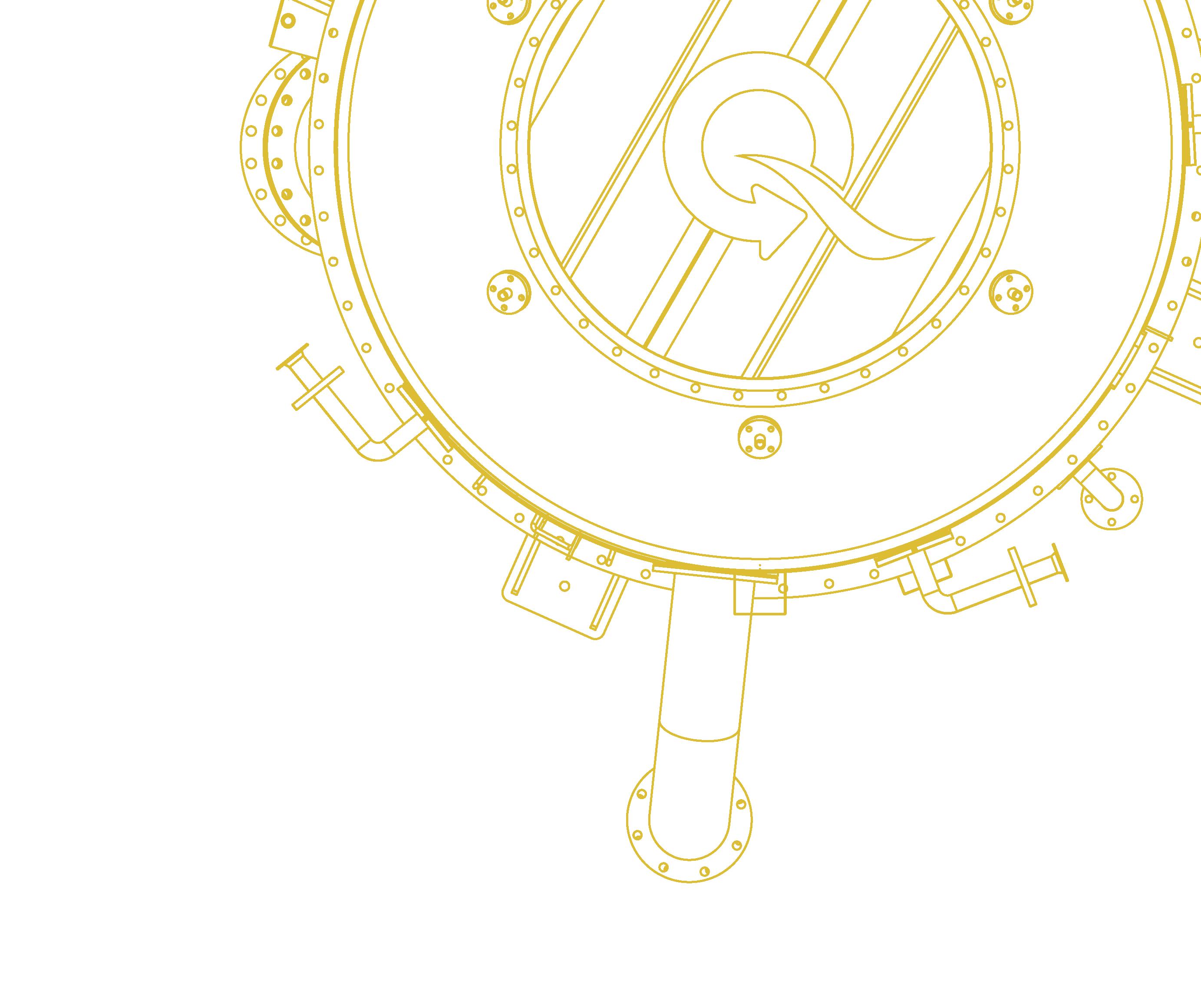
maritime scrubbers including a state-of-theart control system with remote accessibility and an energy optimisation programme.
The PureteQ WMS013 Water Monitoring System is designed for simple installation and operation with only one central monitoring cabinet, reducing sensor maintenance costs significantly. The control system and related software ease retrofitting to any existing EGCS/EGR.
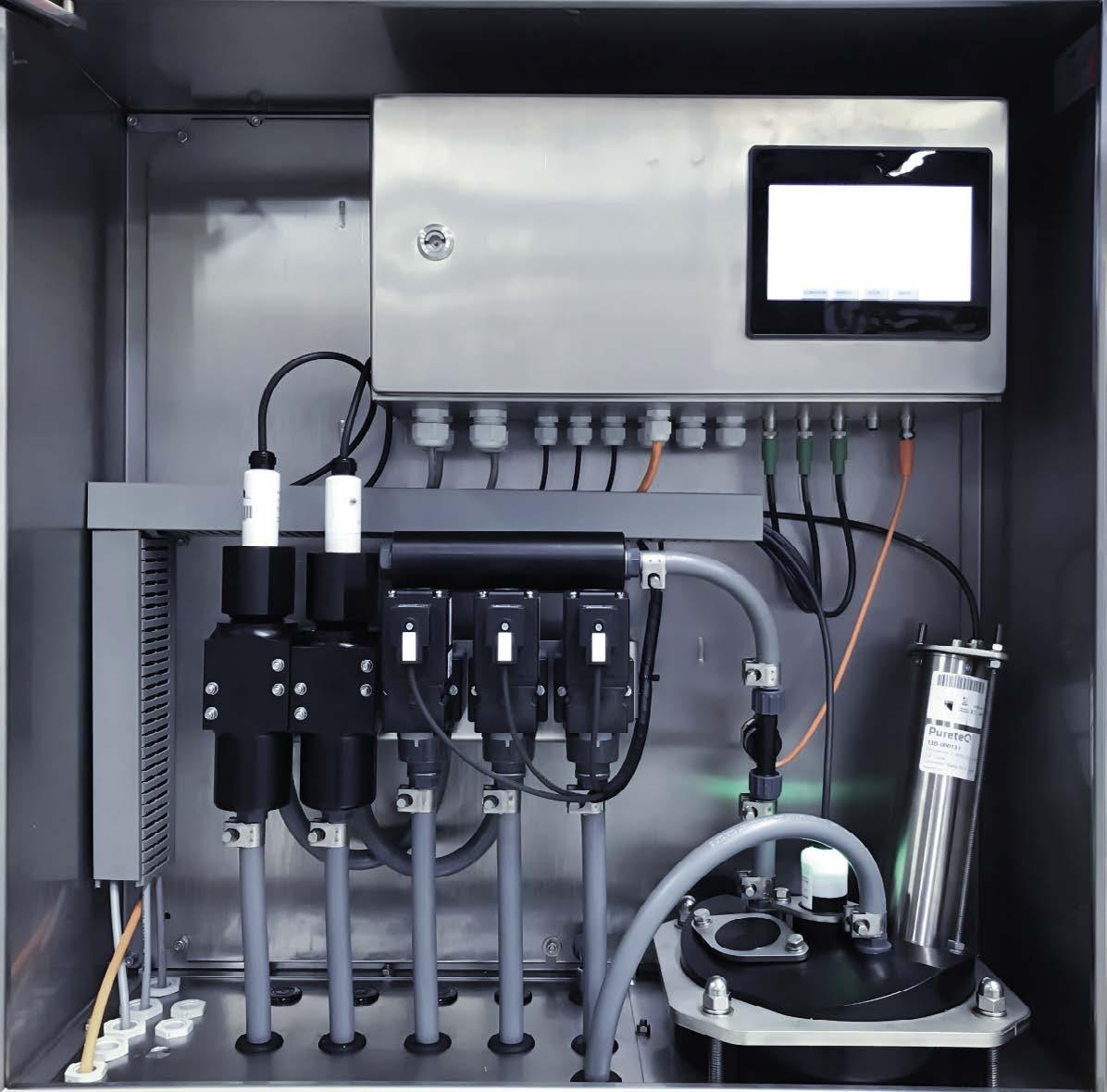
WWW.PURETEQ.COM
 Sandra Speares Editor, Clean Shipping International
Sandra Speares Editor, Clean Shipping International
TEAMING UP TO TACKLE CHANGE
Teamwork continues to be the most important approach when dealing with new environmental regulations and procedures, and there have been a number of alliances formed between industry members exploring solutions to the challenges.
As the next deadline for ballast water compliance looms in September, industry players are urging companies and organisations to get on with putting measures in place rather than waiting until the last minute – or passing the deadline and then trying to take retrospective measures, an approach the maritime industry has adopted in the past.
In this edition of Clean Shipping International, we take an in-depth look at how the industry is meeting environmental requirements. For example, exhaust gas cleaning systems – scrubbers – continue to be a popular solution – although combination systems linking different measures that can be run in tandem, are also popular.
What role governments will play in ensuring an environmentally friendly approach does not prove to be a liability will also be key –as well as the amount of assistance governments are prepared to provide to ensure the industry gets things right.
Efforts being made to meet environmental deadlines do not end with the ships themselves, though, and issues such as effective procedures being in place at ports to supply vessels with alternatives fuels, as well as follow and promote eco-friendly practices, are also vital to the smooth running of the wider industry. There is plenty of healthy rivalry in the alternative fuels market between the different products available – or those that will be available in the future when the right infrastructure is there to deal with them.
While moves towards greener practices continue, what impact these may make on the safe running of ships also remains a consideration – green does not necessarily mean safe and user friendly. Training is going to be a key consideration when implementing any new approach to fuel use. There have been enough accidents in the past – despite crews being informed of the impact of dangerous practices.
Ensuring that masters and crew are up to speed with any new measures is of the utmost importance. It is often the case that shore-side personnel fail to remember that crews are at the sharp end when it comes to implementation and will have to personally face the consequences of any flag state action for non-compliance following a deadline.
As ever, wIth all these changes going on in the industry, crew happiness and motivation continue to be key issues – not least when it comes to ensuring that communications between ship and shore remain good at all times and crews do not become isolated.
Meanwhile, innovative technological solutions to improve the industry’s chances of meeting the legislative deadlines are also to be found in this issue. As ever, new technological approaches are very important and can provide the solution to many of the problems facing the industry as the next wave of deadlines approaches.
We hope you enjoy this latest edition of Clean Shipping International
FROM THE EDITOR CLEAN SHIPPING INTERNATIONAL – Spring 2024 1
Marine Emissions Monitoring and Testing Service
Protea manufacture the equipment and supply qualified engineers to carry out the on board testing.
Emissions Testing using the latest Protea Transportable FTIR
• Know your ship gaseous emissions
• Verify your continous emission monitoring system
• Verify your Exhaust Gas Cleaning Systems (EGCS) performance
• Data contributes to engine efficiency checks
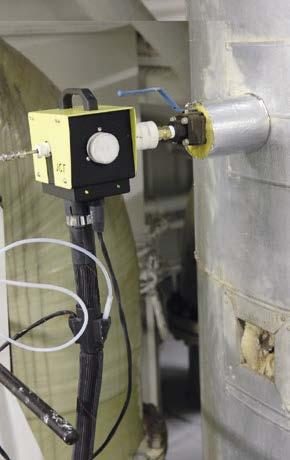
• Emissions Testing Continuous Emission Monitoring System
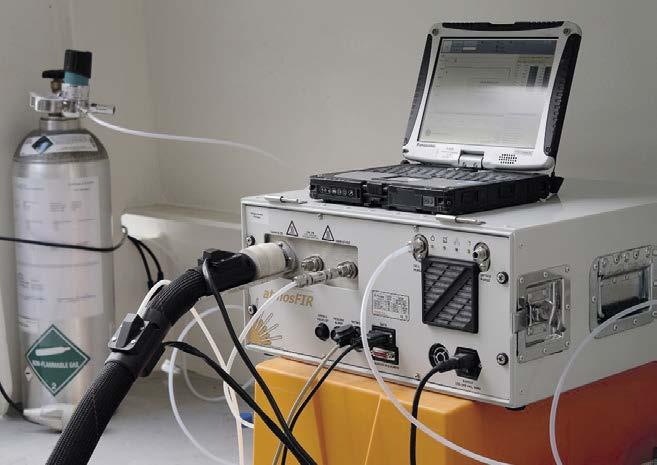
Approvals
UK Maritime and Coastguard Agency
European Commission Directive 2008/67/EC of 30th
June 2008, amending Council Directive 96/98/EC on marine equipment (4th Amendment) Annex 2, A2/2.1On board NOx monitoring and recording devices, MARPOL 73/78
Annex VI regulation 13 and the NOx Technical Code.
ATEX Protea P2000
Certficate Number:
Baseefa 18 ATEX 0060X
Markings: II 2 G Exdb IIBT* Gb
T6 Ta -20˚C – +40˚C
T4 Ta -20˚C – +60˚C
IEC Protea P2000
Certificate Number:
IECEx BAS 18.0040x
Certificate of Design Assessment Protea P2000
RINA Rules for the Classification of Ships - Part C “Machinery, Systems and Fire Protection”, Chapter 3, Section 6, Tab.1 and IMO Res. MEPC.259(68) Chapter 6 “Emission Testing” as well as the relevant requirements of Revised MARPOL Annex VI and NOx Technical Code 2008.
Lloyd’s Register - Type Approval Certificate
Protea P2000
LR Rules & Regulations for the classification of ships (July 2014) LR Test Spec No.1 (2015)
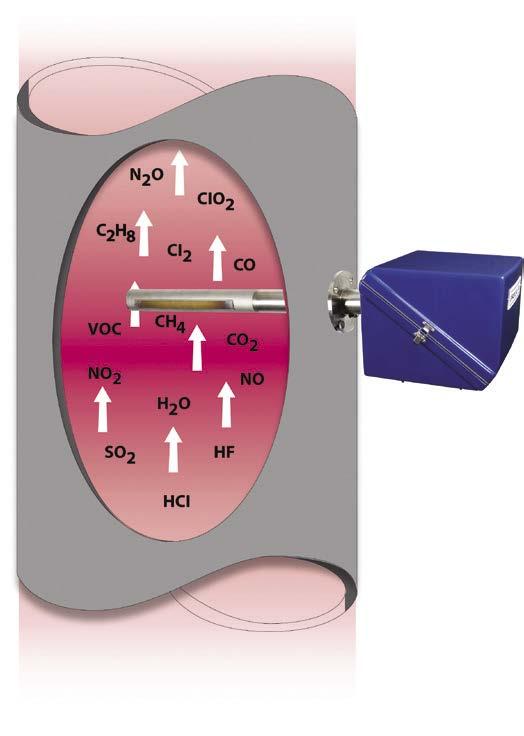
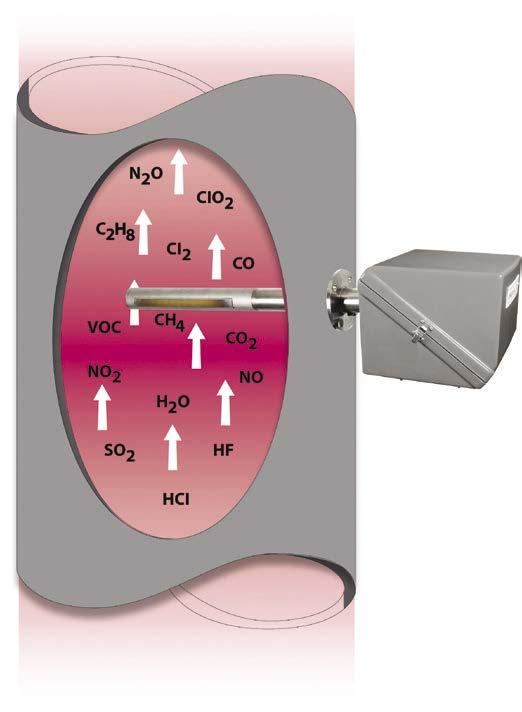


Markings: Ex db IIB T*Gb
IMO Resolution MEPC 184(59) - 2009 Guidelines for exhaust gas cleaning systems
IMO NOx Technical Code (2008)
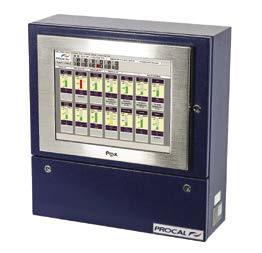


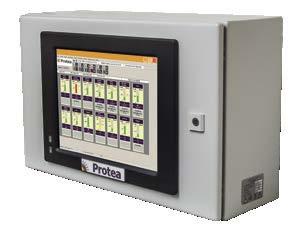
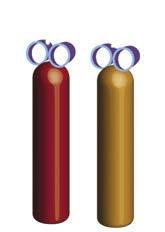
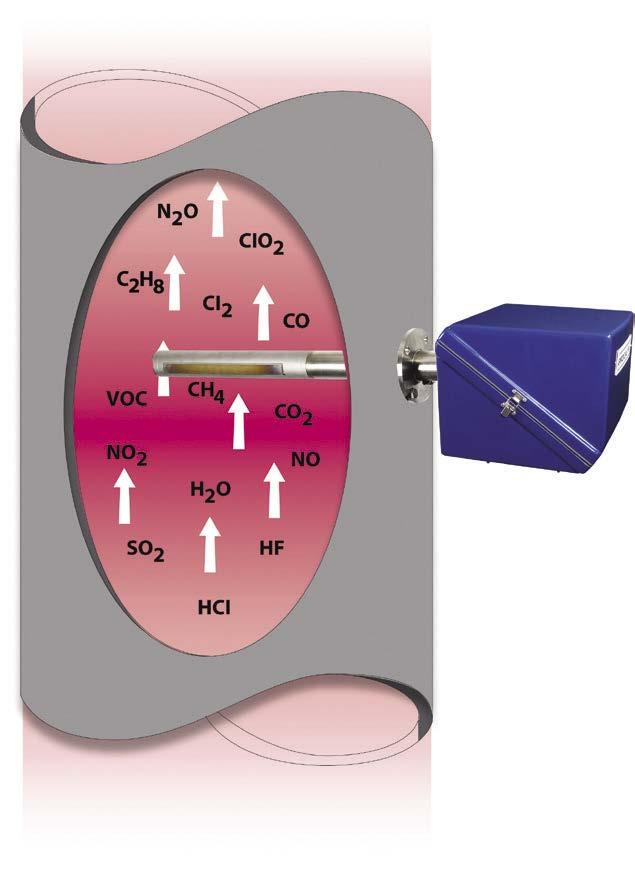
International Association of Classification Societies
Concerning Electrical InstallationsIACS E10 Test Specification for Type



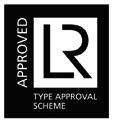
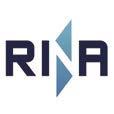
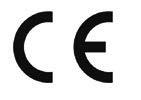

MCERTS Performance Standards for Continuous Emission Monitoring Systems Product Conformity Certificate No: Sira MC 050060/12 Sub-Brand
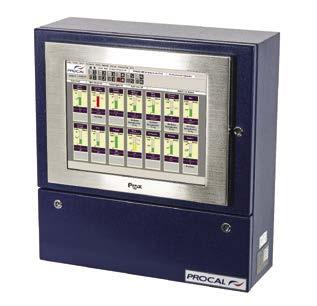
MCERTS Protea P2000




www.protea.ltd.uk
+44 (0)1270 872000 sales@protea.ltd.uk
Advanced Emissions Monitoring ATEX US EPA 40 CFR Part 60 & 75 Compliant European EN14181 QAL 3 Compliant Tel: +44 (0) 1733 232495 www.procal.com www.parker.com ACWn for windows Span Gas Instrument Air (Zero) Stack Gas Sub-Brand Advanced Emissions Monitoring ATEX US EPA 40 CFR Part 60 & 75 Compliant European EN14181 QAL 3 Compliant Tel: +44 (0) 1733 232495 www.procal.com www.parker.com ACWn for windows Span Gas Instrument Air (Zero) Stack Gas Sub-Brand Advanced Emissions Monitoring ATEX US EPA 40 CFR Part & 75 Compliant European EN14181 QAL 3 Compliant Tel: +44 (0) 1733 232495 www.procal.com www.parker.com ACWn for windows Span Gas Instrument Air (Zero) Stack Gas Protea Analyser Control Unit Sub-Brand Advanced Emissions Monitoring ATEX US EPA 40 CFR Part 60 & 75 Compliant European EN14181 QAL 3 Compliant Tel: +44 (0) 1733 232495 www.procal.com www.parker.com ACWn for windows Span Gas Instrument Air (Zero) Stack Gas
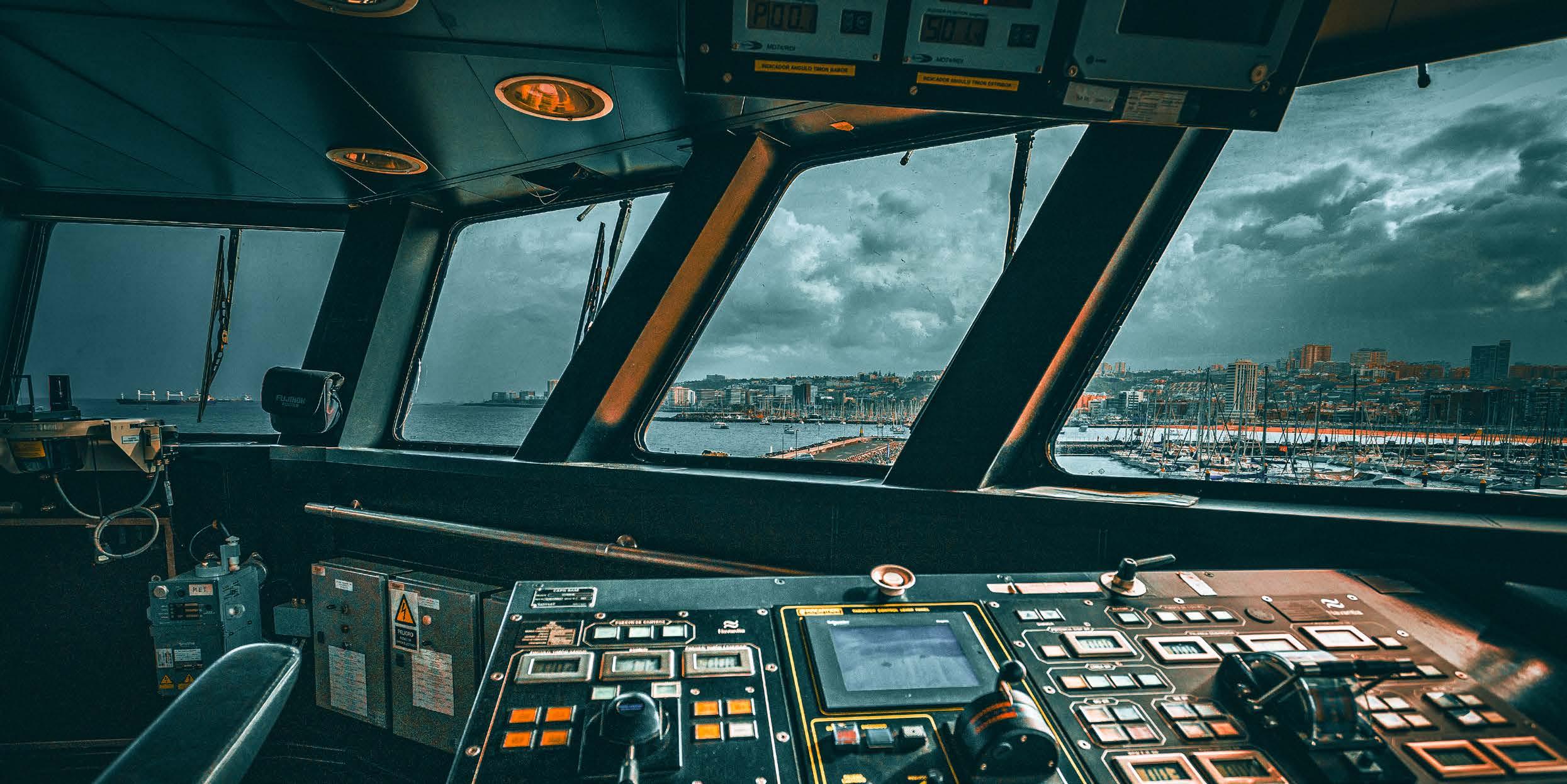
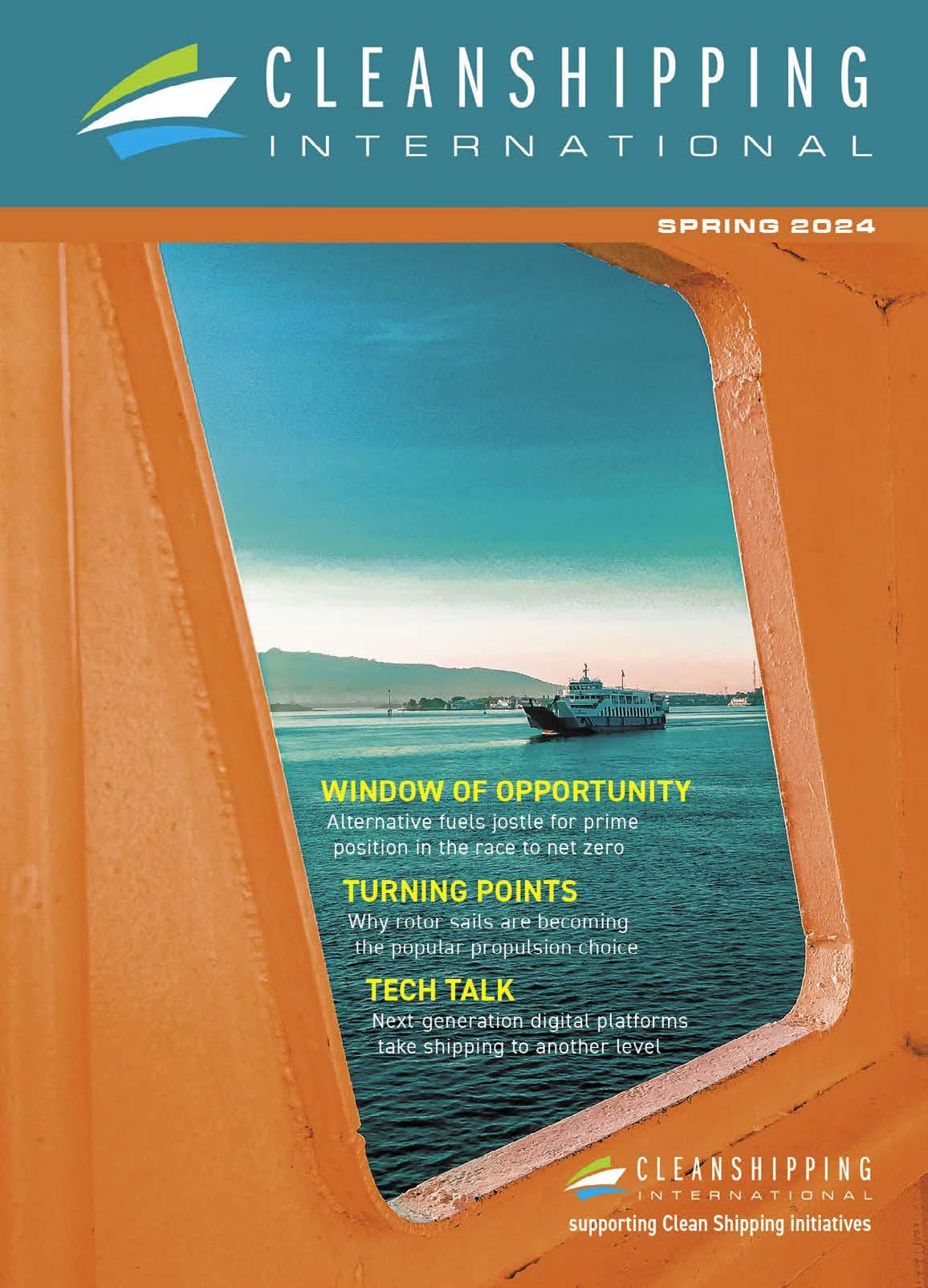

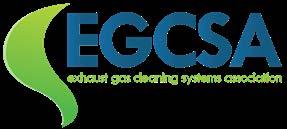
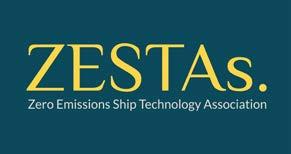
Editor: Sandra Speares speares1@aol.com Project Director: Jonathon Ferris jonathon.ferris@ cleanshippinginternational.com Sub-editor: Samantha Robinson sam.robinson.journalist@ gmail.com Publisher: Bill Robinson publisher@ cleanshippinginternational.com Designer: Justin Ives justindesign@live.co.uk Published by Maritime AMC, Clean Shipping International supports Clean Shipping Initiatives. The views expressed in Clean Shipping International are not necessarily those of Maritime AMC unless expressly stated as such and disclaim any responsibility for errors or omissions or their consequences or for advertisements contained in this magazine and has no legal responsibility to deal with them. Distributed to the members of CLEANSHIPPINGALLIANCE2020 cleanshippinginternational.com
Sandra Speares on why teamwork is the best way to tackle industry challenges 07
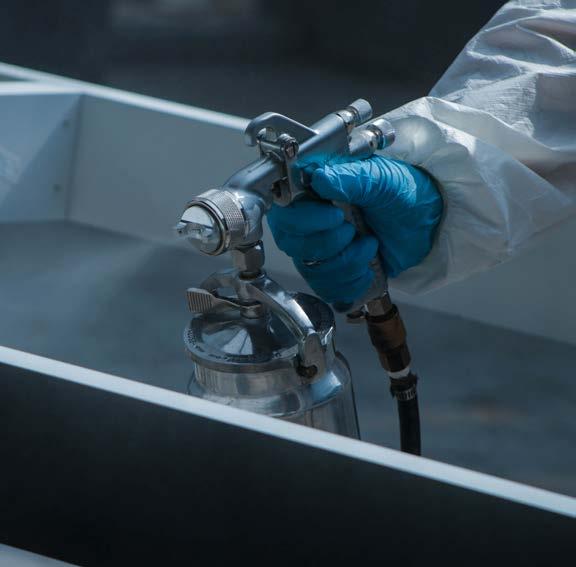
All the latest news and views from across the globe 16
An increasing number of shipowners are installing exhaust gas cleaning systems as a solution to the challenges of environmental regulation 23
Ship performance can be drastically improved with today’s state-of-the-art hull coatings, which undergo rigorous testing to achieve high standards
In an advisory risk review, Marine Mutual is warning that shipowners need to be aware of a looming BWM Convention deadline 28
The debate continues on which alternative fuels will be most effective going forward. We look at some of the approaches and viewpoints 36 TECHNOLOGY
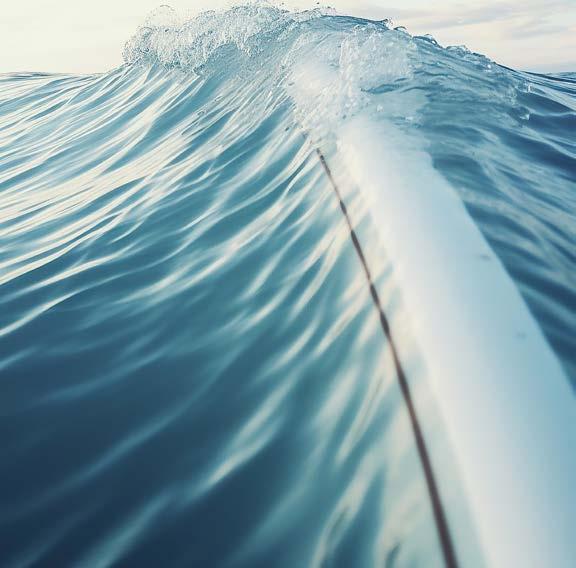
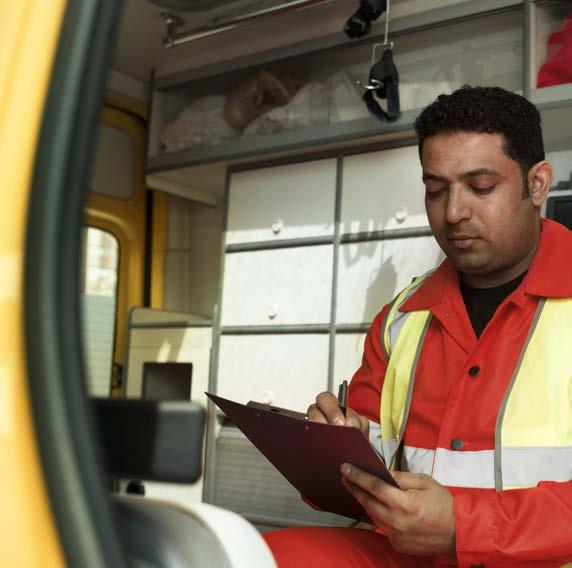
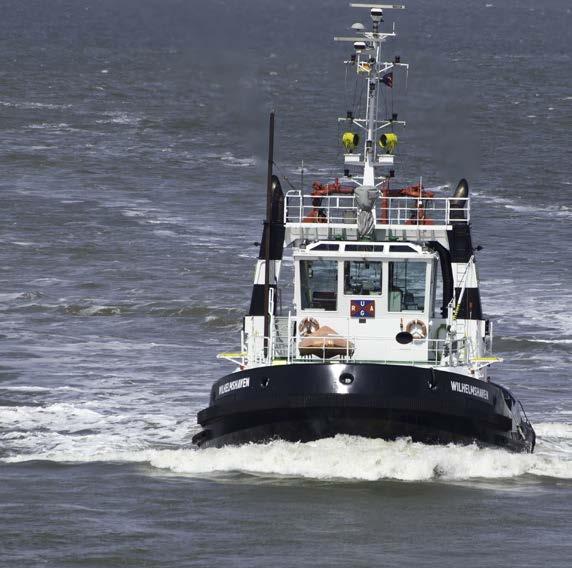
Information technology provides ever-increasing solutions to tackle environmental issues, as well as ensuring maximum efficiency of operations and safety of crew 48
A number of new designs and innovations have been revealed that improve efficiency as well as providing greener options 52
Developments in the Red Sea and other flash points are increasing fears over piracy and war risks 58 REGULATION
As swathes of environmental regulation affecting the maritime industry continue, companies warn that more preparation is needed to comply 62
Classification societies continue to guide shipowners on their net-zero journey
CLEAN SHIPPING INTERNATIONAL – Spring 2024
5
THE EDITOR
» p23 » p52 » p48 » p62
01 FROM
WELCOME Don Gregory, Director, Exhaust Gas Cleaning Systems Association 10 NEWS ROUND-UP
EGCS
MARINE COATINGS
26 BALLAST WATER TREATMENT
FUELS
ALTERNATIVE
PROPULSION
SAFETY
CLASSIFICATION
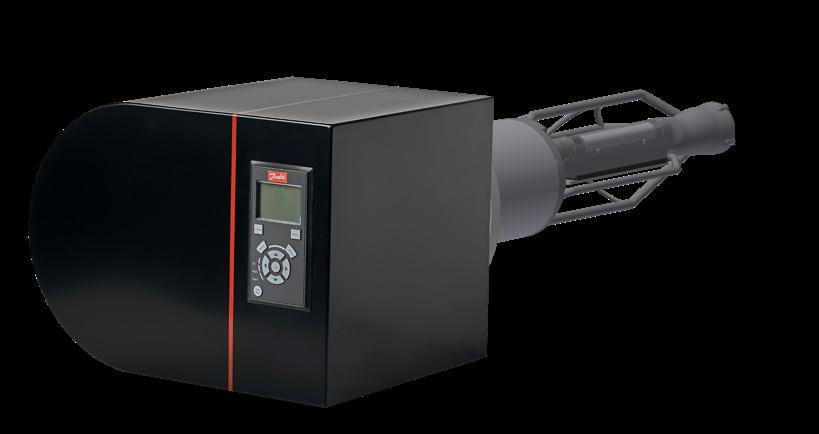
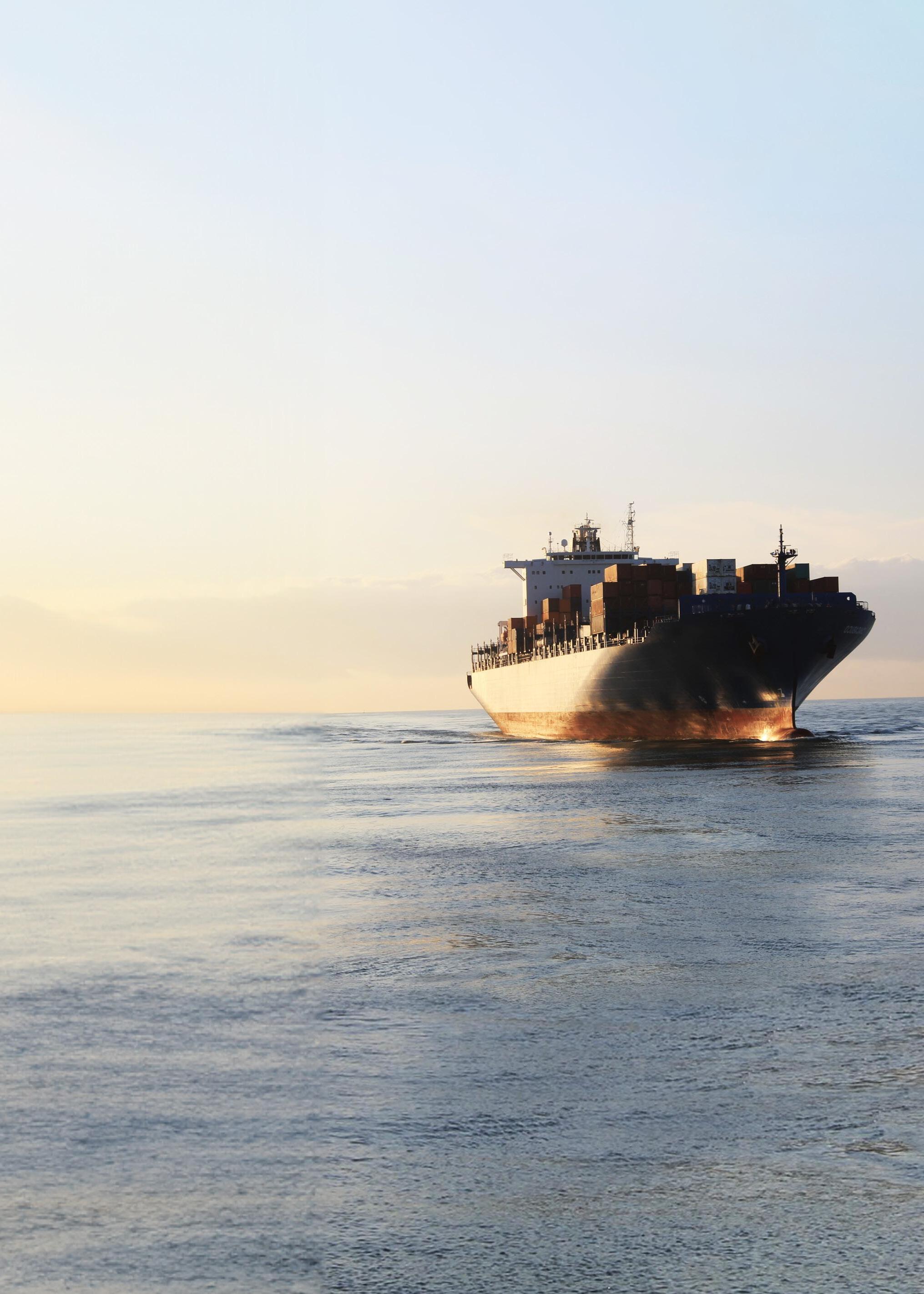
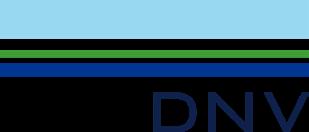

danfoss-ixa.com Scan QR code Discover more In situ SO2/CO2 CEMS: Cost-effective Continuous Emission Monitoring System Introducing the Danfoss IXA MES 1002, a revolutionary solution designed to make emission monitoring effortless for maritime operations. Our compact In situ CEMS offers real-time measurements of SO2/CO2 directly in the exhaust pipe, ensuring fast and accurate results with minimal intervention. Where Compliance Meets Innovation • Effortless Single-Unit Installation (only compressed air, data cable, and power) • Longest Calibration Interval in the market - 2 years exchange service program • Zero Drift Technology, no on-board service technician required • DNV Type Approval Certification Contact us today to learn more about our innovative solutions. MES 1002 SO2/CO2 Analyzer What If Scrubber Compliance Could Be Effortless? Compliance with MEPC.340(77) and MEPC.259(68) MARPOL Contact us: ixa @danfoss.com
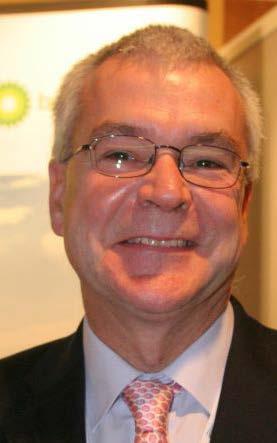 Don Gregory Director, Exhaust Gas Cleaning Systems Association
Don Gregory Director, Exhaust Gas Cleaning Systems Association
THE FUTURE OF SCRUBBERS
I was recently asked by a member of the Exhaust Gas Cleaning Systems Association (EGCSA) if there was a future for exhaust gas cleaning systems? He was of the view that there would be no installations after about 2030.
In my opinion, the end of exhaust gas cleaning would be tantamount to concluding air quality no longer matters. The impacts of particulate and gaseous compounds on asthma, cardiovascular diseases and human health in general would no longer be of interest to governments and regulatory organisations.
The other presumption is that propulsion and heating on board ships will continue to be provided by combustion of fuel –whatever that fuel happens to be.
Before looking into the future of exhaust gas cleaning systems (EGCS), let us first consider the situation in 2024.
The introduction of EGCS as an alternative compliance method to the cap on the sulphur content of marine fuel enabled the International Maritime Organization (IMO) to agree at MEPC 70 to the 2020 date of entry into force of MARPOL Annex VI regulation 14. That date (2020) was five years ahead of the alternative date of 2025. The earlier date was agreed on the basis that there would be sufficient fuel available.
Consultants CE Delft had been commissioned to study the availability of lower sulphur fuel. Its report assessed a number of measures when concluding that there would indeed be sufficient low-sulphur fuel available. The key to that conclusion was that a significant portion of the fleet with high fuel consumption rates would fit EGCS and continue to use high-sulphur fuel oil (HSFO). The study also concluded that between 5,000 and 6,000 ships would fit EGCS and that group of high-consumption vessels would represent about 30% of global marine bunker demand.
In 2010, consultants Purvin and Gertz reported in a study commissioned by the EU
that in the event of a global marine sulphur cap that some 35% of global marine bunkers would be HSFO, used by ships retrofitted with EGCS.
Both the Purvin & Gertz report and the CE Delft report have proved to be correct, with more than 6,000 ships today operating EGCS. A recent email statement by Sea Intelligence reported that the containership market had reached savings of $13Bn through use of lower cost HSFO and EGCS. These vessels with high fuel consumption have enabled the re-growth of the supply of HSFO to around 30% of the total global marine bunker supplies.
I have heard statements at IMO that the large savings made by vessels fitted with EGCS has meant that the investment has been paid off and the operators are enjoying huge additional profits. This may well be true.
Transportation by sea is a key component in the world economy. Just like increased cost of energy partially creating the cost-ofliving crisis, the cost of transport, the cost of raw materials, the cost of manufacturing, and so on, all contribute.
Lowering the costs of transportation while still achieving improving environmental standards is really the only sustainable route to a global acceptance for reducing CO2 emissions. Loss of standards of living through higher costs driven by environmental regulations that often do not show any environmental benefit will, at some point, become unacceptable. So, the key to successful transition to lower greenhouse gas (GHG) emissions is one that ensures increased living standards and improves the environment.
Another CE Delft study commissioned by Alfa Laval and other European EGCS designers assessed the CO2 footprint of bunker fuels from extraction (the oil well) to propulsion (the propeller wake). The study concluded the there is a considerable amount of additional energy expended
WELCOME CLEAN SHIPPING INTERNATIONAL – Spring 2024 7
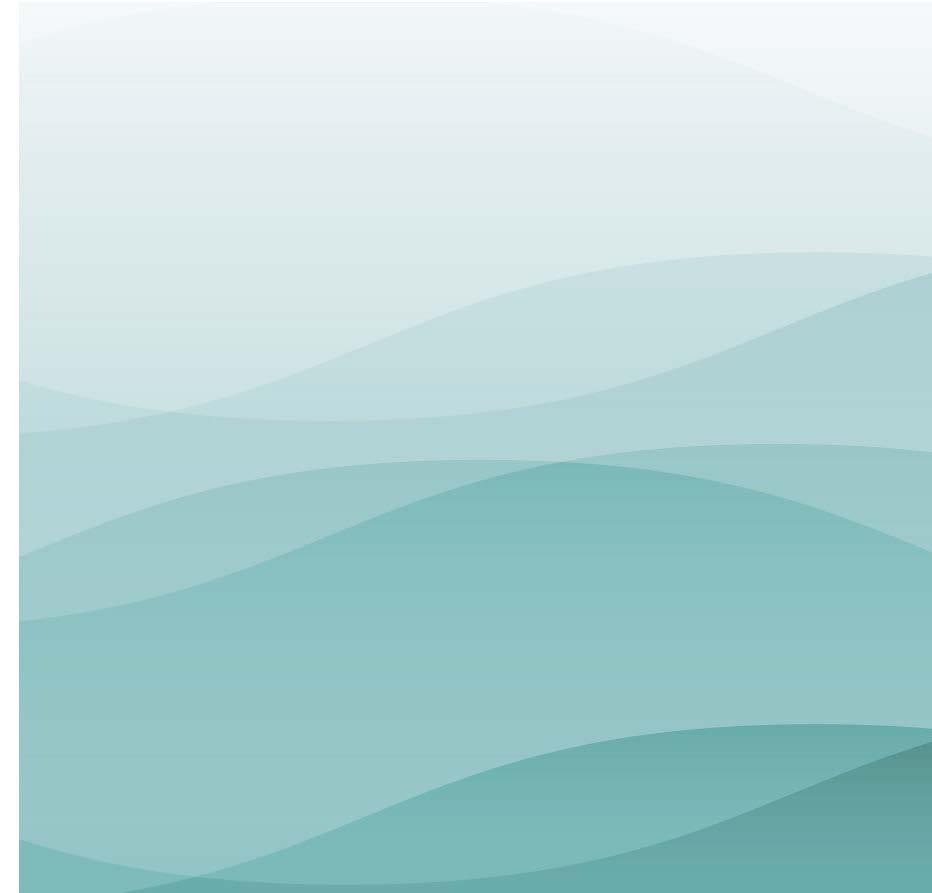
Your Trusted Partner
The Maritime Association Management Company (Maritime AMC) provides comprehensive secretariat services for trade associations operating across all sectors of the global maritime and offshore industries.
When it comes to entrusting the management of your association to a specialist services provider, we are your ideal partner.
Whether your association is a fledgling or established entity, Maritime AMC has the expertise to ensure growth, develop your association and influence regulatory and media agendas on behalf of your membership.
Our directors have extensive maritime industry and trade association expertise, with demonstrable successes in association governance, publishing, conference production and communications. We speak your language and understand the maritime world.
Maritime AMC currently provides full secretariat services to the Association of Bulk Terminal Operators (ABTO) and previously to the Clean Shipping Alliance 2020 (CSA 2020).

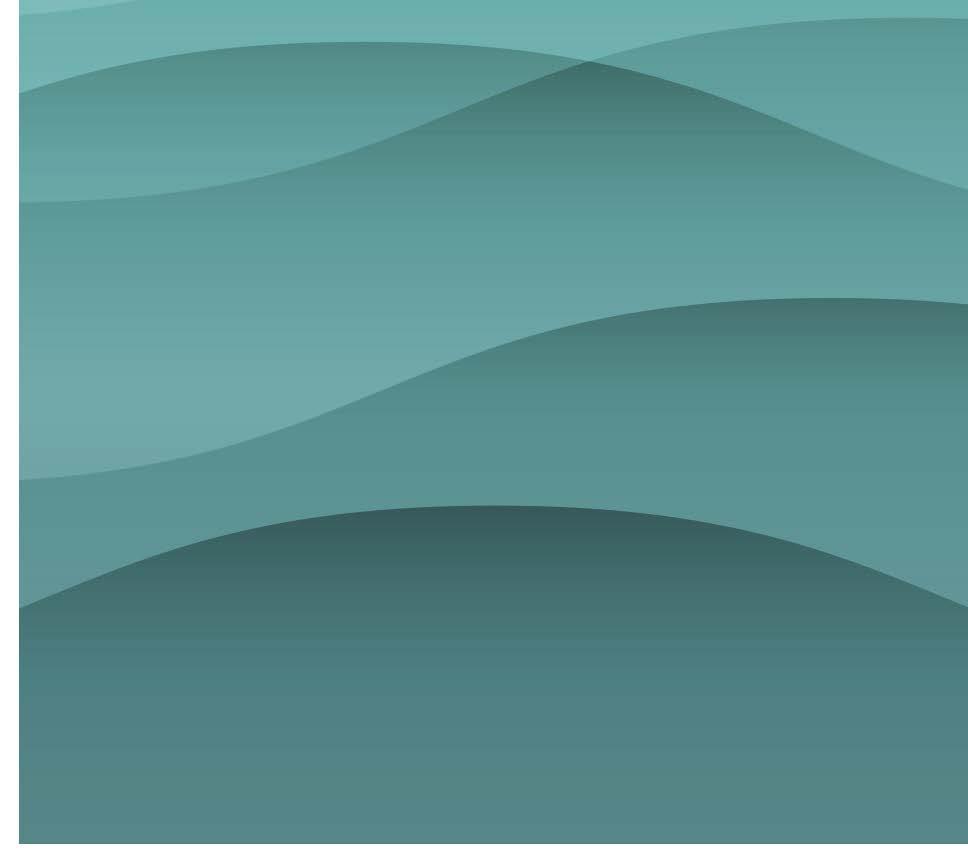
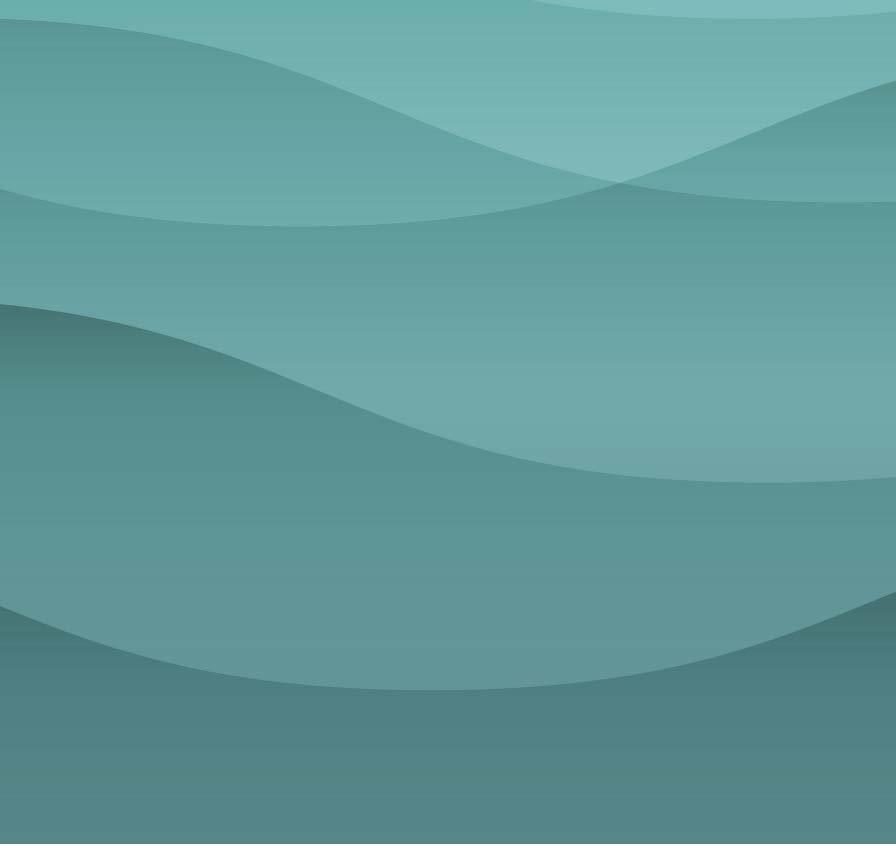
AMC Ltd 35 Beacon Drive, Newton Abbot
1GG
+44 (0) 1626 681103
info@maritimeamc.com
www.maritimeamc.com Maritime
TQ12
T.
E.
to produce a marine gas oil when compared with a residual fuel. In fact, the additional energy is in the range of between 10% and 20%. This means that using EGCS simply reduces the wellto-wake CO2 footprint since 2020 by at least 10%. This is a real and permanent CO2 reduction benefit, estimated to be in excess of 0.5bn tonnes of CO2 between 2020 and 2024.
A research article of the interaction of exhaust gases on human tissues was published by PLOS ONE in 2016. A leading researcher and contributor to the article, Dr Ralf Zimmermann of the University of Rostock, stated that regulating sulphur oxide (SOx) emissions was a poor decision on the part of IMO.
DRIVING FORCE
The driving force for reducing sulphur emissions was initiated in the 1990s by Scandinavian states, on the grounds of acid rain. However, the main contributor to acid raid was land-based sources and not ships. Dr Zimmermann believed that the IMO should have had a focus on particulate matter, which is damaging to human health.
Some of the University’s research identified that the exhaust gas from marine gas oil combustion resulted in a stronger adverse effect on human tissue than that of exhaust gases from HSFO after scrubbing. The studies were intended to replicate the human ingestion of gases deep into the respiratory system.
It is therefore probably likely that the new blends of very low sulphur fuel oil and ultra low sulphur fuel oil will have even more adverse reactions. If this is the case, then the 2020 regulation that capped fuel sulphur content may be having an unexpected and more detrimental effects on human health in ports and harbours.
To date, the IMO has only partially regulated emissions of SOx and nitrous oxides and has completely failed to regulate the many other emissions, gaseous, condensables and solids, discharged into the air from combustion plant exhausts on board ships. Of these discharges the two key elements that affect
climate change are black carbon (BC) and CO2
BC has been discussed ad nauseum for more than 10 years at IMO. The latest progress, if that is what it can be called, is a set of documents in which ships can set out plans to reduce BC emissions. It remains an unregulated emission.
CO2 has been dealt with in a number of ways, of which perhaps the most effective has been to reduce fuel consumption. This has had the double benefit of reducing operating costs. A win all round. There are limits to what further reductions can be achieved with propulsion and hull design and operation.
Alternative fuels are hyped as the next-step solutions. But as ever these are not ‘silver bullet’ solutions.
Biofuels come with a range of operating risks and are significantly more expensive than current fossil fuels. The consequences of 300Mt of biofuel serving the marine bunker market in terms of environmental damage is only considered as fringe prohibitions of certain sourcing, but with no real teeth to ensure adequate enforcement.
Methanol-ready ships make a great headline – but below the headlines there is a paucity of commitment peppered with a lot of aspiration. These are multi-fuel investments that may never be operated with nethanol before the ships go for scrap!
At MEPC 81, IMO seems to have at last accepted the principle of on board carbon capture (OBCC). In fact, the Intersessional Greenhouse Gas Working Group (WG) asked that the topic be put in the hands of the Air Pollution WG.
OBCC could enable a reduction in CO2 emissions by 40% by 2030 –and might even possibly reach 50% reduction. Being at last acknowledged as a possible route to significant CO2 reduction, it still is a challenge in a time frame of only six years to 2030.
The capturing of CO2 is a mature technology already used for decades in the oil and chemical sector. However, on board ship the challenge will be storage. Every tonne of fuel burned
creates about 3.2 tonne of CO2. It is a gas, so in addition to the mass challenge, there is a volume challenge.
Land-based technology for storage is mature and should be able to be ported to shipboard applications dependent upon space constraints and energy requirements.
Where do EGCS fit into an OBCC solution to reducing GHG emissions from shipping?
The most common Carbon Capture systems utilise amines, which readily dissolve CO2. The CO2 is later released from solution and the amine recycled to capture more CO2. It is critical that the solvent liquid is not polluted with soot, oil and other compounds and solids. In other words, pre-treatment of the exhaust gas is required.
Conventional wet or dry EGCS technology is effective in removing SOx, but is only partially effective in removing fine and ultra fine particulate matter and other pollutant compounds.
THE SOLUTION NEEDED
Advanced gas cleaning (AGC) technology provides the solution needed. The earliest marine application of AGC was through an EU-funded project in 2011. Known as the DEECON project, a €4M programme over three years demonstrated that using a wet electrostatic gas cleaning system reduced the water consumption to 20% of normal EGCS systems and produced extremely high efficiency removal of soluble gases and solids from a diesel engine exhaust.
The pollutants were more concentrated in the process water and therefore easier to remove and the smaller volumes of water reduced the capital cost and the operating cost of the AGC system.
The AGC system will be essential in the application of OBCC. The AGC technology has now been trialled on board a ship in the Baltic Sea and also on board a ship in the Mediterranean Sea.
Readers can make their own conclusions regarding the future of scrubbers – albeit that AGC is the evolution to gas cleaning and recycling.
WELCOME CLEAN SHIPPING INTERNATIONAL – Spring 2024 9

Maritime issues are top of the agenda across Europe, with new regulations taking effect – but the industry is advancing towards its net-zero ambitions
GLOBAL NEWS ROUND UP
UK freight forwarders have welcomed the news that the UK’s Competition and Markets Authority (CMA) will not recommend to the Secretary of State for Business and Trade that the current Consortia Block Exemption Regulation (CBER) be replaced by a UK equivalent when it expires on 25 April 2024.
The CMA conducted a robust analysis of the deep sea container shippingmarket, investigating several scenarios, and concluded in November 2023 that the conditions did not warrant the continued existence of a CBER for UK maritime movements – the same view had already been reached by the European Commission.
Second opinions were invited by the CMA and the British International Freight Association (BIFA) did provide some additional information to support its original arguments. The CMA has now upheld its original decision concluding that selfassessment is the best and most effective way for shipping lines to co-operate.
Steve Parker, director general of BIFA
says: “The decision confirms the provisional recommendation made by the CMA in November 2023 and is a sensible conclusion to the ongoing container market public consultation that has been conducted by the CMA since the start of last year.”
In the recent past, the UK’s main trade association for freight forwarding and logistics companies has said that its members are extremely concerned that practices undertaken by container shipping lines, as well as easements and exemptions provided to them, have been distorting the operations of the free market to the detriment of international trade, businesses and consumers.
“While this regulatory change, if implemented, will not end shipping line consortia and alliances, it will allow greater and ongoing scrutiny of such arrangements; and ensure that the lines will be subject fully to competition law. That will be welcomed by BIFA and its members and we call on the Secretary of State for Business and Trade to uphold the Agency’s decision.”
NEWS CLEAN SHIPPING INTERNATIONAL – Spring 2024 10
MARINE MEETING MAKES PROGRESS
Environmental issues have topped the agenda at the International Maritime Organization (IMO) recently where new guidance was agreed on several different issues.
Meeting from 19-23 February, 2024 at IMO’s headquarters in London, IMO’s Sub-Committee on Pollution Prevention and Response (PPR 11) made progress in a number of areas, for submission to the Marine Environment Protection Committee for approval. These included:
» the safe transport of plastic pellets by sea
» best practices for cutting Black Carbon emissions from ships operating in or near the Arctic
» reducing risks of use and carriage for use of heavy fuel oil (HFO) as fuel by ships in Arctic waters
» developing local contingency plans for spills or pollution involving oil or hazardous and noxious substances
» controlling nitrogen oxide emissions.
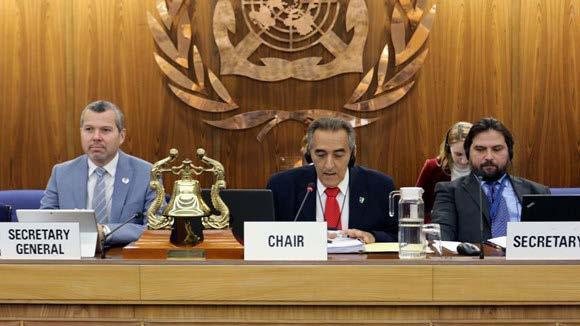
INDUSTRY ADVANCES TOWARDS TARGETS
In an insight piece by Lloyd’s Register (LR) (tinyurl.com/ CSI-LloydsInsight), the class society says that the industry is closely evaluating ordering, fuel and technology options now that there is greater clarity on global emissions reduction targets, carbon pricing and performance measures.
After a year in which decarbonisation regulations were agreed to be sharpened at both International Maritime Organization (IMO) and European Union (EU) level, the maritime industry advanced significantly towards meeting its long-range emissions targets in 2023, according to LR’s analysis of vessel ordering, technology and fuel developments.
At MEPC 80 in July, the IMO agreed a revised greenhouse gas (GHG) emissions reduction strategy with an ultimate goal of phasing out GHG emissions by or around 2050. The first ‘indicative checkpoint’ on that path will be 2030, by which time the IMO strategy calls for a 20%, striving for 30%, reduction in total emissions (based on 2008 numbers) as well as zero- or near-zero carbon fuel use representing 5%, striving for 10%, of total shipping energy use.
Last year also saw the entry into force of new rules facilitating shipping’s inclusion in the EU Emissions Trading System (ETS) – under which emissions on voyages to, from and between ports in the European Economic Area (EEA) will be subject to carbon pricing from 2024 – and FuelEU
Maritime, placing financial penalties on ships using EEA ports if they fail to meet stepped energy intensity reduction targets from 2025. Analysis from LR in March showed the quickly mounting costs these measures will impose on fleets, as well as some of the innovative strategies that will be needed for owners to reduce their exposure.
With the combination of global emissions reduction targets, carbon pricing and performance measures now in place, the dynamics of ship ordering, technology development and fuel supply are shifting rapidly. With just 27 methanol-capable vessels currently in service, 143 new construction orders were placed in 2023, which including previous orders will take the methanol-capable fleet to 227, according to data from Clarksons.
MORE ON ADMINISTERING AUTHORITIES
Since 1 January 2024, the maritime sector has been included in the EU Emissions Trading System (ETS). For shipping companies to be able to report annual emissions as per EU ETS requirements, an administering member state must be appointed. This member state is known as the shipping company’s Administering Authority (AA).
The European Commission has now published Implementing Decision 2024/411. This lists the attributed AA for shipping companies based on information available in THETIS-MRV and the European Union maritime information and exchange system (SafeSeaNet) on 20 November 2023.
For any non-EU registered shipping companies not included in the above list, which own ships that have made a voyage to a European Economic Area (EEA) port since 1 January 2024 and fall into the scope of EU ETS, or which have had responsibility for ETS compliance contractually mandated to them as the ISM DOC holder, the AA shall be (as per EU 2023/2599) either:
The member state from which the first voyage by one of their ships in scope of EU ETS started or finished; or
In the instance where two or more member states had the equal highest number of port calls by their ships in scope of ETS, the AA will be first port call to the member state with the joint highest port calls in scope of ETS.
More information is available on LR’s ETS website pages on ETS, including maritime operator holding account s and the Union Registry, as well as key compliance dates. Vist: lr.org
SUSTAINABILITY REVOLVES AROUND SAFETY
Future sustainability of the sometimes fragile global supply chain must revolve around a fundamental safety culture throughout all operators and organisation involved, according to International freight and cargo handling insurer TT Club.
“The importance of culture within an organisation, particularly where safety is concerned cannot be underestimated,” says TT’s logistics risk manager Josh Finch. “Safety is everybody’s responsibility and everybody has a voice in safety matters. A strong safety culture will positively impact safety performance.”
In an increasingly risk-intense global supply environment, a greater emphasis on safety will help avoid critical incidents
NEWS CLEAN SHIPPING INTERNATIONAL – Spring 2024 11
IMO’s Sub-Committee on Pollution Prevention and Response (PPR 11)
such as fire, cargo damage and vessel loss, which further exacerbate shortages, congestion and human suffering. This message pervades the loss prevention work of TT and is exemplified in a wide variety of studies and reports published in the insurer’s latest review of current and on-going risk trends – A Year in Focus
“TT has recently witnessed a renewed focus and commitment towards loss prevention activities, with additional emphasis placed on the Club’s mission statement to make the industry safer, more secure and more sustainable,” comments loss prevention managing director Mike Yarwood. “Greater safety goes hand-in-hand with enhanced security and consequently sustainability. TT’s mutual ethos demands that we guide those we insure – and indeed the wider industry – in all aspects of risk through the container transport and global logistics supply chain. Via our latest Year in Focus we aim to add to the large cannon of knowledge and guidance.”
AMBREY AND INCHCAPE JOIN FORCES
Ambrey and Inchcape Shipping Services (ISS) have announced a strategic partnership aimed at transforming safety and security in the maritime sector. This groundbreaking collaboration combines cutting-edge technology, global presence, and unmatched expertise to enhance safety measures and drive improved commercial outcomes for the industry.
Through this partnership, Ambrey and Inchcape will jointly offer a comprehensive range of proven and accredited services via Inchcape’s dedicated Survey and Inspection Department, led by vice president Chris Greenwood, including citadel inspections, ship security assessments, anti-piracy ship security assessments, ship security plan reviews, and port security assessments on various projects worldwide. This synergy will enable the maritime industry to bolster safety protocols, enhance operational efficiency, and address potential risks.
DECARBONISATION GROWTH AT NEWPORT
Associated British Ports (ABP) recently announced ambitious plans for the Port of Newport, to support a new era of green growth for the port and the city of Newport.
The company’s ambitions for the Port of Newport are to build on its classic port business to become a cleanmanufacturing and logistics growth cluster, ready for the next industrial age.
ABP’s plans centre around renewable energy, including a focus on harnessing wind and solar sources, linked to hydrogen electrolysis and e-fuels manufacturing plants. It is hoped that these facilities, along with carbon capture and heat networks, will underpin next-generation manufacturing and logistics, attracting a new cluster of businesses looking to future-proof their operations.
Development at the port will also be connected to the rail network and marine logistics, with the ambition of hundreds of highly productive jobs created at the resulting Newport clean growth hub. This will create benefits right across the city and beyond.
While the plan includes innovations to support businesses to future-proof and meet net zero targets, the classic port role will remain. ABP will also be investing in reconfigured access, new cargo-handling equipment, high-efficiency warehousing and ready-to-go development sites, and all with cutting-edge IT.
Ashley Curnow, divisional port manager, ABP, comments: “This masterplan is a bold step towards a sustainable future. Newport has a history of reinvention, and we are embarking on a journey to position both the port and the city of Newport as key players in the evolution towards a decarbonised economy.
“The masterplan foresees a decade-long investment boom, which will help provide superb service to customers, as well as delivering ABP’s commitment, as set out in our sustainability strategy – Ready for Tomorrow – to get our own operations to net zero by 2040.”
CAMPAIGN GROUP CALLS FOR GREEN FOCUS
The announcement of the EU’s plan to reduce its emissions by 90% by 2040 marked a historic day for the climate. But, the announcement makes no mention of a phase-out of oil and gas, even though this is imperative to meet the target, says campaigning lobby group Transport and Environment (T&E) lobby group.
Last December, the COP28 agreement committed to transition away from fossil fuels. The EU played an essential role in getting this language adopted, stating clearly it would get rid of unabated fossil fuels. Yet the Commission’s new communication still projects 46m tonnes of oil equivalent (Mtoe) of unabated oil and gas generation, which it says will mostly be used for long distance transport in 2050. That would be enough to continue powering 900,000 transatlantic flights, adding a needless 140m tonnes of CO2 in the atmosphere, the group says.
“The EU has shown the world how you can turn real climate ambition into powerful industrial policy. Industry players at home and outside of Europe can turn to the EU for production and sales of green tech, as they can be assured of a growing market and predictable demand. But this headline goal will fall flat if it doesn’t come hand in hand with a phase out of fossil fuels and new laws cracking down on the oil majors. Europe will desperately try to meet a 2040 goal whilst still feeding on fossil fuels. But you simply can’t outrun a bad diet”, Sofie Defour, climate director at T&E, explains.
“The flaws and loopholes in the text are all fixable. The EU shouldn’t undermine its own effort to slash millions of tonnes of CO2 by caving into the pressure of a handful of polluting industries. It’s time to put an end to uncontrolled growth and profit of transport’s biggest polluters and instead focus on helping them go green by 2040,” Defour concludes.
GAC OPENS SOUTH KOREAN OFFICE
GAC Group, a leading provider of shipping, logistics and marine services in the Asia-Pacific market, has opened its first office in Seoul in a strategic move which underscores its commitment to strengthening operations to serve the growing, dynamic South Korean market.
NEWS CLEAN SHIPPING INTERNATIONAL – Spring 2024 12
South Korea’s shipping industry accounts for more than 10% of global maritime trade. Exports from the country are set to rise by 7.9% in 2024 to reach US$680bn, according to forecasts by the Korea International Trade Association, while imports are expected to grow 3.3% in the same period.
“We see great potential for growth in the Korean market and are committed to expanding our services while seeking synergies with our operations in the region,” says Daniel Nordberg, GAC’s group vice president – Asia Pacific & Indian Subcontinent.
South Korea is looking to tap into renewable offshore wind energy to meet its net-zero targets. It aims to install 14.3 GW of offshore wind by 2030, which is expected to attract a large amount of investment in South Korea’s supply chain to bolster its renewable efforts over the coming years, GAC says.
While the company’s core focus is on ship agency and related shipping services, including dry docking support, husbandry and crew change services, the new office also enables it to respond to presents exciting opportunities arising in the renewable energy field, particular offshore wind energy.
ABP FILM SNAPS UP AWARD
The Voyage, a sustainability film created by Associated British Ports (ABP) in collaboration with creative agency, Polar Media, has won Bronze in the ‘Best Animation’ category at London’s prestigious Lens Awards.
Created by ABP, the UK’s largest port operator, the film helps tell the story of ABP’s sustainability journey and celebrates the launch of the company’s first ever sustainability strategy ‘Ready for Tomorrow’. With a female protagonist, the film invites audiences to see the world through the eyes of a woman who progresses through different stages of her life and maritime career, whilst witnessing and helping deliver various green energy infrastructure projects enabled by ABP’s ports.
She travels from Immingham up on the Humber, where she sees the growth of green hydrogen and carbon capture and storage to Port Talbot in Wales, where the exciting floating offshore wind industry is in bloom. Along the way, she meets different animals from a seal to kittiwakes, all serving as a reminder that industrial progress needs to go hand in hand with protecting biodiversity to create a sustainable future.
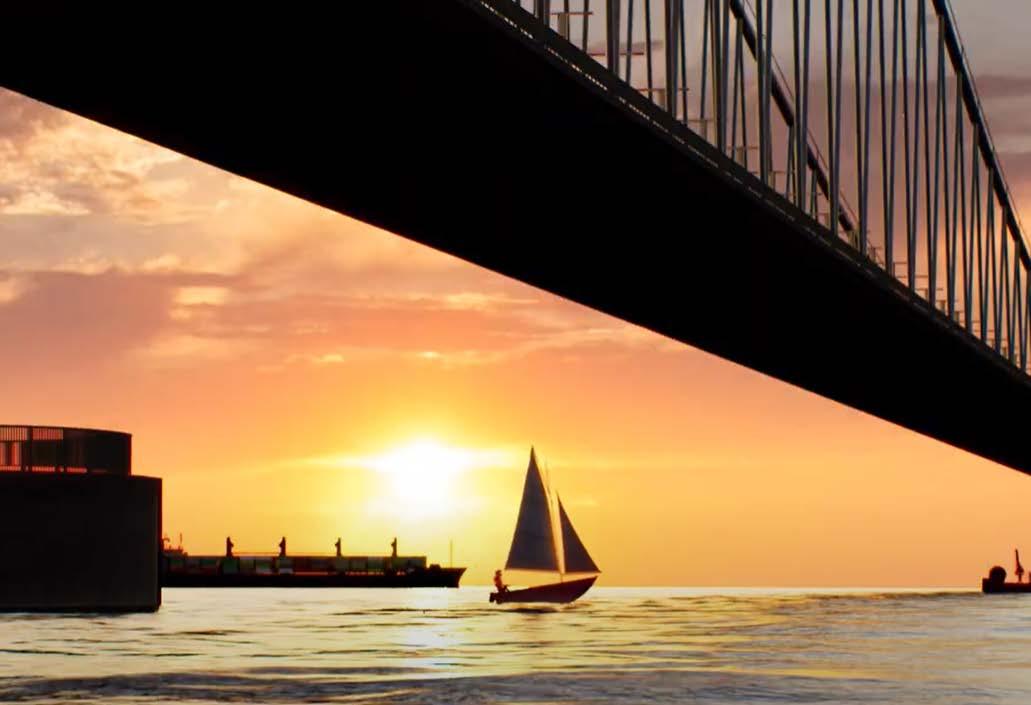
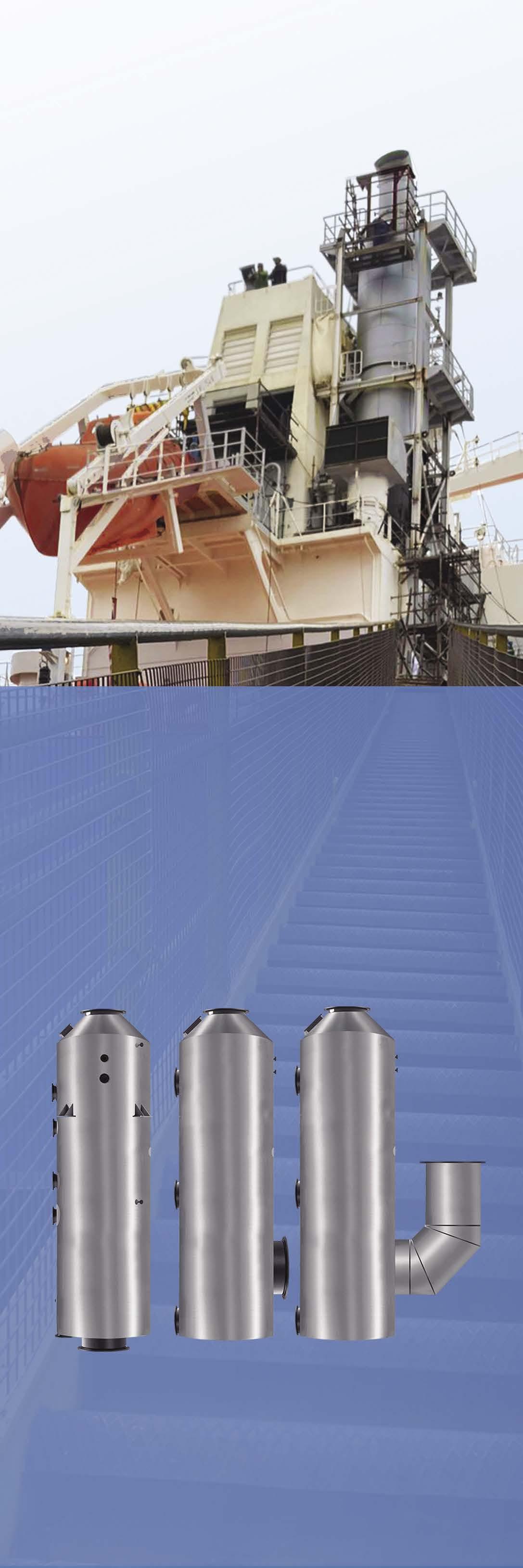
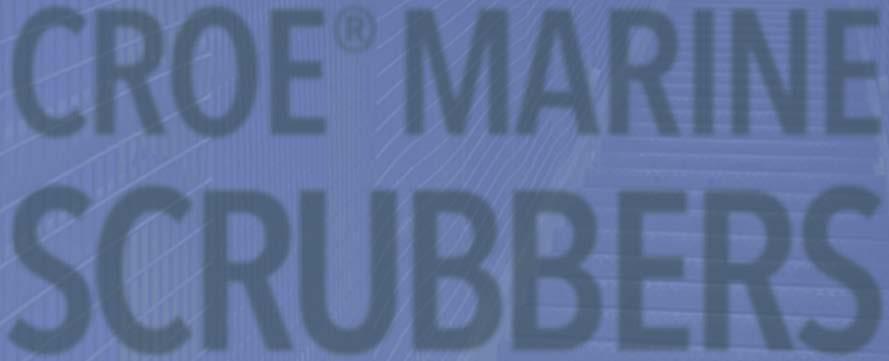
CLEAN SHIPPING INTERNATIONAL – Spring 2024 NEWS 13
dphilibert @croceanx.com BUILT TO SCRUB ENGINE EMISSIONS CROE® MARINE SCRUBBERS CR Ocean Engineering • Six Campus Dr Parsippany, NJ 07054 USA 2024_CROE_CleanShippingInternational_HalfPgAdvert.indd 1 2/8/24 8:55 AM
DANFOSS IXA: LEADING MARITIME EMISSIONS MANAGEMENT
In today’s maritime sector, the imperative to reduce emissions and enhance sustainability is essential. Danfoss IXA, a subsidiary of the Danfoss Group, is pioneering solutions that revolutionise emissions management in the industry, with a focus on advanced analyzers for precise environmental monitoring.
MES 1002 SO 2/ CO 2 ANALYZER
One such groundbreaking analyzer is the MES 1002, designed specifically for scrubber applications. This SO2/ CO2 analyzer is a testament to Danfoss IXA’s commitment to innovation and addressing industry-specific needs. Highlighting its features:
» Longest calibration intervaltwo-year exchange service programme: The MES 1002 has the longest calibration interval in its class, with a convenient two-year exchange service programme.
» Continuous reference spectra setting – no on-board service technician required: With innovative zero drift technology, the MES 1002 eliminates the need for an on-board service technician. This advanced feature ensures accurate and stable measurements over time, providing peace of mind to operators and streamlining maintenance processes.
» DNV type approval certification: The MES 1002 holds DNV type approval certification, confirming its compliance with industry standards and regulations. This prestigious certification underscores the analyser’s reliability, accuracy, and suitability for maritime applications.
» Effortless single-unit installation: Installation of the MES 1002 is effortless thanks to its singleunit design. This streamlined installation process saves time and resources, allowing vessel operators to quickly integrate the analyser into their emissions management system.
Pioneering solutions that revolutionise emissions management
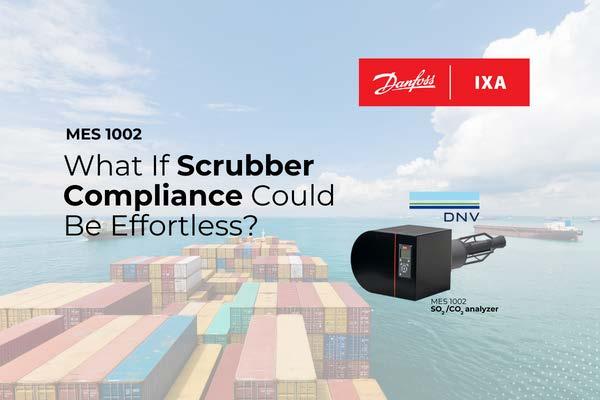
COMPANY PROFILE CLEAN SHIPPING INTERNATIONAL – Spring 2024 14
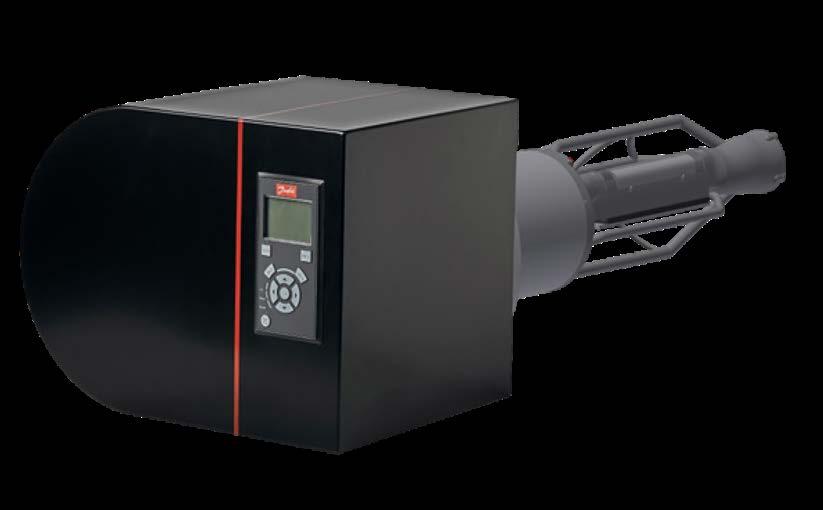
You can request tailored training or webinars for you and your team, designed to enhance your understanding and utilisation of Danfoss IXA’s advanced analyzers and solutions. Visit our training portal at: https://danfoss-ixa.com/training/
EMISSIONS COMPLIANCE
Danfoss IXA’s analysers are engineered to meet the rigorous demands of emissions compliance regulations, offering accurate measurements of pollutants such as nitrogen oxides, sulphur oxides, and carbon dioxide (CO2). By providing real-time data on emissions levels, operators can ensure adherence to regulatory requirements and proactively address any deviations.
INDUSTRY COLLABORATION
Danfoss IXA actively collaborates with industry stakeholders and regulatory bodies to drive innovation and shape sustainable practices within the maritime sector.
Through partnerships and knowledge-sharing initiatives, the company contributes to the development of industry standards and best practices for emissions monitoring.
ABOUT DANFOSS IXA:
Danfoss IXA, an innovative force within the Danfoss Group since April 2009, leads the way in the maritime industry in cutting-edge exhaust emission monitoring solutions.
We develop state-of-the-art exhaust emission monitoring solutions to the maritime industry.
Danfoss IXA is dedicated to creating a more sustainable shipping industry.
For more information, visit: danfoss-ixa.com
Contact us: ixa@danfoss.com
Cutting-edge exhaust emission monitoring solutions

COMPANY PROFILE CLEAN SHIPPING INTERNATIONAL – Spring 2024 15
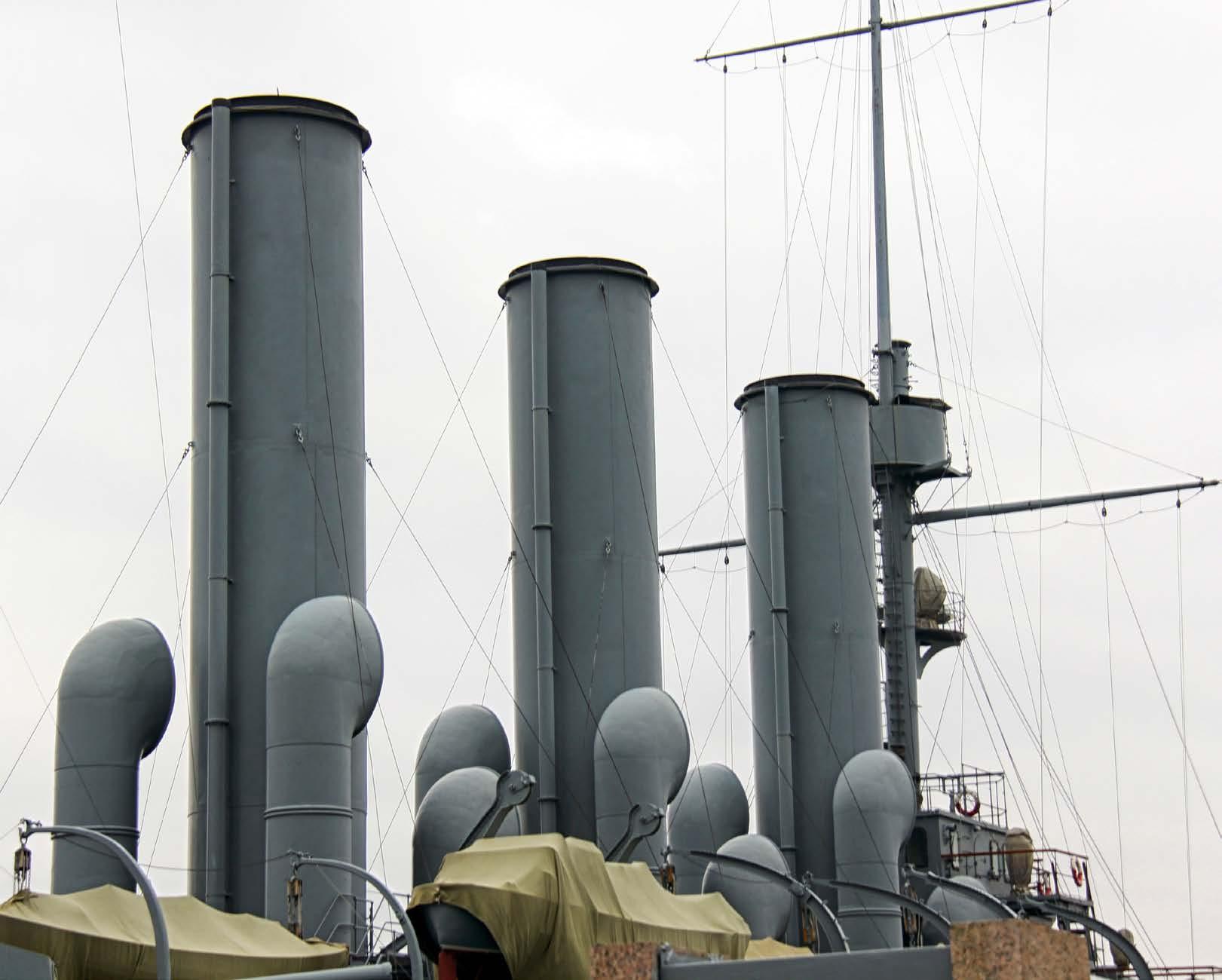
MEETING THE CHANGES
As the industry aims to ensure it is up to date with new environmental demands, an increasing number of shipowners are installing scrubbers as a solution to the challenges
What role will exhaust gas abatement systems have as the industry moves towards decarbonisation during the coming years? Wärtsilä exhaust treatment’s director, sales, Kashif Javaid, recently gave his views on the benefits of scrubbers going forward, stressing the importance of using multiple technologies to tackle the issues, including carbon capture and storage (CCS)ready scrubbers in tandem with CCS units going forward.
Scrubbers have always been one means of attempting to balance compliance with new regulations and profitability and Javaid says it is critical to ensure that existing ships are dealt with during the path to decarbonisation. “It will be too expensive and logistically unfeasible to recycle and replace the current merchant fleet wholesale, and many vessels built 10 years ago may have to last through to 2035 or possibly beyond, dealing with considerable regulatory change in the interim period,” he says in an opinion piece on the Wärtsilä website.
The solution, he believes, is to adopt proven technology that can be used for the existing fleet over the next few years, and avoid scrapping vessels that still have a working life ahead of them but need to be compliant with new regulation.
“Favourable economics towards scrubbers create a strong case for implementing a retrofit strategy. As has been well documented, shipowners who invested in scrubbers prior to the 2020 global sulphur cap are enjoying a competitive advantage. There are few signs that this will abate, with payback models demonstrating currently that returns can be made in months, which creates a huge driver for continual uptake of exhaust gas abatement solutions,” he says.
Also, he says: “Beyond tackling sulphur oxides, scrubbers have now become a platform from which multiple technologies are working together in the stack and throughout the exhaust chain. This includes tackling nitrogen oxide emissions by adding selective catalytic reduction systems or exhaust gas recirculation systems to ensure
EXHAUST GAS CLEANING SYSTEMS CLEAN SHIPPING INTERNATIONAL – Spring 2024 16
compliance with MARPOL Tier III requirements. In addition, scrubbers can reduce particulate matter 2.5 levels below even standard landbased requirements and a filter can be applied to capture microplastics.
“Most excitingly, scrubbers can now provide the basis of carbon capture and storage systems – underlining the modern scrubber’s position as a multiuse technology platform,” he says.
“With the International Maritime Organisation’s carbon dioxide (CO2) reduction timelines set for 2030 and 2050, and the European Union’s Emissions Trading System putting a price on CO2 from ships from 2024, low-carbon, alternative fuels will represent only a small single digit fraction of the global fleet’s fuel of choice over the next decade.”
SCRUBBERS IN ACTION
Leading tanker shipping company Stena Bulk has recently announced the latest expansion of its fleet with new long-term charter agreements for four state-of-the-art newbuild eco medium range (MR) tankers.
Two of the vessels, Stena Continent and Stena Conquest, will be delivered from Hyundai Mipo by the end of 2025. Two further eco MR tankers, Stena Contender and Stena Concept, will follow in 2026. All vessels are set to use the South Korean yard’s latest eighth generation MR tanker design, which has been recognised for its efficiency performance.
The tankers will have top-of-theline fuel consumption, consuming just 15 metric tons of fuel per day when laden at 13 knots. This efficiency will help to underpin Stena Bulk’s commitment to environmental sustainability while maintaining optimal performance. The vessels are also scrubber fitted to ensure global sulphur cap compliance.
Stena Convoy and Stena Conductor were delivered in 2022 to a South Korean yard and chartered from a Japanese owner, like these new additions to the Stena Bulk fleet. When they were delivered, Stena Convoy and Stena Conductor became the most fuel-efficient MR tankers at sea, the company claims.
Taking six long-term charters in total from Japan into the Stena
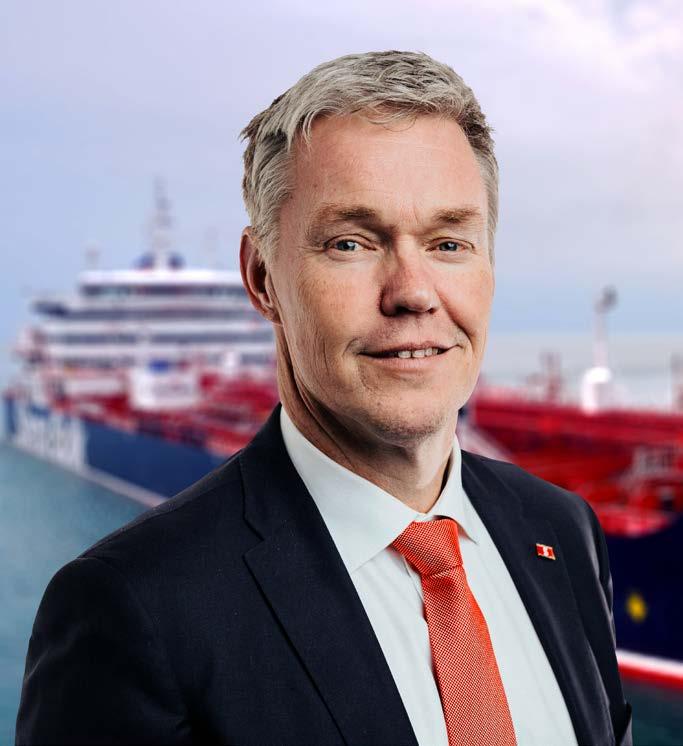
Bulk fleet underscores the country’s importance to the organisation’s longterm and flexible fleet strategy.
Erik Hånell, president and CEO of Stena Bulk, comments: “Our long-term fleet expansion strategy always requires us to act flexibly and intelligently with the best interests of our customers at the forefront. The current landscape of costly short-term time charters means we need to think differently, which is why we are proud to sign these four long-term newbuild charter deals.
The sustainability performance of these vessels will help to underpin our sustainability strategy
“The market-leading sustainability performance of these vessels will help to underpin our sustainability strategy, but the stability that these long-term deals afford will create assurance for our customers globally.
“We look forward to continuing to work pragmatically in the coming months and years, leaving no stone unturned in our pursuit to create a truly market leading tanker fleet.”
INSIGHT INTO MARKET
Bosson Research has recently published Global Ship Exhaust Gas Cleaning System Market, which is available for purchase.
The global ship exhaust gas cleaning system market size was estimated at $5,274.04m in 2023 and is projected to reach $9,343.28m by 2029, exhibiting a compound annual growth rate of 10% during the forecast period.
This report provides an insight into the global ship exhaust gas cleaning system market, covering all its essential aspects.
This ranges from a macro overview of the market to micro details of the market size, competitive landscape, development trend, niche market, key market drivers and challenges, strengths, weaknesses, opportunities and threats analysis, Porter’s five forces analysis, value chain analysis, and so on.
The analysis considers the competition within the industries and looks at strategies for the competitive environment to enhance the potential profit.
The report structure focuses on the competitive landscape of the global ship exhaust gas cleaning system market, this report introduces in extensive detail the market share, market performance, product situation, operation situation, and so on of the main industry players, which helps the readers in the industry to identify the main competitors and the competition pattern of the market.
The research report includes specific segments by region (country), manufacturers, type and application. Market segmentation creates subsets of a market based on product type, end-user or application, geographic, and other factors.
By understanding the market segments, the decision-maker can leverage this targeting in the product, sales, and marketing strategies.
Market segments can power product development cycles by informing how you create product offerings for different segments.
The report costs $3,000 and is available from: bossonresearch.com.
EXHAUST GAS CLEANING SYSTEMS CLEAN SHIPPING INTERNATIONAL – Spring 2024 17
Erik Hånell, President & CEO of Stena Bulk
PURETEQ: SCRUBBERS’ CRUCIAL ROLE IN GREEN FUEL TRANSITION
The scrubber market is experiencing a resurgence due to uncertainties surrounding the availability of green fuel.
Predicting the type of fuel that will power ships has become nearly impossible, leading renowned shipowners to seek secure capacities. However, only a fraction of the needed capacity appears to be available in the foreseeable future. In the interim, ships must prioritise securing their seaborn logistics.
Taking advantage of the competitive situation in the scrubber market is MT Maritime and MTM Shipmanagement, which have successfully completed the installation and commissioning of their second scrubber from PureteQ on their vessel, the MTM New York
This step follows the successful installation and commissioning of the
company’s first hybrid-ready scrubber system from PureteQ on the MTM New Orleans a few months ago. The second installation was carried out under the continued stewardship of the shipowner’s representative and technical director, Prashant Lokhande, at the same Chengxi Ship Building and Repair yard in China.
PURETEQ HIGHLY RECOMMENDED
Lokhande, managing this project, recommended PureteQ as the scrubber system maker and project partner based on several crucial selection criteria: the system had to be optimised for fast installation to minimise shipyard time; be the most energy-efficient on the market; possess an advanced control system with real-time remote access and onboard
analytics; requiring minimum changes, if any, to the existing vessel structure; and offer professional and costeffective service and spares throughout the asset’s lifespan.
Quality was absolutely paramount, considering that a scrubber is a significant investment meant to outlast the vessel. The system design also needed to be suitable for upgrade to a hybrid/closedloop system to meet more stringent legislations expected in the future, and aftersales service had to be available globally to ensure compliance and optimisation.
The final requirement was reasonable CAPEX and minimum inservice OPEX cost projected over the first 10 years of the system’s life.
The chosen scrubber from PureteQ fulfilled all the above requirements.
A SIMPLE SOLUTION TO A GLOBAL CHALLENGE
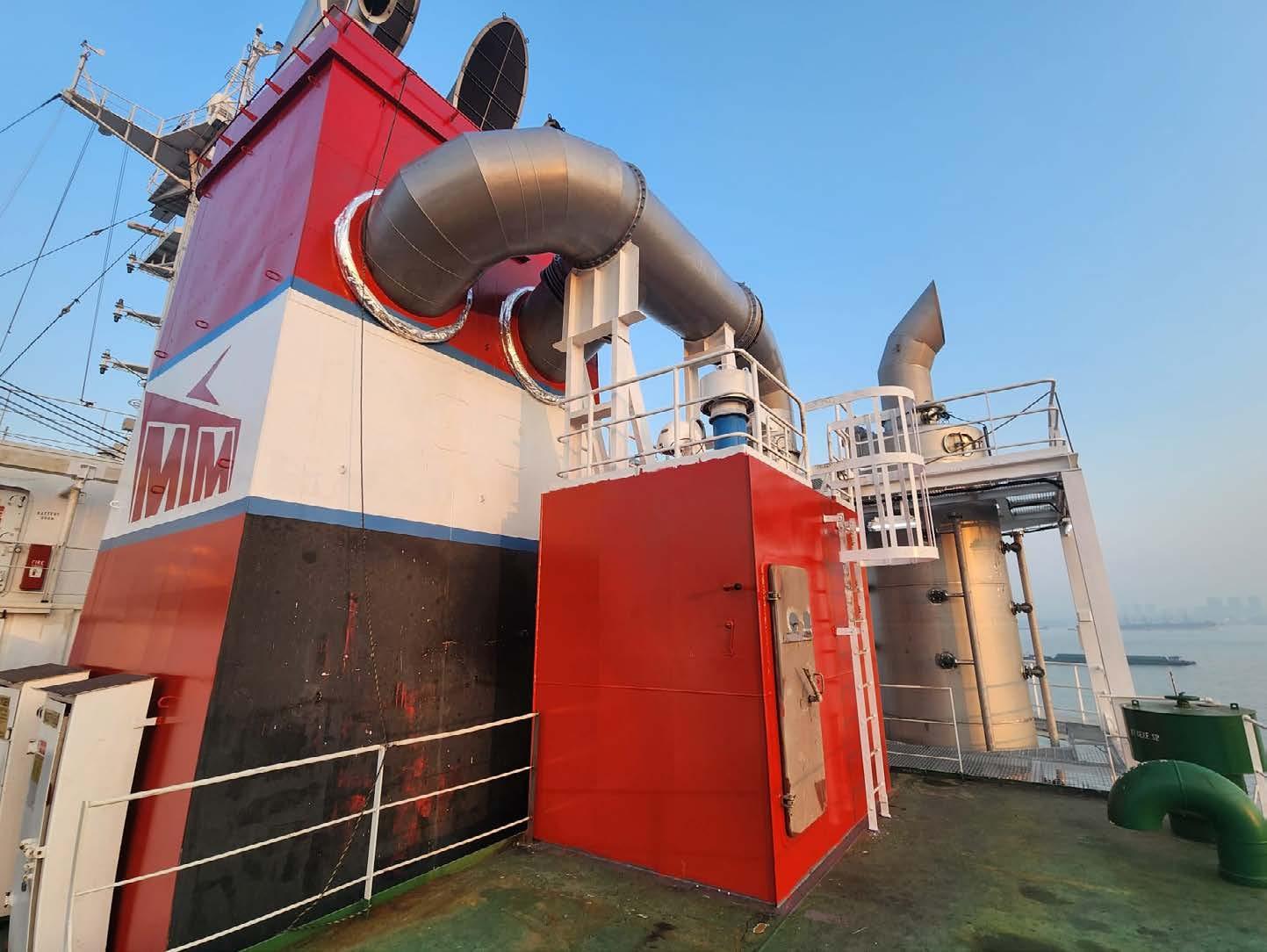
COMPANY PROFILE CLEAN SHIPPING INTERNATIONAL – Spring 2024 18
Deck house where sensitive equipment and PureteQ’s outdoor U-type scrubber tower are placed
INCREASING ENERGY EFFICIENCY
PureteQ’s scrubber system was issued a type approval certificate from Class NK and commended for its automated control and monitoring systems that reduce the need for human intervention to the bare minimum.
Installation of these scrubber systems will not only reduce fuel costs, but also substantially reduce the emission of carbon particulate matter and black carbon, also emitting less CO2 well-to-wake as a side benefit. The PureteQ system is partly carbon capture ready and may thus be upgraded later if feasible and infrastructure for captured carbon is made available at major trading ports on a worldwide basis.
“It is early days,” says Lokhande. “Assessment needs more time in service. However, both scrubber systems are performing as intended, and operations have been trouble-free. While a few glitches did occur during installation, commissioning and final certification post-commissioning went well. Overall, the owner’s choice of PureteQ as makers has proved to be satisfactory.”
MTM New York is presently at sea between Singapore and Porto De Suape in Brazil with the scrubber in operation and saving fuel costs for the owner.
Anders Skibdal, CEO of PureteQ, is proud of being selected by MTM Shipmanagement and looks ahead to possible more retrofits: “We look forward to collaborating with MTM Shipmanagement in the future, not least to help them increase their ships’ energy efficiency and thereby minimise their carbon footprint.”
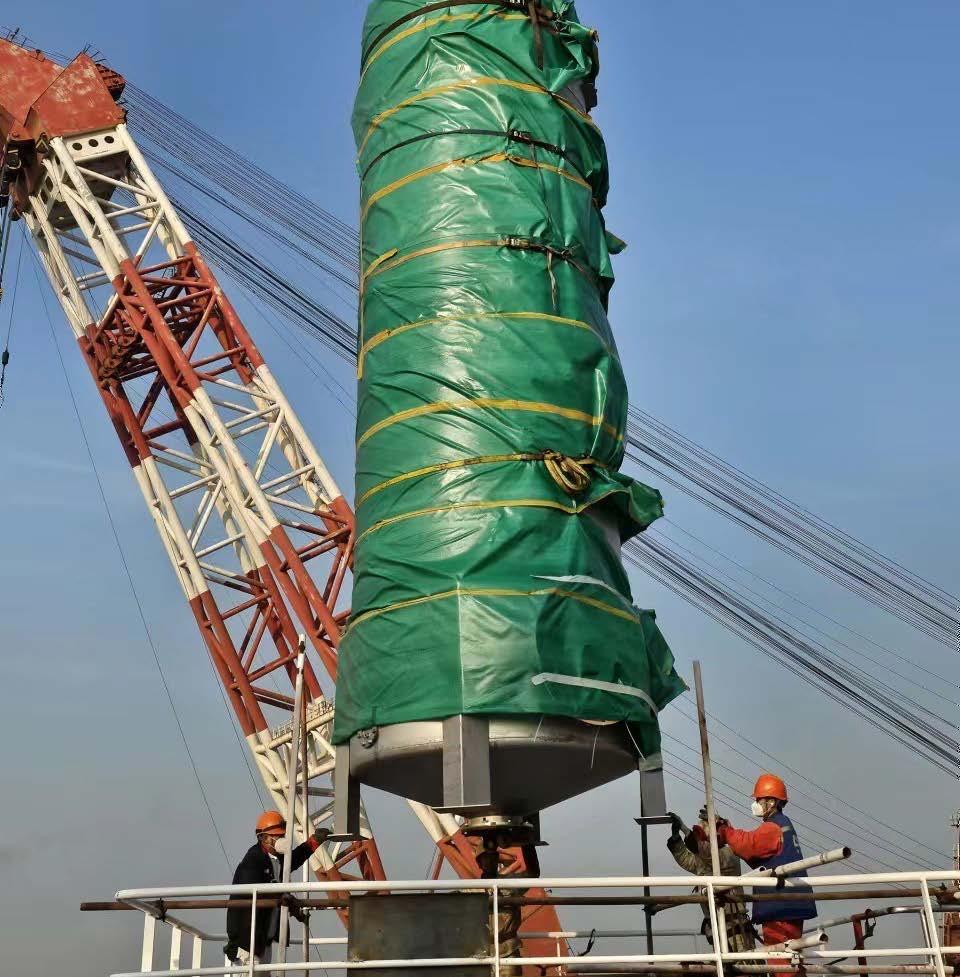
For more information, contact:
Anders Skibdal, CEO PureteQ Group A/S
Tel: + 45 4017 1400
Email: anders@pureteq.com pureteq.com
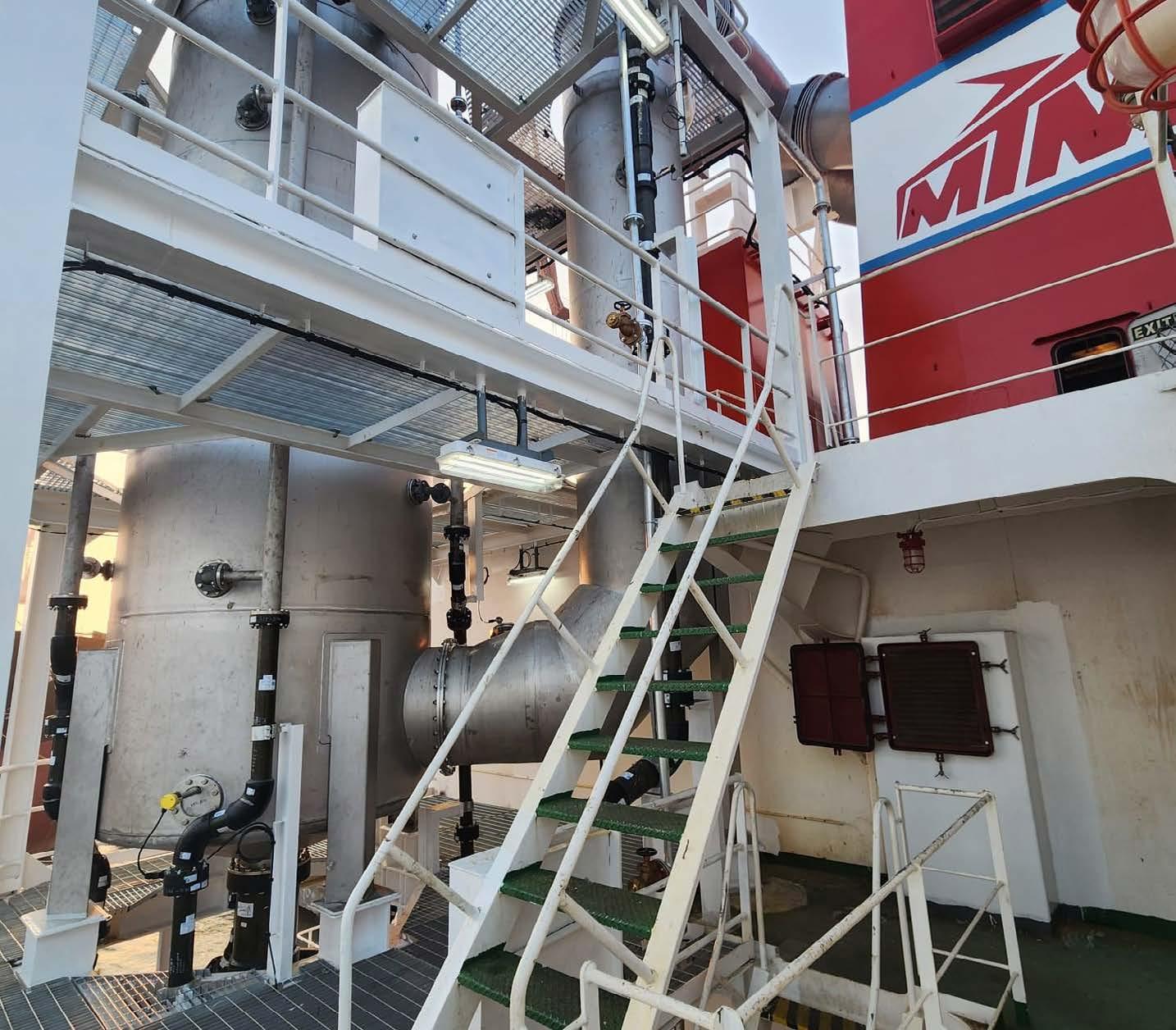
COMPANY PROFILE CLEAN SHIPPING INTERNATIONAL – Spring 2024 19
Installation of PureteQ scrubber tower
PureteQ’s maritime scrubber systems can support ships of any size or trade pattern and now come as onboard carbon-capture-ready scrubbers
CR OCEAN: LEADING THE INDUSTRY TOWARDS A SUSTAINABLE FUTURE
CR Ocean Engineering LLC (also known as CROE®) is a leading air pollution reduction technology supplier, offering a full range of systems customised to clients’ specific needs. With its roots dating back to 1917, CROE is the marine-focused entity of one of the oldest and most reputable air pollution control companies in the world. Its core team is based at the company’s global headquarters in New Jersey, US, with shops and sales offices located across the globe.
In January 2020, a stricter new MARPOL Annex VI compliance ceiling came into effect, limiting a maximum sulphur content of 0.5% in marine fuels globally, as part of the race against time to reduce the shipping industry’s
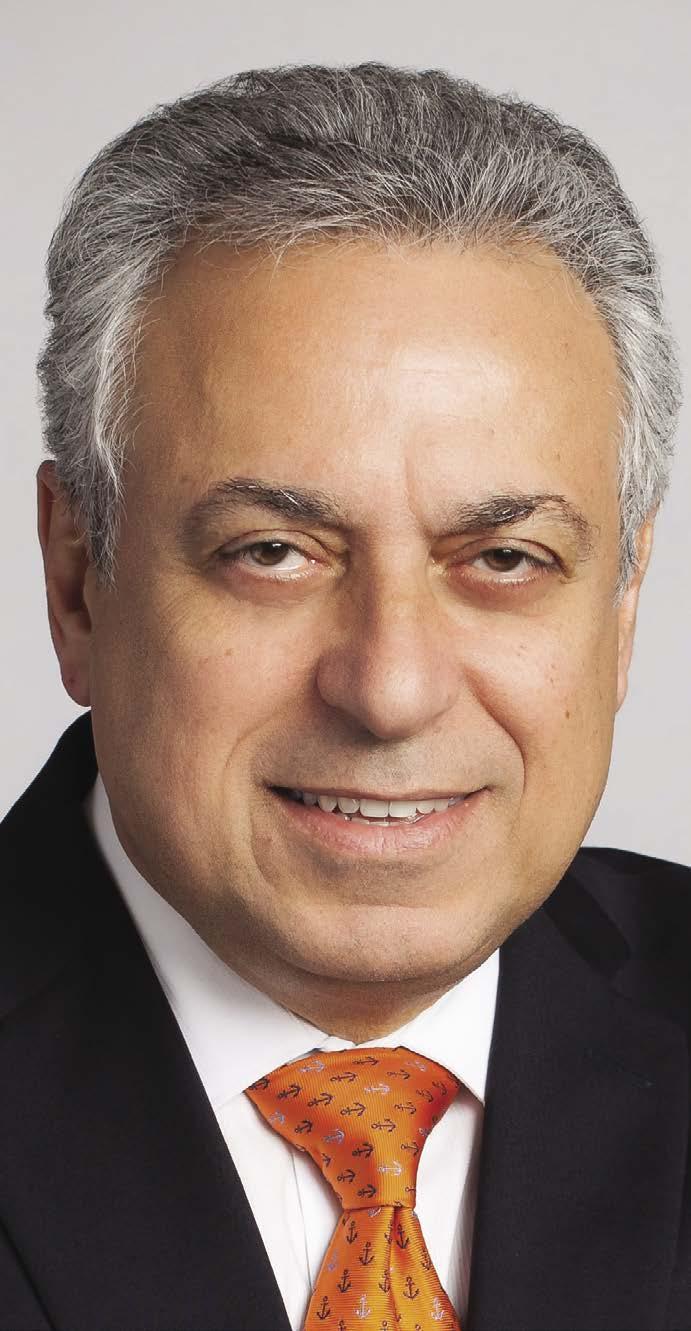
emissions. This came five years after an even stricter MARPOL Annex VI 0.1% sulphur regulation came into effect for areas of the Baltic, North Sea and English Channel. The 0.1S regulation will then expand to the Mediterranean in May 2025. To prepare for these regulations, in 2013 CROE began offering its proven state-of-theart scrubbing system to the shipping industry.
This scrubbing system is a lowcost, highly reliable alternate to the premium costs of high sulphur fuel. With a CROE scrubbing system, shipowners can continue using the lower cost high-sulphur fuel oil even in Environmental Controlled Areas (ECAs).
CROE has no doubt helped to introduce scrubbing technology to the shipping industry. About 10% of all ships sailing the seas currently rely on scrubbers, some retrofitted and others installed in new builds. CROE believes that the best and most expeditious way to achieve lasting environmental benefit is when both a shipowner and the environment gain from the process.
The CROE scrubbing system is designed to be lighter, smaller, more efficient and more cost effective than most competing scrubbing systems. It requires low backpressure, has an all-metal construction, requires no bypass, replaces the silencer and can run dry without concerns. A complete washwater treatment system is also
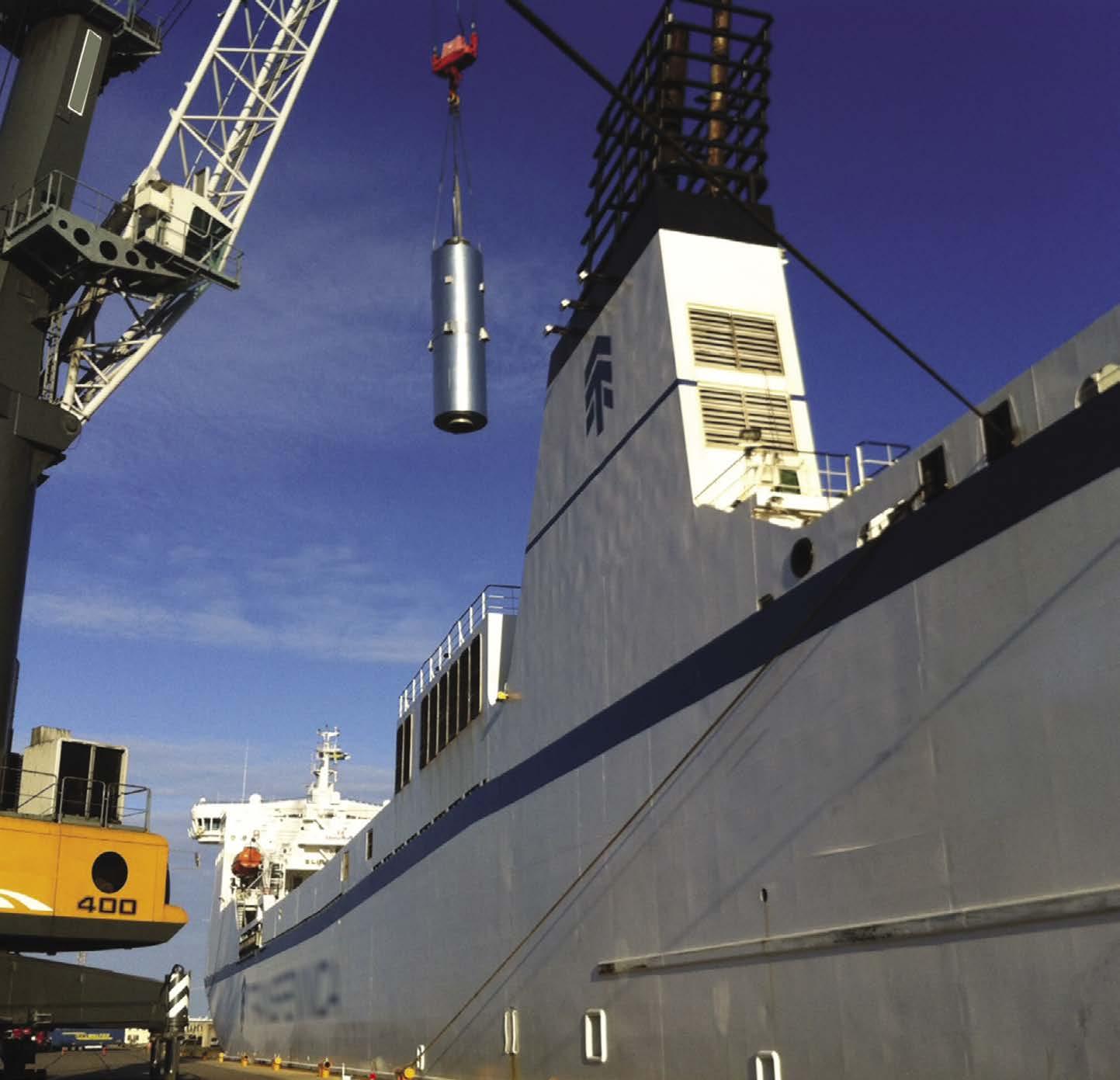
COMPANY PROFILE CLEAN SHIPPING INTERNATIONAL – Spring 2024 20
Nick Confuorto, Senior Advisor
provided by CROE as part of the scrubbing system.
From bulk carriers travelling the Great Lakes in North America to cruise ships, cargo vessels, RoRos and ferries in Europe, CROE scrubbers are meeting exhaust emissions challenges and providing healthy ROI for their clients.
CROE’s scrubbing systems are available in three standard configurations, customisable to a ship’s requirements: open loop (seawater), closed loop (freshwater) or hybrid configurations (able to switch from one configuration to the other on demand).
» Open-loop (hybrid ready): oncethrough scrubber using sea-water
» Closed-loop: a recirculating scrubber using seawater (or freshwater) with caustic
» Hybrid: a combination of both designs for maximum flexibility.
CROE scrubbers normally replace the silencers. They are small, have a compact configuration, have flexibility of design and are one of the most reliable in the industry. They can be installed inside or outside the ship’s funnel.
Some of the features of CROE’s scrubbing systems include:
» Option of bottom entry I-Type, side entry L-Type or our U-Type entry designs to better fit any funnel configuration and simplify engine
exhaust gas duct, with or without a bypass. The CROE system can also be installed outside the funnel, if that is preferred, to maximise pre-assembly and expedite the installation.
» Strategically configured exhaust gas inlet and scrubber drainage to eliminate any potential water backflow to the engine.
» Eliminated circulation water storage from the bottom of scrubber vessel to reduce weight at the higher elevations, improving stability.
» Alloy construction (external and internal) to extend the life of the system and to allow the exhaust gas to travel through the scrubber system at high temperatures in case of dry-run conditions without a bypass.
» Used proprietary internals designed specifically to increase contact area with lower liquid flows to save on typical pumping costs associated with some scrubber designs.
» Optional proprietary CausticAssist™ feature for open-loop assist operating in low-alkalinity areas.
Over many installations in operation, CROE’s design has proved to be very reliable and effective for all clients. In addition to its long-established scrubbing systems, CROE’S research and development department is actively developing technological solutions in the areas of fine particulate controls, black carbon reduction and CO2 capture/sequestration.
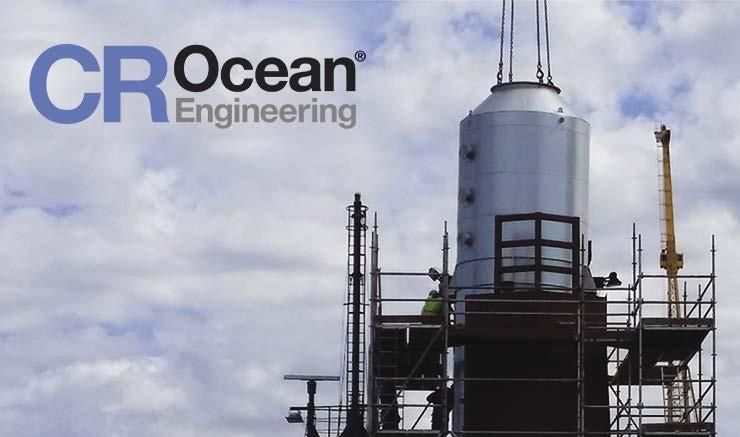
The new world of decarbonisation will open many opportunities for environmental companies such as CROE. Scrubbing CO2 from the ship engine’s exhaust gas is going to become a common occurrence and we are getting ready to be a major player in that sector.
Totally committed to clients, CROE is currently analysing the track record of our established scrubbers, how they have been working and what the ship crews think about our systems.
As artificial intelligence gains acceptance as an industry tool, CROE will be there alongside the science. It is presently investigating how to possibly use that tool to the industry’s advantage.
CR Ocean Engineering LLC is a member of the Exhaust Gas Cleaning Systems Association (EGCSA)
For more information, contact: Dominique Philibert, President & COO
Tel: +1 (973) 455-0005 ext. 123
Email: dphilibert@croceanx.com croceanx.com
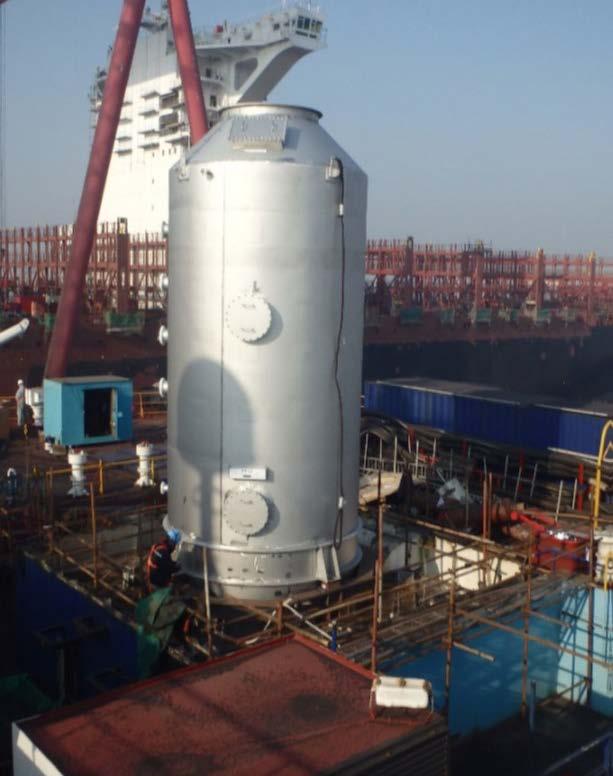
COMPANY PROFILE CLEAN SHIPPING INTERNATIONAL – Spring 2024 21
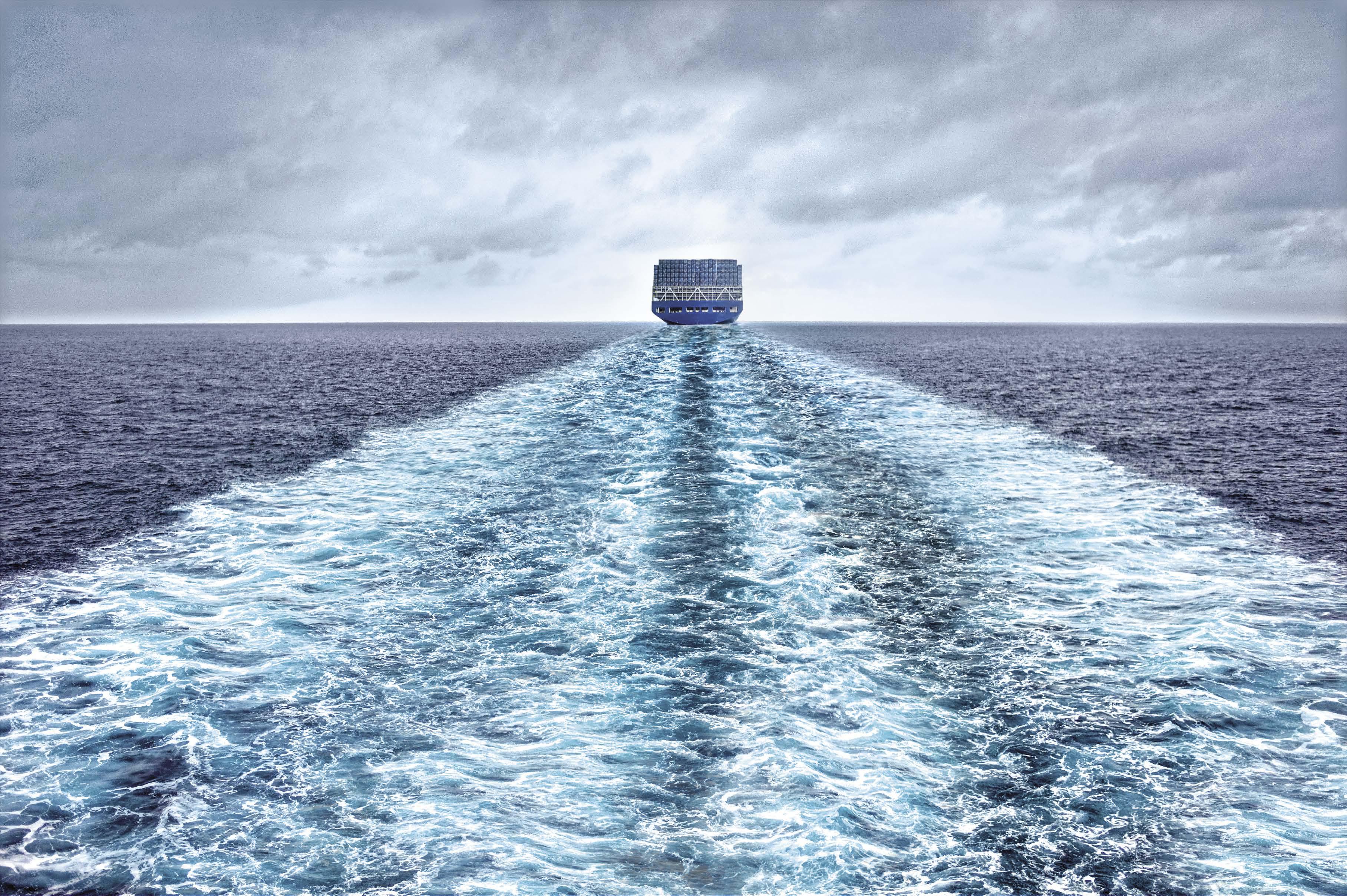
Paint your way to energy efficiency
High-performance hull coatings are one of the single most impactful ways to improve the energy efficiency of a vessel – and one of the simplest and fastest ways to maintain a good CII rating as well as increase the reference speed for the purpose of EEXI.
With over 4,000 vessel applications, the Hempaguard® range of hull coatings is one of the most trusted solutions on the market and the only one that offers you patented high performance silicone-hydrogel ActiGuard® technology.
The result is an exceptionally low hull roughness and a very long-lasting antifouling effect. It not only leads to an immediate speed increase, resulting in fuel savings of up to 20 per cent over a 5-year period, it also ensures a very low average speed loss down to 1.2 per cent and one of the shortest payback periods possible.
Combine Hempaguard with SeamFlow, the first ever application weldfairing system to maximise your benefits on bunker savings and energy efficiency of your vessels.
hempel.com/markets/marine/cii
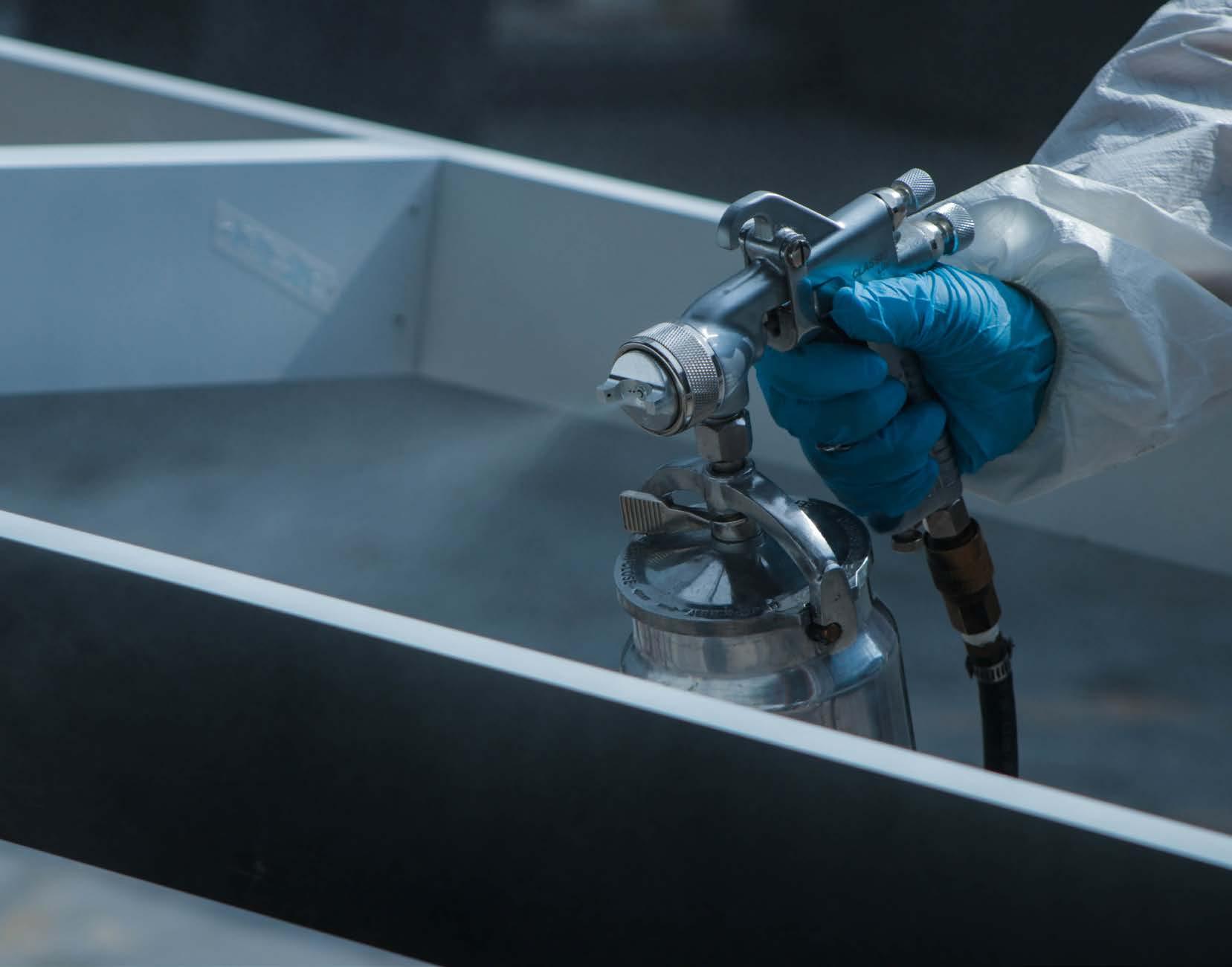
TAKING COVER
Hull coatings have a key role to play in improving ship performance and saving fuel, resulting in emissions savings. However there have been concerns about how such coatings interact with other products and processes used during hull cleaning operations.
Independent laboratory testing has confirmed there is no decrease in the thickness of hull coatings from the use of Shipshave’s In-Transit Cleaning of Hulls (ITCH) solution, thereby addressing a key industry concern over adoption of the innovative system.
The Endures laboratory in the Netherlands was enlisted by Norwegian technology developer Shipshave to perform thorough tests to investigate the impact on the thickness and roughness of anti-fouling coatings from repeated brushing with the ITCH system.
A number of coated panels treated with two main anti-fouling coatings – selfpolishing copolymers (SPC) and fouling release coatings (FRC) – from three
Ship performance can be drastically improved with today’s state-of-theart hull coatings, which undergo rigorous testing to achieve high standards
suppliers were exposed to natural sea water over a two-month period and then subjected to a test simulating one year of monthly proactive cleaning, with the layer thickness and surface roughness of the coating measured before, during and after cleaning. Testing was carried out using four different brushes with varying fibre thickness at different angles on the ITCH system.
The semi-autonomous hull-cleaning robot, which can be deployed by a ship’s crew from a portable winch mounted on the forecastle deck, swipes up and down the hull underwater in transit using hydrodynamic energy to remain attached to the hull.
The newly published test report concluded that “no decrease in coating thickness could be found for all brush types used on all coatings” and therefore that “the ITCH can be used as a tool to remove fouling as it does not influence or reduce the coating thickness”.
The testing did show some increase in surface roughness, with no further increase after initial brushing, but the
COATINGS CLEAN SHIPPING INTERNATIONAL – Spring 2024 23
resulting roughness was still well within what is considered acceptable for a well-performing, freshly coated hull. Consequently, the “increase in roughness is neglectable from a hydrodynamical point of view”, according to the report.
The report confirms that proactive cleaning using the ITCH can be performed without any adverse effects to the hull coating, based on rigorous design parameters for the tests.
The positive impact from proactive hull cleaning has been verified in reallife usage of the system that supports test findings from the laboratory.
As well as reduced fuel costs and emissions, the solution is able to cut hull inspection and maintenance costs, and ease CII compliance without structural modifications, as well as limit the transfer of invasive species between different ports.
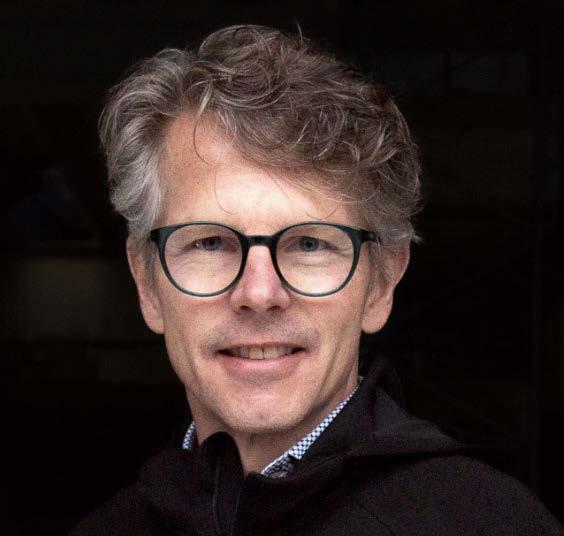
Shipshave’s CEO Åge Højmark says the results from the lab tests mirroring real-world conditions corroborate the actual operating experience reported by clients in using the technology. “This consistency between lab results and field performance validates our claims and reinforces customer confidence in our product,” he says.
“Confirmation from a third party that the ITCH has a negligible effect on fresh hull coatings directly addresses the industry’s concerns regarding impact on the coating. The Endures report will both allay industry scepticism and bolster the already strong trust we have established in the market, encouraging wider adoption of the system,” he adds.
NIPPON’S NEW PRESIDENT
Nippon Paint Marine, the world’s first manufacturer of biocide-free marine coatings, has announced the appointment of Gladys Goh as its president, effective immediately.
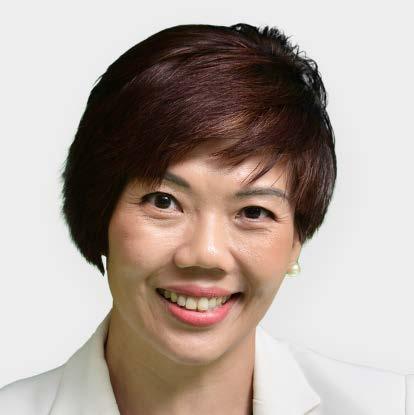
As president of Nippon Paint Marine Group, Gladys Goh is the first female and foreign national to lead a principal operating company in Japan. With a history of over 140 years, the marine division is the founding business for the Nippon Paint Holdings Group, a global leader and pioneer in marine paint and coatings.
She joined Nippon Paint Malaysia in 2006, driving the brand to become Malaysia’s top coatings provider and subsequently led expansion into new markets. She concurrently serves as senior vice-president, strategic innovation and marketing at NIPSEA Group.
The hull coatings market is experiencing strong, sustained growth as a result of increased regulations, the drive to meet decarbonisation targets and the impending costs of future fuels in line with shipping’s energy transition. These factors are generating a surge in the uptake of proven clean technologies that reduce fuel consumption and emissions and increase operational efficiencies, of which advanced hull coatings are the most widely used and available technology within the market.
Nippon Paint Marine Coatings works with customers across 30 countries in Asia, Europe, the Middle East, North America, and South America. Its products have been applied to more
than 40,000 vessels, from tankers and container ships to cruise liners and yachts.
Commenting on her appointment, Gladys Goh says: “I’m honoured to have been appointed as president of the Nippon Paint Marine Group, and I am also proud to be able to reflect and represent the diversity of talent within the business. My vision for growth is to deliver a multiplying effect that will drive this, enhancing our people’s capabilities, optimising operational efficiency and delivering greater value to our customers.”
Over the course of 2024, Nippon Paint Marine plans to launch several new products , including expanding its leading antifouling solution, FASTAR (See case study, right), to incorporate Hydrogel ‘water-trapping’ technology for both ocean-going and coastalrange vessels. It is also focusing on developing low volatile organic compounds (VOC) in both antifouling and anticorrosion coatings to meet regulatory compliances and regional VOC requirements, especially in key markets such as China and South Korea. Lowering VOC emissions helps protect the health of individuals working at shipyards and contributes to the overall sustainability of the marine industry.
Nippon Paint Marine will also strengthen its cargo hold and cargo tank solutions, including offering methanol-resistant coatings in line with the industry’s increased use of methanol as a viable new fuel to meet decarbonisation targets. In 2024, the company will further expand its supply points, to include North America and South Africa, following the acquisition of new locations in Australia, Egypt, and Gibraltar last year.
Case study: FASTAR
Nippon Paint Marine’s antifouling products A-LF-Sea and FASTAR have delivered up to 8% fuel and emissions savings for Taiwanese shipping company WAN HAI Lines, according to the company.
Reducing fuel consumption and emissions is a key priority for WAN HAI and the wider container shipping sector, as it looks to drive increased
COATINGS CLEAN SHIPPING INTERNATIONAL – Spring 2024 24
Shipshave’s CEO Åge Højmark (Credit: Shipshave)
Gladys Goh
operational efficiencies to comply with more stringent industry regulations, including carbon intensity indicator, Energy Efficiency Existing Index and mitigate shipping’s price on carbon following its inclusion in the EU Emissions Trading System, as well as reaching future targets for global greenhouse gas emissions reduction.
WAN HAI has worked with Nippon Paint Marine for seven years, beginning with the application of the high-end antifouling coating A-LF-Sea to 20 vessels within its fleet. Performance analysis conducted in 2019 showed that the product delivered up to 8% fuel and emissions reduction compared to conventional coatings.
A-LF-Sea is a super low-friction coating system that uses Nippon Paint Marine’s patented Hydrogel watertrapping technology, resulting in a smoother hull which reduces a vessel’s hydrodynamic drag. This results in lower fuel consumption – as less power is needed to maintain the same speed – reducing the cost of operating the vessel, as well as emissions.
In 2021, WAN HAI began applying Nippon Paint Marine’s next-generation antifouling coating, FASTAR, to generate further fuel efficiencies and help contribute towards CII ratings for its fleet. FASTAR has now been applied to 10 vessels across WAN HAI’s global fleet. The vessels are currently undergoing performance analysis to determine options for generating additional fuel and emissions saving benefits going forward.
FASTAR is Nippon Paint Marine’s fourth generation antifouling system, with self-polishing and self-smoothing capabilities. FASTAR builds upon the company’s patented Hydrogel watertrapping technology, using nanobinder technology to deliver precise, predictable antifouling performance, reducing fuel consumption and emissions, as well as improving drydock efficiency.
WAN HAI is now also considering extending this partnership to explore the use of Nippon Paint Marine’s Aquaterras solution, the world’s first completely biocide-free and proven self-polishing underwater foul-
resistant paint, which can reduce fuel consumption by up to 10%.
“We have been very impressed with the performance of both A-LF-Sea and FASTAR. Both coatings have enabled us to achieve significant fuel and emissions savings, which aligns with WAN HAI’s corporate and sustainability goals to comply with environmental regulations as well as supporting the industry in meeting global decarbonisation targets,” says a WAN HAI spokesperson.
“Improving efficiency across our entire fleet is critical to driving more sustainable, commercial and competitive operations and Nippon Paint Marine’s coating technology has played an integral role in enabling us to achieve this.”
“Helping our customers meet the challenge of accelerating the path to decarbonisation and wider sustainability is a key focus for us. We are proud to have enabled WAN HAI to achieve fuel savings of up to 8% that have a significant and positive impact on their environmental footprint and bottom line,” says Adrian Hwang, deputy general manager at Nippon Paint Marine.
Nippon Paint Marine has applied products using its Hydrogel lowfriction antifouling coatings to more than 4,000 vessels to date, reducing fuel costs and emissions by up to 8% compared with other makers’ top-ofthe-range silyl-acrylate SPC systems without Hydrogel.
AI INNOVATIONS
Revolutionary software co-developed by AkzoNobel’s Powder Coatings business and coatingAI is using artificial intelligence to help customers improve the application process and reduce their carbon footprint.
The industry-first technology, called Flightpath, optimises equipment settings to reduce defects and overspray and improve powder consumption – helping to reduce costs, avoid rework and save time and energy.
The AI-based software has been in development for two years and an exclusivity agreement has just been signed by both parties – who joined
forces after first crossing paths during AkzoNobel’s Paint the Future start-up challenge in 2021.
“We’re delighted to team up with coatingAI and strengthen our technical service capabilities,” says Remco Maassen van den Brink, Marketing Director of AkzoNobel’s Powder Coatings business. “We proactively look for ways to support customers in becoming more sustainable in their operations and this will significantly improve our ability to help them get better results – while contributing to our own ambition of halving carbon emissions across the value chain by 2030.”
Marlon Boldrini, CEO of coatingAI, adds: “The collaboration with AkzoNobel has helped to accelerate our vision since day one. Our solution, built on the power of artificial intelligence and AkzoNobel’s technical expertise, will not only increase efficiency for their customers, but also drive greater sustainability within the powder coatings industry.”
The software enables customers to optimise equipment settings such as gun motion and achieve more uniform, consistent coverage with fewer flaws – all thanks to the AIpowered recommendations. The software doesn’t require complex integration and, as conditions change, it continually adapts its recommended parameters.
“Collaborating with a startup like coatingAI – who are pushing boundaries to transform the coatings industry – means we can accelerate our own powder revolution and provide services like no other,” adds Maassen van den Brink. “It’s the latest example of how we constantly innovate and look for new ways to offer customers the most progressive and sustainable solutions.”
Earlier this year, the company’s powder coatings business was the first in the industry to launch an openly accessible online energy savings calculator for all users of powder coatings. It helps customers better understand how even making small changes in the coatings process can have a big impact in terms of becoming more energy efficient.
COATINGS CLEAN SHIPPING INTERNATIONAL – Spring 2024 25
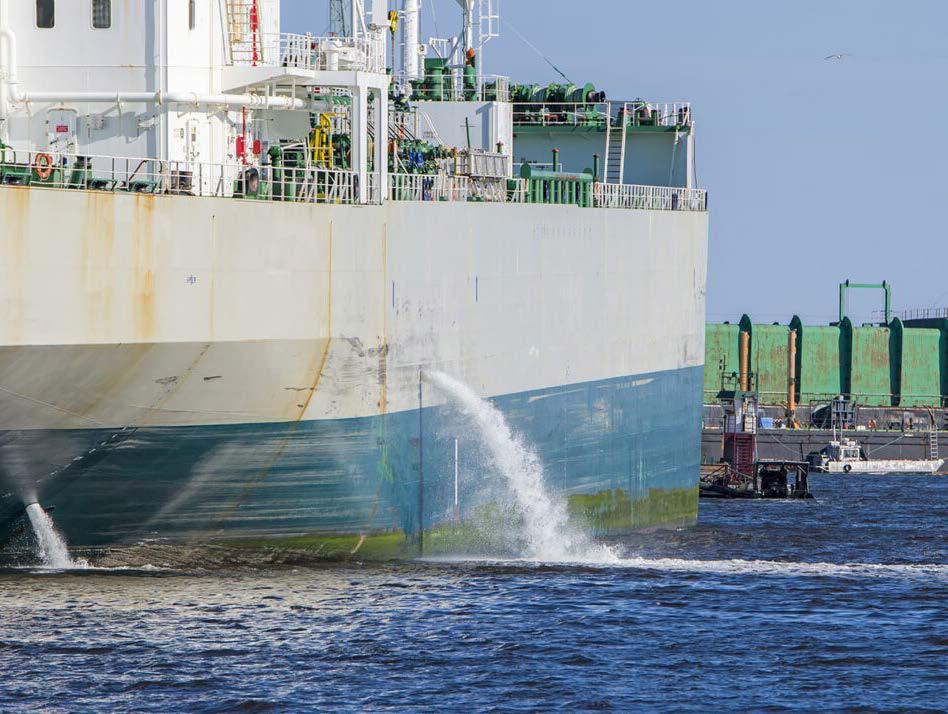
Marine Mutual is warning that shipowners need to be aware of a looming BWM Convention deadline
STAY AHEAD OF THE CURVE
The next deadline in the Ballast Water Management (BWM) Convention is the D-2 ballast treatment deadline on 8 September this year and companies will need several months to ensure that they meet requirements or may face trading problems.
As the Marine Mutual explains to members in an advisory risk review online, the Convention’s first stage ballast water exchange requirement (Regulation D-1) came into force in 2017. The second stage (Regulation D-2), which ends the ballast water exchange process and obligates ballast water treatment instead, becomes mandatory on 8 September this year.
“Members will be aware that ballast water can contain many aquatic species which may later become invasive and harmful when released, unmanaged, into a new marine location at a distant load port,” Marine Mutual says. “The BWM Convention was created to prevent global sea and river water contamination and associated
ecological dangers, and public health issues. Regulation D-1 required all ships (over 400 GT and engaged in international trade) built before 2017 to exchange their water ballast while at sea (preferably more than 200 nautical miles from land) and for all vessels built during or after 2017 to be fitted with a Regulation D-2 ballast water treatment (filtering and disinfection) system.
“Vessels built before 2017 and permitted to use a D-1 ballast exchange process were later required to retrofit D-2 ballast treatment systems no later than their next International Oil Pollution Plan (IOPP) Certificate survey. MARPOL Annex 1 provides that IOPP certificates are valid for five years. Accordingly, all vessels built before 2017 were originally intended to have been D-2 retrofitted by 2022.
“The original 2022 D-2 compliance deadline failed, due primarily to the covid-19 pandemic shortage of International Maritime Organization (IMO) approved system
BALLAST WATER TREATMENT SYSTEMS CLEAN SHIPPING INTERNATIONAL – Spring 2024 26
equipment and shipyard capacity for installation. The IMO then agreed a two-year extension to 8 September 2024. However, despite this extension and likely due to the high cost of D-2 equipment and installation (the ICS ‘Treating Ships’ Ballast Water’ webpage estimates the cost as being between $1m- 5m per vessel), there appears to be a significant number of BWM Convention regulated vessels which have not yet been certified as D-2 compliant.”
Marine Mutual sums up the requirements of BMWD-2 as follows:
» All BWM regulated vessels built during or after 2017 must currently carry a BWM D-2 Certificate to confirm that an approved ballast water treatment system is installed on board and tested.
» All BWM regulated vessels built before 2017 must currently carry a BWM Certificate to confirm compliance with the BWM D-1 ballast water exchange standard. If the vessel has been subsequently retrofitted with a D-2 ballast water treatment system, a BWM Certificate is required which confirms a D-2 system is installed on board and tested such that it can be used on
and after 8 September 2024.
» All BWM vessels must carry an approved BWM Plan and up-to-date Record Book.
The mutual tells members to check the BWM certification for all their BWM regulated vessels. “If any of your vessels are still operating with BWM D-1 ballast water exchange only Certificates, then it is important that priority plans be made for D-2 ballast treatment systems to be installed and tested to flag state BWM D-2 requirements well before 8 September 2024.”
Plan preparation should include communications with flag state authorities for vessels and their RO to confirm BWM D2 requirements as well as with the vessels’ Class society, IMO/ BWM approved ballast water treatment system suppliers and shipyards to organise D2 system equipment purchase and installation as soon as possible.
“It is essential that masters and all crew involved in ballasting, deballasting and the operation of BWM treatment systems receive comprehensive training relating to BWM Convention requirements, the operation and maintenance of the of
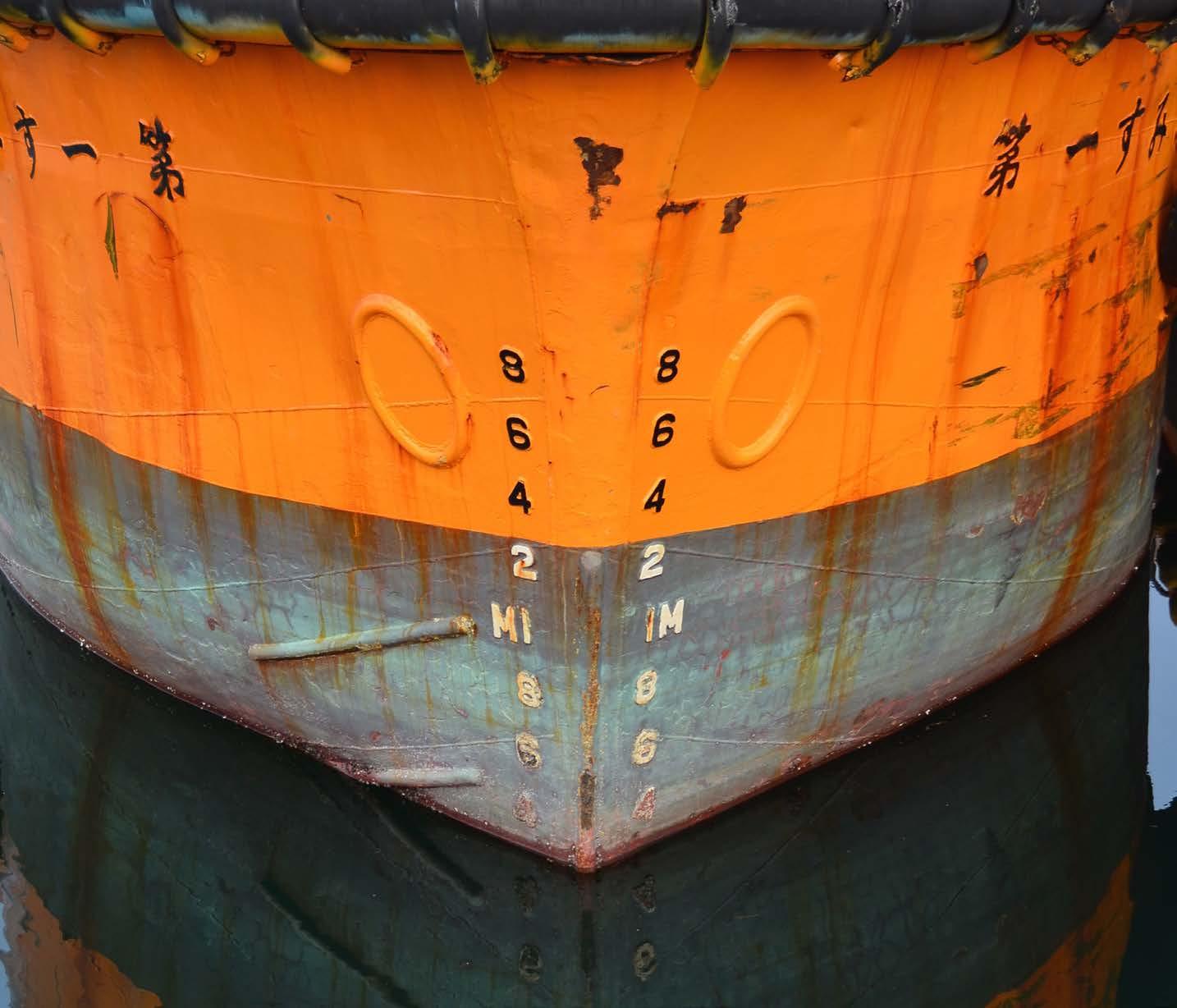
the installed system and the sampling of ballast water in accordance with the IMO Guidelines for Ballast Water Sampling (G2).
“Additionally, members should ensure that their masters and crews fully understand the content of the IMO Guidelines for Port State Control
Under the BWM Convention. This IMO resolution details the PSC sampling and testing process (which should follow the aforesaid G2 Guidelines) and the circumstances that may lead to vessel detention or banning.
“Members should also direct their masters and crew to the IMO’s compilation of all BWM mandatory instruments and guidelines as listed in the IMO Guidelines and Guidance Documents related to the BMW Convention 2004 (as updated to Aug 2023). Particular attention should be given to BWM.2/Circ.20 Guidance to ensure safe handling and storage of chemicals and preparations used to treat ballast water and the development and implementation SMS safety procedures.”
The mutual says that “It seems unlikely that the IMO will grant any further time extension. Accordingly, MM members who operate vessels built before 2017 that are regulated by the BWM Convention and have not yet been retrofitted to D-2 ballast treatment standards should take priority action to avoid anticipated equipment supply and installation bottlenecks.
“If not accomplished by the due date, it seems likely that vessels will be detained.
“In addition to ensuring that all BWM regulated vessels (built both before and after 2017) are fully BWM D-2 ballast treatment equipment compliant, Members must also ensure full compliance with IMO/BWM Guidelines on system operation, ballast testing, crew training and safety.
“Members are therefore encouraged to bring this Risk Bulletin to the attention of their DPAs, ship managers and Masters. Members should also ensure that all shipboard and management office SMS manuals and procedures are updated to incorporate all BWM Convention and related crew safety requirements.”
BALLAST WATER TREATMENT SYSTEMS CLEAN SHIPPING INTERNATIONAL – Spring 2024 27
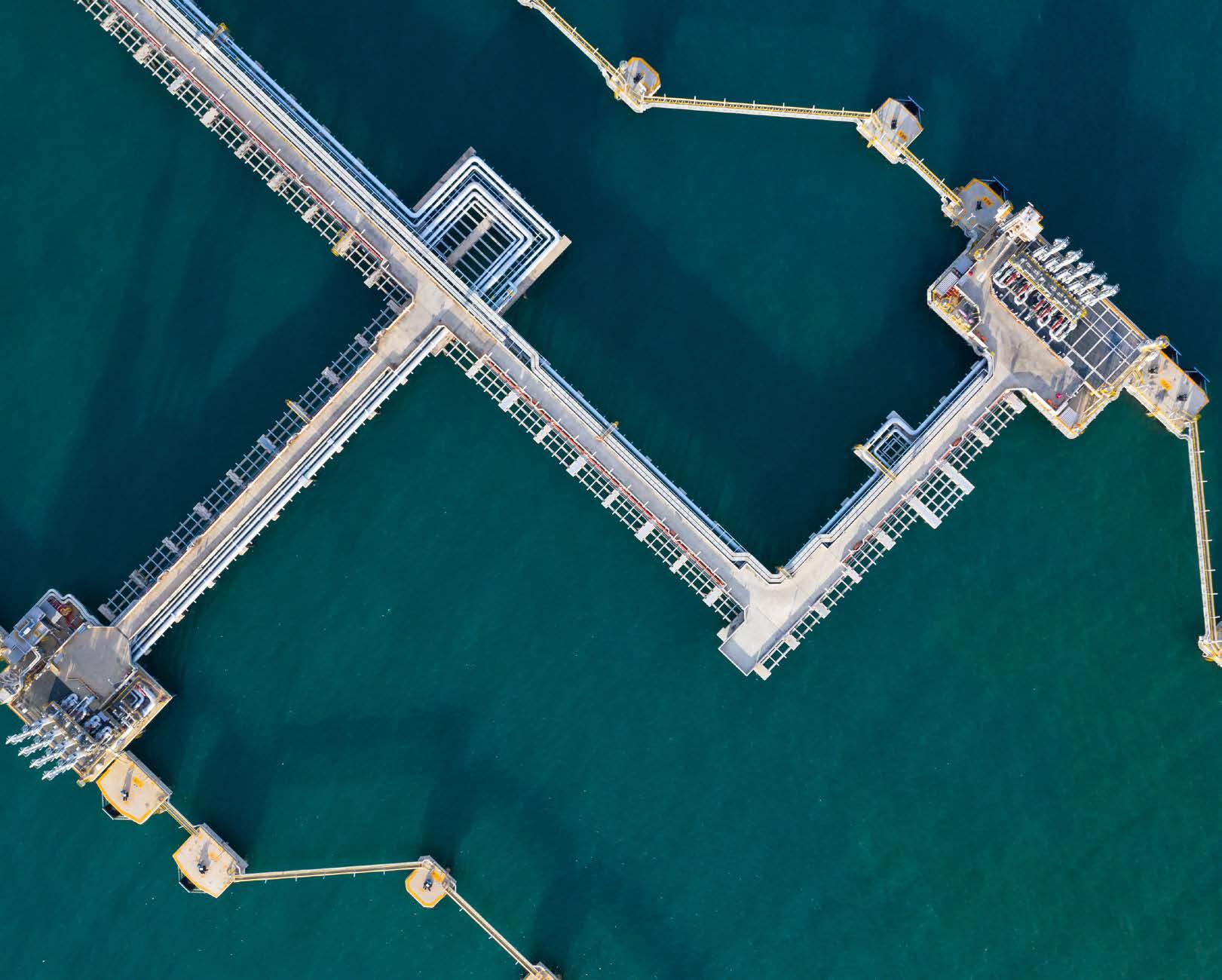
FUEL FOR THOUGHT
Eltronic FuelTech is now offering equipment for supplying fuel from tanks to engines on methanol-powered ships. This can save shipping companies both money as well as energy while enhancing safety.
The naming of Laura Mærsk, AP MollerMaersk’s first container ship that can sail on green methanol, marked the start of more sustainable shipping. In the wake of this, the Danish engineering company Eltronic FuelTech has now launched a new supply system – a so-called low-flashpoint fuel supply system (LFSS) – for this particular vessel.
This means players in the shipping industry can now have an integrated fuel supply system from the fuel tank to the engine comprising a single supply system and fuel valve train which improves safety, cuts costs and saves energy.
“Embracing green methanol as a fuel has been increasing markedly in recent years, and with the new LFSS system, we can make a significant contribution to the green
The debate has been on in recent times as to which of the alternative fuels, not to mention power systems, will be most effective going forward. One of the main issues is whether the infrastructure to support the development of fuels in large quantities, or alternative power measures will be easiest to implement. We look here at some of the approaches and viewpoints
transition of the shipping industry. In the past, several suppliers were required to put together a complete fuel supply system all the way from the fuel tank to the engine, but the fact that we can now supply the entire system brings multiple benefits,” says Louise Andreasen, CEO at Eltronic FuelTech.
There are savings associated with the logistics, as one and the same container can be used for spare parts for the entire system, and fewer repair technicians will be required in connection with maintenance.
“It’s a huge advantage for customers that it’s now available as a combined package so they no longer have to maintain the interfaces between two different systems. At the same time, when we deliver a combined solution, we can guarantee the safety of the entire system,” says Andreasen.
While most other supply systems on the market use two pumps to pump the methanol around, Eltronic FuelTech has created a LFSS with only one pump, thereby saving considerable energy. In addition, it
ALTERNATIVE FUELS CLEAN SHIPPING INTERNATIONAL – Spring 2024 28
is now possible to adjust the pump depending on the engine load, so that only the right amount of methanol is supplied to the engine.
“This means that if a ship is sailing slowly, the pump automatically adjusts to the load, so that it only runs at 60% of full power for example. With other systems, unnecessarily large quantities of methanol are pumped around the system, which clearly affects electricity consumption, especially on large ships,” says Andreasen.
“With the biggest engines on container ships, for example, the pumps usually use more than 100,000 kWh a year pumping the methanol from the fuel tanks to the engine. With our new supply system, we expect to be able to cut consumption by up to 40%.”
In addition to developing systems for a ship’s main engines, Eltronic FuelTech has also developed a compact combined system to supply the ship’s auxiliary engines with fuel from the tanks.
HYDROGEN ECONOMY
The role of alternative fuels in powering the low-carbon economy will dramatically increase volumes of renewable ammonia, outstripping growing volumes of renewable methanol, Maritime Strategies International (MSI) predicts.
In a new Foresight article, MSI says the next 25 years are likely to see ammonia trade transformed with clean ammonia providing new demand for close to 400 very large gas carriers, compared to a current fleet of 375 focused on carrying LPG.
In contrast, although a requirement for around 215 methanol carriers will be significant, it compares to an aggregate methanol-capable 35,000dwt and above fleet of 280 at the end of 2023.
Despite facing high costs and safety issues, clean ammonia’s role as a prospective marine bunker fuel, a hydrogen carrier for use in power generation, and industry feedstock has solidified its place in the green transition, especially for highvolume uses. This signals a marked transformation for the industry,
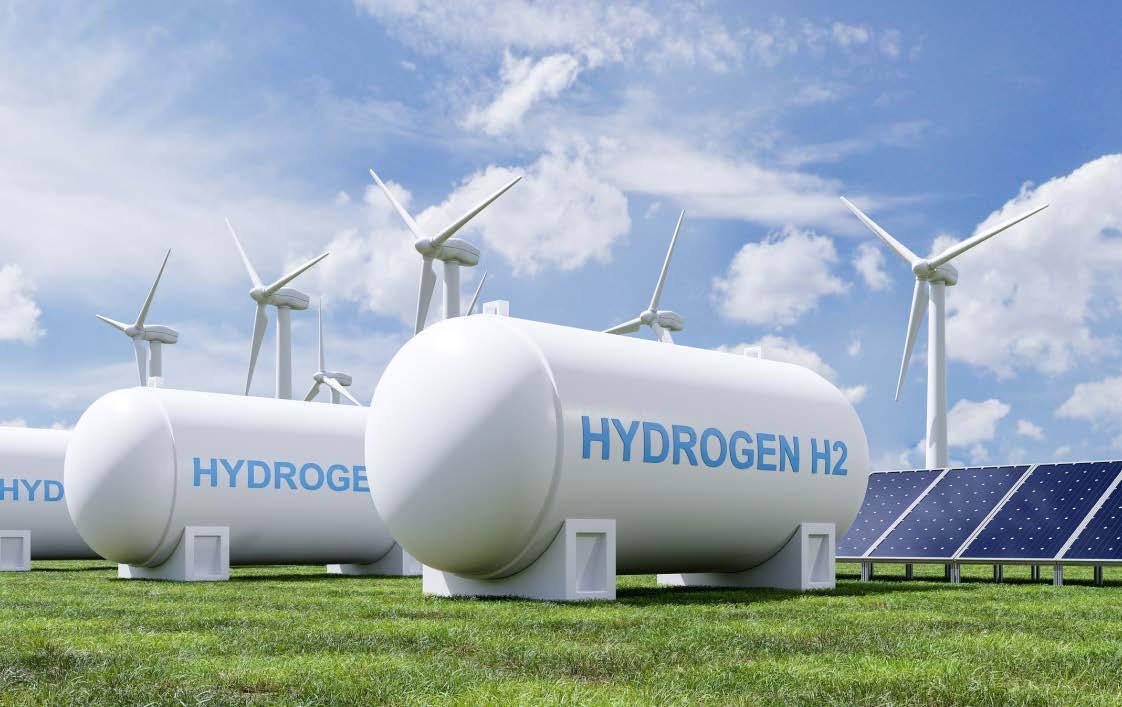
which has been focused on fertiliser production, to one driven by energy markets. Future volumes of clean ammonia (blue and green) are set to dwarf the existing grey trade. The nascent industry is anticipated to achieve clean exports in the region of around 30m tonnes by 2030 and could top 300m tonnes by 2050.
Production of clean methanol is also ramping up, driven by uptake agreements for methanol as a marine fuel, its use as a chemical feedstock, and its role in the wider hydrogen economy.
While sharing similar drivers, clean methanol trade is forecast to be significantly lower than that of ammonia, with 2030 seeing around 15m tonnes of product traded, of which 9m tonnes will be green. By 2050 global clean methanol trade is expected to rise to 100m tonnes –equivalent to one-third of the amount of clean ammonia trade.
Despite MSI’s model showing a relatively slow start for clean methanol trade, incremental growth is expected year-on-year from 2026 with the consultancy forecasting exports to be equivalent to 40% of the projected grey methanol trade by 2030.
“The prospects for hydrogen trade are developing rapidly, but are still theoretical and estimates prepared by bodies such as the International Energy Agency and the Hydrogen Council provide a wide range of potential
outcomes,” notes the article’s author, MSI director Stuart Nicoll. “Major infrastructural challenges remain before significant trade can become a reality but investment is flowing into the sector, while intergovernmental agreements are being signed and MOUs for trade proliferate.”
Despite facing high costs and safety issues, clean ammonia’s role as a prospective marine bunker fuel and other applications has solidified its place in the green transition, especially for high-volume uses.
Production of clean methanol is ramping up, driven by uptake agreements for methanol as a marine fuel and its use as a chemical feedstock
ALTERNATIVE FUELS CLEAN SHIPPING INTERNATIONAL – Spring 2024 29
HYDROGEN FERRY
Lloyd’s Register (LR) has awarded Approval in Principle (AiP) to the Estonian State Fleet for a hydrogen fuel-cell ferry designed by Finnish ship design and engineering company Deltamarin.
The zero-emissions ferry is to be operated between the Estonian mainland and the islands of Saaremaa and Hiiumaa, on the Virtsu-Kuivastu and Rohuküla-Heltermaa routes, which connect the Baltic nation to its two largest islands.
As part of the certification, LR approved the current stage of the design process to be suitable for further design, construction and procurement of the ropax ferry. The thorough AiP process was conducted by LR experts and led by its Hamburg Technical Support Office.
AMMONIA RISK STUDY
The use of ammonia as a ship fuel could contribute to eutrophication and acidification, due to ammonia leakage and emissions of nitrogen oxides. One of the possible emissions is laughing gas, which is also a greenhouse gas with a much higher warming impact than carbon dioxide.
Switching to ammonia as a marine fuel, with the goal of decarbonisation, can instead create entirely new problems. This is shown in a study from Chalmers University of Technology in Sweden, where researchers carried out life cycle analyses for batteries and for three electrofuels including ammonia. Eutrophication and acidification are some of the environmental problems that can be traced to the use of ammonia – as well as emissions of laughing gas, which is a very potent greenhouse gas.
In the search for viable fossil-free marine fuels, ammonia has been on the agenda for several years as one of the strongest alternatives. Ammonia (NH3) is a carbon-free fuel and has the advantage of a higher energy density than, for example, hydrogen. It can also be liquefied fairly easily although it is a gas at standard conditions. However, a significant disadvantage is that the production of electro-ammonia
– which requires electricity – is very energy intensive.
Moreover, the new study shows that an eagerness to rid the shipping sector of carbon emissions, by using ammonia, might create entirely new problems instead.
“Although ammonia is carbon-free, its combustion in engines is not free from greenhouse gas emissions”, says Selma Brynolf, Chalmers researcher and co-author of the paper. “Engine tests have shown varying degrees of emissions of laughing gas, which is a very potent greenhouse gas with more than 200 times the global warming impact than carbon dioxide.”
“There is simply a lack of deeper risk analyses of what a switch to ammonia could mean,” says Fayas Malik Kanchiralla, PhD student at the Department of Mechanics and Maritime Sciences at Chalmers and lead author of the paper.
The researchers used life cycle assessment and life cycle cost to evaluate technical viability, environmental impacts, and economic feasibility for four types of renewable energy carriers, for three different types of ships. The energy carriers examined included electricity via batteries, and three electrofuels: hydrogen, methanol, and ammonia. The energy carriers were in turn used in combination with both engines and fuel cells.
The study shows that ammonia and methanol have the lowest cost of the alternatives studied. “The market is usually drawn by costs, and since electro-ammonia has the lowest cost, the market is aiming towards it. There is a hype around this fuel in shipping today. But if, and when, we make a shift to ammonia, it is to solve the problem of using fossil fuels, and at the moment it seems like we might end up creating more problems instead”, says Kanchiralla.
This is because ammonia comes with a set of environmental disadvantages. Its use as a fuel can affect air and water quality due to ammonia leakage and emissions of nitrogen oxides, such as laughing gas. Kanchiralla and his colleagues stress the importance of controlling this for
ships operating in areas with emission controls, for example a sensitive marine area such as the Baltic Sea.
Electrofuels are synthetic fuels that are produced with electricity, in a process where energy-rich molecules are made from other molecules. These fuels are defined as ‘green’ when they are produced with renewable electricity. But the study shows that all three green electrofuels have a higher environmental impact than traditional fuels in terms of human toxicity, use of resources such as minerals and metals, and water use.
The use of ammonia is associated with substantial toxicity challenges and risks, which are manageable, but would increase the complexity of the safety systems required. This would potentially limit the use of the fuel to only deep-sea cargo ships.
“Among the environmental problems that can be traced to use of ammonia are eutrophication and acidification”, says Kanchiralla. “To sum up, even though green ammonia is a fossil-free and relatively clean fuel, it is probably not green enough for the environment as a whole. More risk assessments on the emissions of ammonia, and the related nitrogen compounds, need to be done before adopting this fuel for shipping.”
The study also shows that it is very difficult to find a simple non-fossil fuel solution that both works for all types of ships and is able to meet the goal of reducing greenhouse gas emissions in shipping. Assessing the environmental and economic aspects of different fuel options for the shipping sector is complex, and several factors need to be considered when developing climate strategies for various types of ships and modes of operation.
“From a life cycle perspective, one needs to find different types of solutions for decarbonisation for different kinds of ships”, says Kanchiralla. “There is no silver bullet. More research and more life cycle analyses need to be done.”
The study, How do variations in ship operation impact the technoeconomic feasibility and environmental performance of fossil-free fuels? A life cycle study has been published
ALTERNATIVE FUELS CLEAN SHIPPING INTERNATIONAL – Spring 2024 30
in Applied Energy and is written by researchers at Chalmers University of Technology and Research Institutes of Sweden. The research was funded by the Swedish Transport Administration, the competence center TechForH2 and the project ‘HOPE’.
DUAL-FUEL POTENTIAL
Ocean Network Express (ONE) has announced the award of Approval in Principle (AiP) for an ammonia dual-fuelled vessel. Along with the investment in 12 methanol dual-fuelled vessels, this marks another milestone for ONE on its journey towards net-zero by 2050.
The newly AiP-awarded 3,500teu vessel was jointly developed by ONE, Nihon Shipyard Co and classification society DNV, as part of a joint development project established in late 2022 among the three parties.
ONE has been studying the feasibility of ammonia as an alternative fuel for zero emission according to the roadmap for alternative fuels which was developed by ONE in 2022. In conjunction with the roadmap, ONE participated in a Global Centre for Marine Decarbonisation-led ammonia bunkering pilot safety study.
“Ammonia is definitely one of the primary focuses of our research as ammonia fuel has a great potential
of generating lower greenhouse gas (GHG) emissions than conventional marine fuels. We are pleased to have made such a progress, and we will continue our study on ammonia,” says Koshiro Wake, senior vice president of corporate strategyand sustainability department at ONE.
ONE Green Strategy has set an ambitious target to achieve net-zero GHG emissions, encompassing Scope 2 and 3 by 2050. To achieve the target, transition from conventional fuel to alternative fuels is defined as ONE’s key pillar of green initiatives. ONE will continue to study alternative fuels as it strives to become net zero by 2050.
Ammonia fuel has a great potential of generating lower greenhouse gas emissions than conventional marine fuels
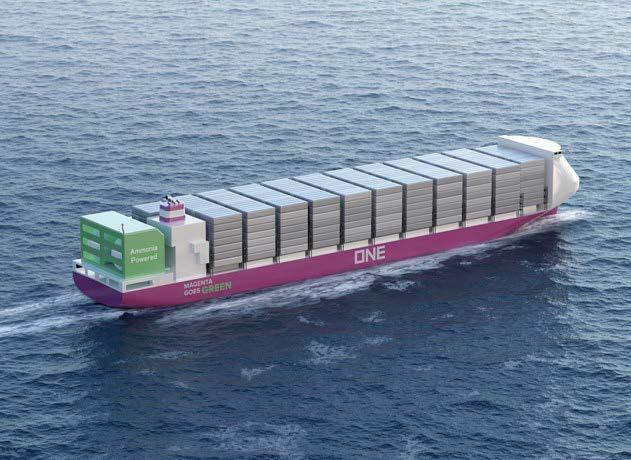
THETIUS BAROMETER
Thetius, the marine technology research consultancy, has launched its Maritime Alternative Fuels Barometer, measuring the gaps between the shipping industry’s perception of alternative marine fuels and the reality in terms of availability, supply, technological readiness and impact on emissions.
The barometer is the result of a perception study designed to critically examine the future fuels landscape and better understand the future fuels debate. It is based on an analysis of market announcements, data on alternative fuels from DNV’s Alternative Fuels Insight platform, and 25 interviews with a range of maritime stakeholders.
The barometer provides a comprehensive outlook to the industry when making informed decisions for a sustainable future. It reveals a consensus on a multifuel future in shipping. Yet the transition will only happen once infrastructure is built, safety issues resolved, regulatory uncertainty reduced, and fuel availability worries lessened. And it forecasts a phased approach to decarbonisation with initial adoption in niche markets before broader industry-wide uptake. Thetius’ analysis reveals:
» A multi-fuel future is inevitable, requiring a diverse and phased fuel strategy emphasising transition fuels like LNG and methanol in the short to medium term.
» Despite perceptions, most methanol today is fossilfuel-derived ‘grey methanol’ with high emissions – green methanol scalability is a key challenge.
» While batteries and shore power can support decarbonisation, deep-sea shipping electrification remains unrealistic.
» Future fuels like hydrogen and ammonia hold promise but face massive hurdles around infrastructure, storage, bunkering and skills.
» Operational and technical optimisations will be crucial alongside alternative fuels.
ALTERNATIVE FUELS CLEAN SHIPPING INTERNATIONAL – Spring 2024 31
ONE has announced the award of AiP for an ammonia dual-fuelled vessel (© Nihon Shipyard Co)
The study makes three main recommendations to the shipping industry. First, develop a diverse fuel strategy with an emphasis on transition fuels; second, invest heavily in infrastructure and safety for future fuels; and finally, embrace technological and operational optimisations.
Nick Chubb, founder and strategy director of Thetius, says: “The marine fuel landscape is rapidly changing as new technology comes to market. Decision makers need support to understand the market. Even existing alternative fuels require careful planning and a long-term view to be sure you can meet the technical, safety, and environmental standards required of the industry. We are delighted to be able to bring this insight to the market and provide further assistance to teams making important and influential decisions about how to fuel their fleets for the future.”
Commenting on the analysis, Steve Esau, chief operating officer at SEALNG, says: “While there is no silver bullet for 2030, it is pleasing to see a significant role for liquefied natural gas (LNG) in the short to medium term. This study highlights once again the need for immediate action if the shipping industry is to reach net zero by 2050 – waiting is not an option. It is also clear that by 2050 deep-sea shipping will rely on multiple fuels, including LNG, as it transitions from a fossil fuel through bio to e-LNG. The lessons learnt from the introduction of LNG as a marine fuel will benefit all alternative fuels.”
As well as assessing fuel options, the barometer outlines some key considerations for operators as they progress down the pathway to decarbonisation. Training and education of seafarers and other workers in the value chain is vital for dealing with future fuels that can pose greater hazards than fuel oils have done.
Even after correct training, concerns about safety may persist but the industry can look to its past adoption of fuels such as LNG to help it plan how to manage the risks of fuels like ammonia, methanol and hydrogen. Meanwhile, as the sector continues
through its energy transition, the clear message from experts in the industry is that our low-carbon future has to involve technological and operational optimisations such as hull and propeller optimisation to reduce energy consumption and lower emissions.
The Alternative Fuels Perception Barometer sets out to provide this kind of insight to decision-makers and help them navigate the changing landscape of alternative fuels in the maritime industry. For more information on the barometer, please visit: thetius.com
CLASSIFICATION CAUTION
As the maritime industry forges ahead with its efforts to meet the goal of net zero emissions by 2050, The International Association of Classification Societies (IACS) continues to provide strong support by facilitating the safe adoption of the technological innovations, zero carbon fuels and alternative energy sources that are fundamental to achieving this ambitious target.
In recent years, ammonia has emerged as one of a number of promising carbon-free fuels due to its high energy density and its ability to be liquefied at ambient temperatures. While ammonia therefore has a significant potential as a marine fuel it also presents safety challenges as it is highly toxic to human and aquatic life and it is therefore imperative to address the permissible limits to human exposure in ensuring the safety of onboard personnel.
In light of this and with the aim of guiding the industry in its development of early projects using Ammonia as fuel, IACS has developed a Unified Requirement (URH1) covering the release of ammonia from the onboard systems for bunkering, storing, preparing and using ammonia as fuel.
IACS URH1 aligns with the Recommendations from the US National Institute for Occupational Safety and Health (NIOSH) and establishes that an ammonia concentration of 300ppm or more is immediately dangerous, and a concentration of 25ppm or more is dangerous if the exposure is longer
than eight hours. Additionally, it requires the system dealing with ammonia to be designed so as to prevent a direct release of ammonia to the atmosphere during normal operation and also, when possible, during any reasonably foreseeable abnormal scenario.
In situations where a direct release is unavoidable under either a normal or abnormal scenario (such as the activation of a tank pressure relief valve), the points where ammonia is expected to be released are required to be identified by the designer in a risk assessment and to be listed in the ship design documentation.
The concentration resulting from such releases must not exceed a safe concentration (25ppm) at locations of the ship accessible to the crew and this is to be demonstrated through gas dispersion analysis. This requirement is expected to result in the establishment of ‘toxic areas’ (similar to hazardous areas on tankers) with access restrictions and other precautions, such as the absence of air intakes in that area.
URH1 further requires the point at which ammonia is released to the atmosphere, (for example, outlet of vent mast) to be provided with audible and visual alarms, which are to be activated when the discharged gas has an ammonia concentration of 300ppm or more, to warn people to promptly leave the area and seek refuge.
Gas dispersion analyses are required to be carried out for abnormal and emergency scenarios identified by way of a risk assessment. Depending on the results of these analyses, measures will have to be taken to prevent the crew onboard from being exposed to dangerous concentrations of ammonia.
The spaces where all reasonably foreseeable ammonia leaks may occur (for example secondary enclosure, fuel preparation room), even if not normally manned, are to be monitored and the source of the release should be shut down when a concentration exceeding 300ppm is detected.
In other work relating to the use of ammonia as a fuel, IACS is also working on requirements for ammonia
ALTERNATIVE FUELS CLEAN SHIPPING INTERNATIONAL – Spring 2024 32
treatment systems (equipment intended to reduce the concentration and/or quantity of released ammonia), and requirements for gas dispersion analysis.
Other safe decarbonisation-related work underway in IACS includes developing requirements for the selection and testing of materials and equipment, including portable tanks, for the use of hydrogen as fuel, and requirements on electrical energy storage systems, including a type approval standard for lithiumbased batteries.
Commenting on the publication of URH1, IACS secretary general Robert Ashdown says: “URH1 on the control of ammonia releases on ammonia fuelled vessels is a first, but significant, step in providing industry with enhanced levels of assurance for this new fuel type and will be supplemented with further complementary guidance in due course.
“This work, together with the other work-streams underway within our safe decarbonisation panel, demonstrates IACS’ strong
commitment to ensuring that safety remains at the forefront of the maritime industry’s efforts to meet its decarbonisation targets.’
CHALLENGE HITS HOME
SEA-LNG has produced an overview of the current position regarding the use of liquefied natural gas (LNG) in decarbonisation. This resource outlines the progress anticipated in 2024. The document includes data, infographics and facts about the LNG pathway.
SEA-LNG says the reality of the magnitude of the decarbonisation challenge has started to hit home for many in the maritime industry during the past year. From 1 January 2024, there were only 312 months – 1,356 weeks or 9,497 days – until 2050, when shipping must achieve its netzero target. Regulations such as the International Maritime Organization’s Carbon Intensity Indicator (effective from 2023), the inclusion of shipping into EU ETS (2024) and FuelEU.
Maritime (2025) are putting immediate and growing pressure and added costs on shipowners
and operators in relation to their greenhouse gas (GHG) emissions. How to meet these goals with practical, realistic and safe solutions in 312 months is a dilemma the industry must address in a concerted and coordinated manner, the organisation says.
A View from the Bridge 2023-2024 will shine a light on some of the grey areas from alternative fuel discussions in 2023 and important considerations for 2024.
There is a growing awareness of the fact that all the alternative fuels being discussed today share the same generic pathway: from fossil to bioderived fuels, (or blue fuels using carbon capture and storage) and eventually to electro-fuels produced from renewable electricity. There is also a recognition that all these fuels are currently fossil, also known as grey.
The use of grey methanol, grey ammonia and grey hydrogen as marine fuels will generate more GHG emissions than the traditional marine fuels they are looking to replace. This means they are not viable solutions
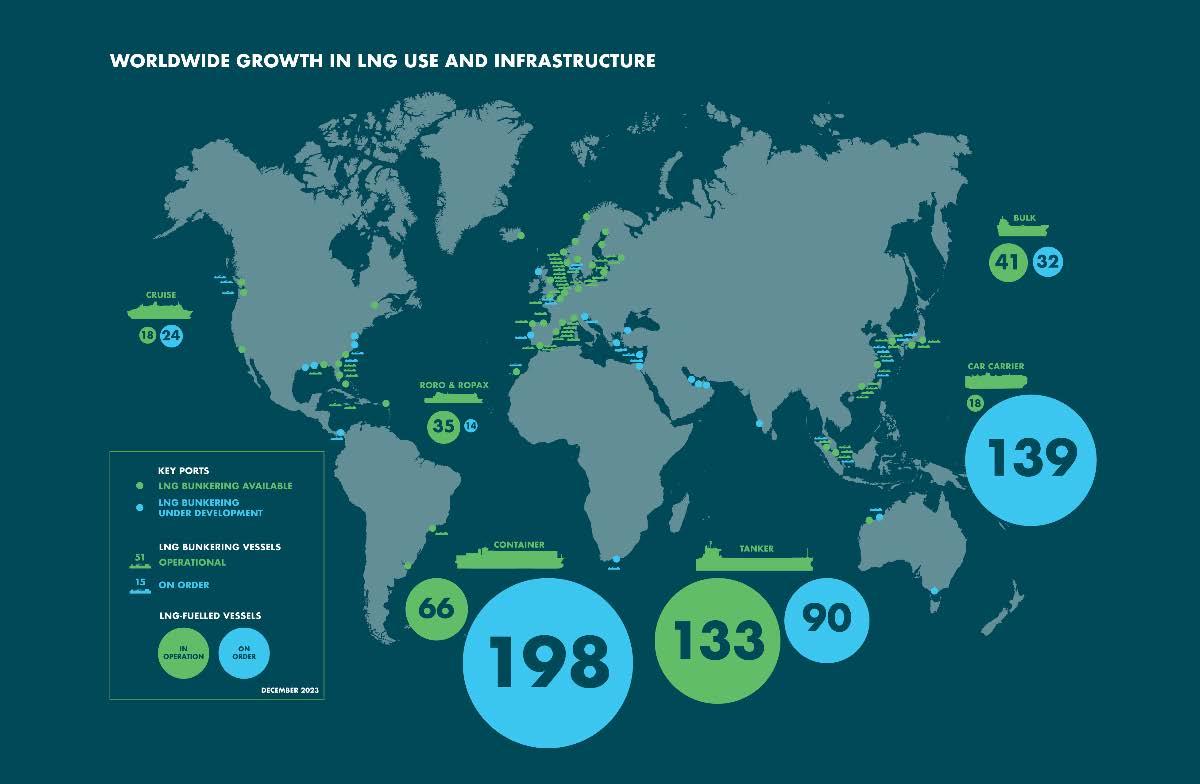
ALTERNATIVE FUELS CLEAN SHIPPING INTERNATIONAL – Spring 2024 33
for decarbonisation even in the short term. By contrast, grey LNG offers an immediate reduction in GHG emissions of up to 23%, after accounting for methane slip, for the two-stroke engines which are fitted to the vessels that move most of the world’s shipping tonnage.
Consequently, the methanol, ammonia and hydrogen used by shipping will need to be green, or at least a blend with large volumes of green fuels, simply to achieve parity with very low sulphur fuel oil) and comply with regulations such as FuelEU Maritime.
Download the report at: tinyurl.com/CSI-SEALNGView
METHANOL MOVES
Lloyd’s Register (LR) and Green Marine, a Danish consulting service provider that specialises in methanol as marine fuel, have joined forces to offer value-adding solutions to maritime stakeholders that aim to build or retrofit and operate vessels with methanol-as-fuel technology, with a prime focus on training.
Methanol, known for its lower carbon intensity and potential for renewable production, presents a promising pathway to propel the
maritime industry towards a more sustainable future. As a new fuel in shipping, there is still limited operational experience of methanol as a marine fuel and its use presents challenges for seafarers and their upskilling, alongside shoreside competencies which are required in order to ensure safety and efficient use.
Green Marine has developed experienced-based training delivered by ex-captains and chief engineers with more than 100,000 hours of onboard operational experience in methanol dual-fuelled ships. This, coupled with LR’s expertise around rules, risk assessment and risk management, as well as human factors, provides an end-to-end support that is expected to create significant value in practice.
Andy McKeran, chief commercial cfficer, LR, says: “This partnership reflects LR and Green Marine’s shared commitment to advancing sustainable solutions in the maritime sector. By leveraging our technical expertise and working collaboratively with Green Marine, we aim to accelerate the adoption of methanol as a viable and environmentally friendly fuel source, contributing to a greener and more sustainable future for the maritime industry.”
Nikos Kakalis, global bulk carriers segment director, LR, says: “LR is delighted to initiate our partnership with Green Marine focusing on human factors for methanol as marine fuel. We firmly believe that crew and shore personnel are a immensely important part of sustainable shipping, both now and in the future.”
Morten Jacobsen, CEO Green Marine, says: “Green Marine’s goldstandard methanol training curriculum was created based on practical knowledge gathered over a decade of experience working with methanol dual fuel vessels.
“Our certified trainers are captains and chief engineers with first-hand knowledge of working with methanol as marine fuel and the safe handling of the same. The Green Marine methanol training curriculum is supplementing baseline regulatory training requirements with experiencebased learnings. We provide practical knowledge to support crews in adopting methanol dual fuel technology and the safe handling of methanol.
“Our partnership with Lloyds Register on methanol marine fuel training aligns perfectly with the evolving demands and regulations of the maritime industry”.
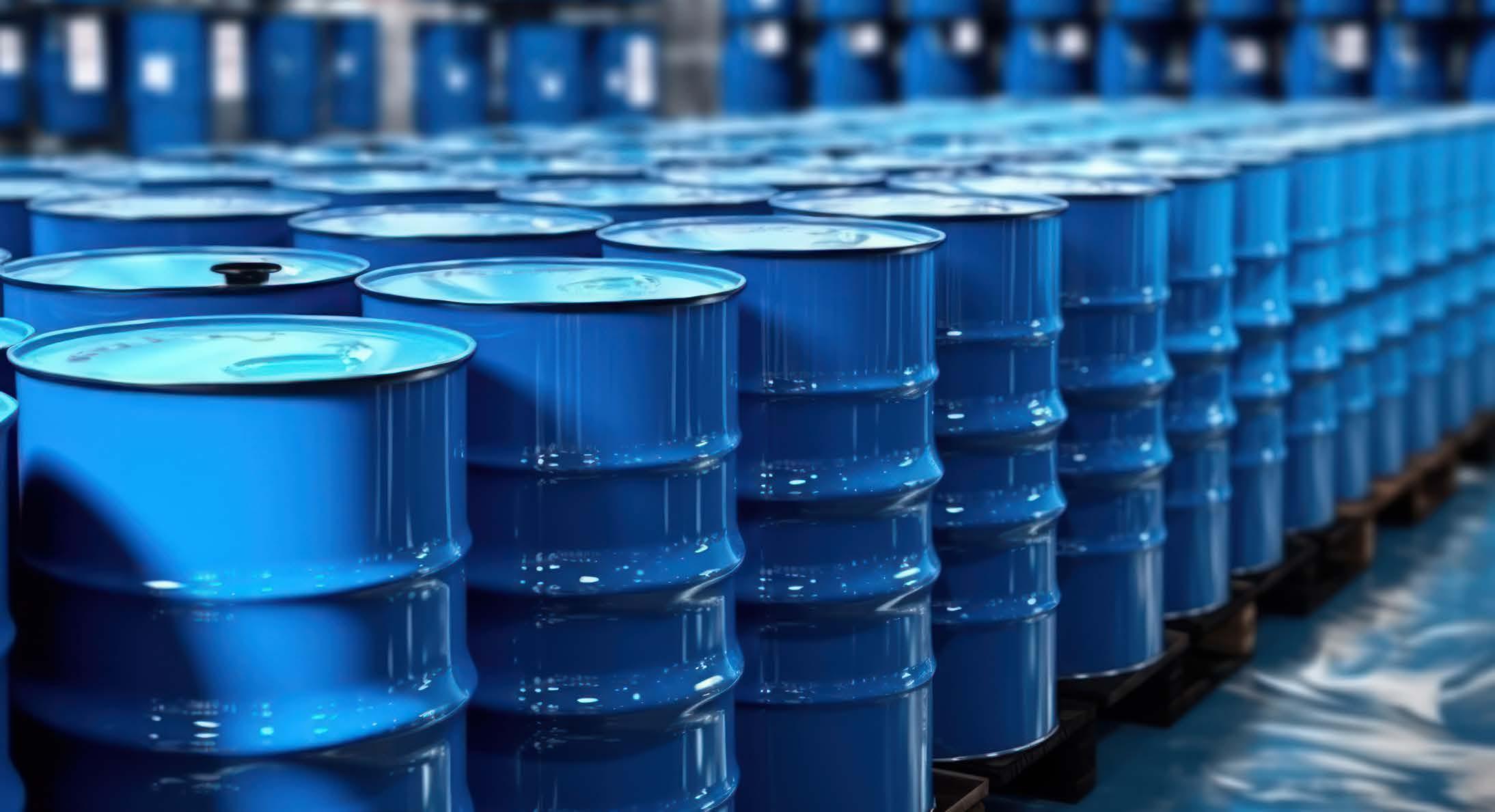
ALTERNATIVE FUELS CLEAN SHIPPING INTERNATIONAL – Spring 2024 34
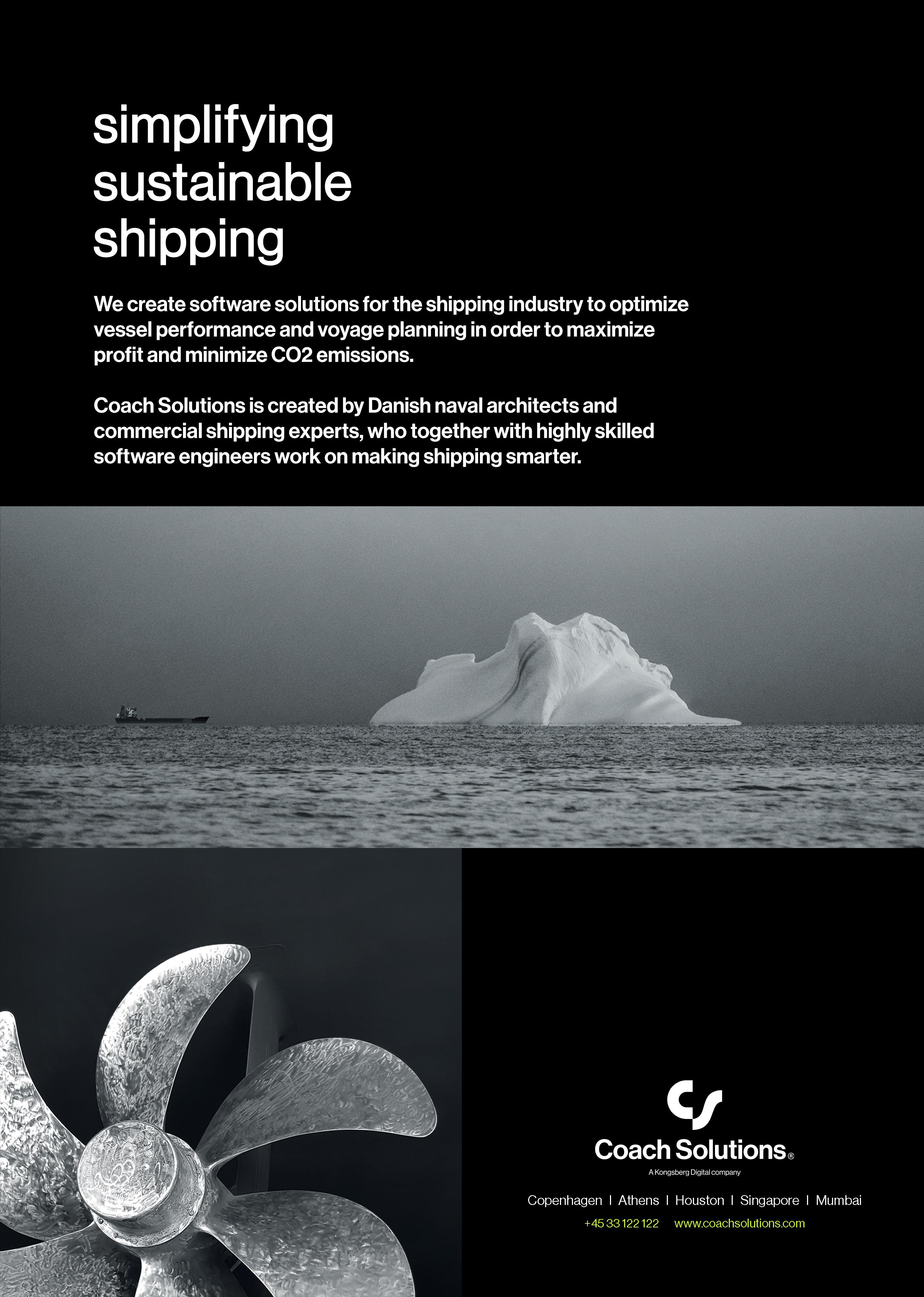
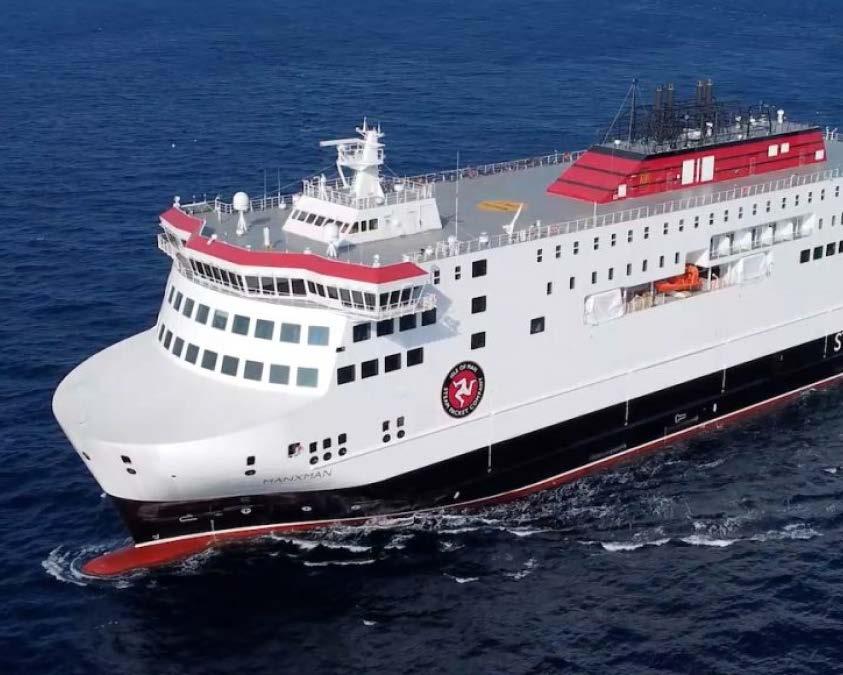
HIGH-TECH CHAMPIONS
Information technology provides an everincreasing number of solutions to tackle environmental issues, as well as ensuring maximum efficiency of operations and safety of crew
The Isle of Man Steam Packet Company, which provides ferry services to and from the Isle of Man, has installed and completed final inspection of NAPA’s full suite of stability management, emergency decision support, electronic logbooks, data reporting and integration systems on its newbuild vessel, Manxman.
The next-generation digital platforms will provide crews and ashore teams alike with critical safety and situational information to ensure the vessel’s safe and efficient operations on its voyages between Heysham and Douglas.
Under the agreement, NAPA, a global provider of maritime software and data services, installed its Loading Computer to guarantee the ship’s stability in all sea conditions, while also providing analytics that help optimise cargo and deadweight management. This will play an integral role in ensuring the safety of the ferry, which has a capacity of 948 passengers and 237 vehicles, in a passage that often sees adverse weather and rough seas.
In addition, NAPA’s advanced Emergency Computer enables the continuous monitoring of vulnerability and risk levels, and delivers survivability assessments in case of damage. This will provide crews onboard and their colleagues ashore with critical insights, in real time, to support decision-making on regular operations. It will also ensure a swift and coordinated response, with direct cloudbased information sharing with emergency response services.
The 133m Manxman is also fitted with NAPA Logbook, which streamlines onboard data collection and reporting. Automated entries and calculations remove duplication, thereby reducing administrative workloads for crews while limiting the risk of errors.
The data collected will facilitate reporting in an increasingly complex regulatory landscape, with the system allowing for reports required under the European Union’s Monitoring, Reporting and Verification (EU-MRV), and the International Maritime Organization’s Carbon Intensity Indicator
TECHNOLOGY CLEAN SHIPPING INTERNATIONAL – Spring 2024 36
The Isle of Man Steam Packet Company’s newbuild vessel, Manxman
(CII) and Data Collection System (IMODCS), to be generated automatically.
Enhanced digitalisation also opens up new opportunities for data integration and analysis, through NAPA Fleet Intelligence, to improve safety practices and operational efficiency. With seamless data sharing between systems, teams can make betterinformed decisions on critical matters of stability, emergency response and compliance, with greater speed and accuracy.
James Royston, fleet operations manager at the Isle of Man Steam Packet Company, says: “Our new flagship Manxman was built with sustainability and efficiency at its very core. Being able to balance this ambition with the need to ensure the safety of our passengers and crews at all times is vital. Smart digital systems are at the heart of this, empowering our teams with the best possible real-time information and efficient processes to reduce the environmental footprint of our voyages.”
Tuomas Hakkinen, account director for ferry and RoPax business at NAPA, says: “Ferries face specific safety and efficiency challenges due to the unique nature of their operations. With the need to constantly manage weight distribution amid frequent passenger and cargo changes, and operate to strict timelines in often challenging weather conditions,
crews need the best tools available to support decision-making in realtime, in calm seas but also in case of an emergency. Onboard digital tools and data collection, together with live information sharing between ship and shore, can make a sea change for everyone involved in ferry operations.
“In practice, enhanced digitalisation helps teams to proactively plan, monitor, and adapt to evolving conditions throughout every voyage, while also simplifying reporting and providing new insights to inform longer-term strategy and optimisation.”
NEW APPROACH FOR BAKU
Shipbuilding software provider SSI will supply its ShipConstructor design and modelling solution to Baku Shipyard in Azerbaijan.
The agreement, supported by SSI’s local partner NDAR, marks a shift in the Azerbaijani shipyard’s approach to ship design and construction, embracing the latest digital workflow technology to enhance efficiency and precision in its shipbuilding projects.
The implementation of ShipConstructor allows Baku Shipyard to optimise its current design and production processes, reducing the cost of vessel design and construction. This updated approach will play a critical role in streamlining operations and enhancing the shipyard’s overall efficiency.
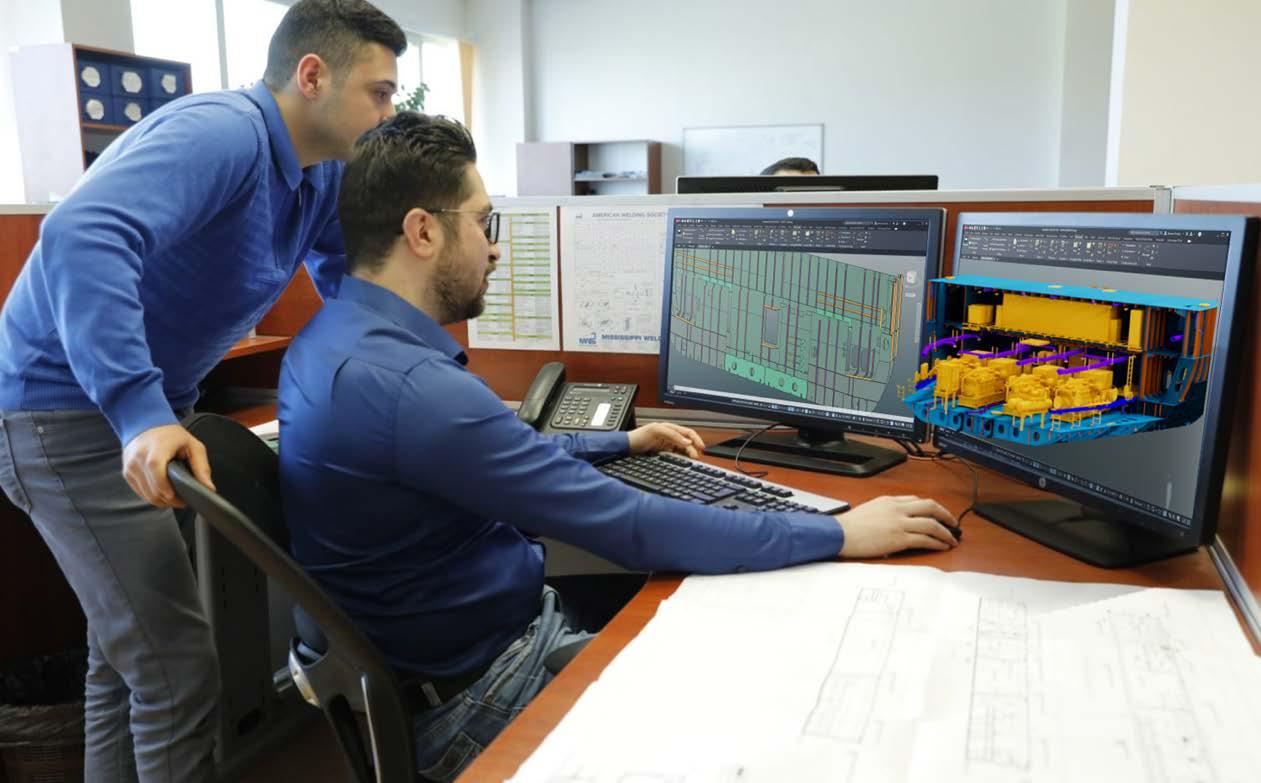
The 3-D product modelling will assist the yard in preventing workflow conflicts between design and construction functions and improving project efficiency. The adoption of ShipConstructor is a strategic move towards integrating advanced digital solutions across the shipyard’s future projects and will enable the yard to keep up with the latest industry developments.
Currently, the shipyard is engaged in four major new construction projects: an oil tanker, chemical tanker, a roll-on/roll-off passenger vessel and a dredger. SSI and NDAR have been instrumental in supporting Baku Shipyard’s transition to the SSI solution.
“Transitioning to an in-house technical office, after a decade using a different system, is a challenging yet crucial step,” says Samir Muradov, engineering manager at Baku Shipyard. “Our adoption of SSI ShipConstructor is fundamental to our shipyard’s future success, ensuring greater control and flexibility in the shipbuilding process.”
CUTTING EMISSIONS
NAVTOR’s Bjørn Åge Hjøllo has been explaining how the Green AI for Sustainable Shipping (GASS) initiative promises to transform the ability of shipowners and operators to slash fuel consumption, emissions and OPEX, ushering in a smarter, greener, more connected maritime future.
Chief sustainability officer Hjøllo believes the project has the potential to cut 1% of all global emissions, a particularly staggering claim for the Norwegian government-backed GASS research project.
Led by NAVTOR, the initiative is a partnership with Grieg Star, Maritime CleanTech, Scandinavian Reach Technologies (ScanReach), Simula Research Laboratory, SinOceanic Shipping, and Sustainable Energy/ SIVA, with support from the Norwegian Research Council, Innovation Norway, and SIVA.
Over the course of the next three years, it aims to champion what Hjøllo calls a “data-driven approach to decarbonisation” enabling shipping companies to identify, analyse and
TECHNOLOGY CLEAN SHIPPING INTERNATIONAL – Spring 2024 37
The importance of 3-D product modelling is essential to Baku Shipyard’s digital journey, preventing workflow conflicts between design and construction functions and improving project efficiency
address inefficient energy use on any vessel, in any location, in any weather conditions, in real-time.
Powered by machine learning algorithms, digital twin technology, and a constant stream of high-quality data, the end result will be, says Hjøllo, “a simple, powerful decision-making tool that allows users to maintain competitiveness, achieve regulatory compliance and, in short, unlock more sustainable shipping”.
“At present, there are no systematic data‐driven solutions for improving energy efficiency onboard, and GASS aims to address that,” he says.
“We want to capture granular information from a very wide range of high frequency data that basically allows us to predict what a vessel’s fuel consumption should be, regardless of vessel type, location, weather and so on. That means integrating precision data from vessel operations and exact operating environments –combining MetOcean condition and forecast data, AIS data and a whole range of reporting and performance data gathered in real-time, all the time, from sensors. That can span anything ranging from propellor information, to engine RPMs, navigational data, speed and so on.”
Once they have this building material, Hjøllo explains, it can be used to craft a digital twin of any vessel that, regardless of operational parameters, can be used to demonstrate optimal
fuel consumption. If the ‘real world’ ship is failing to live up to its virtual sibling’s performance, then the data can be instantly analysed to find out why.
“Maybe there’s an issue with the trim of the vessel, or a problem with fouling, or perhaps the auxiliary engine has been used in a congested area and it’s still running when there’s no need,” he says.
“With much richer, real-time data than ever before, we can unlock up to the minute awareness and performance analytics that enable dynamic voyage optimisation – as opposed to today’s ‘static’ standard –and allow onshore teams and onboard crews to address issues/deviations from plans as they actually happen.
“That’s an incredibly powerful advantage to have, especially in the new regulatory reality of CII ratings and EU ETS, for example, and the associated costs and investments associated with compliance.This could be huge.”
Once extensive testing and validation has been completed, the AI module will be integrated into NAVTOR’s existing portfolio. Hjøllo suggests that this would be on both NavStation (the company’s onboard digital chart table/planning system) and NavFleet (a shorebased management, monitoring and optimisation solution) allowing both vessel and office teams to make the
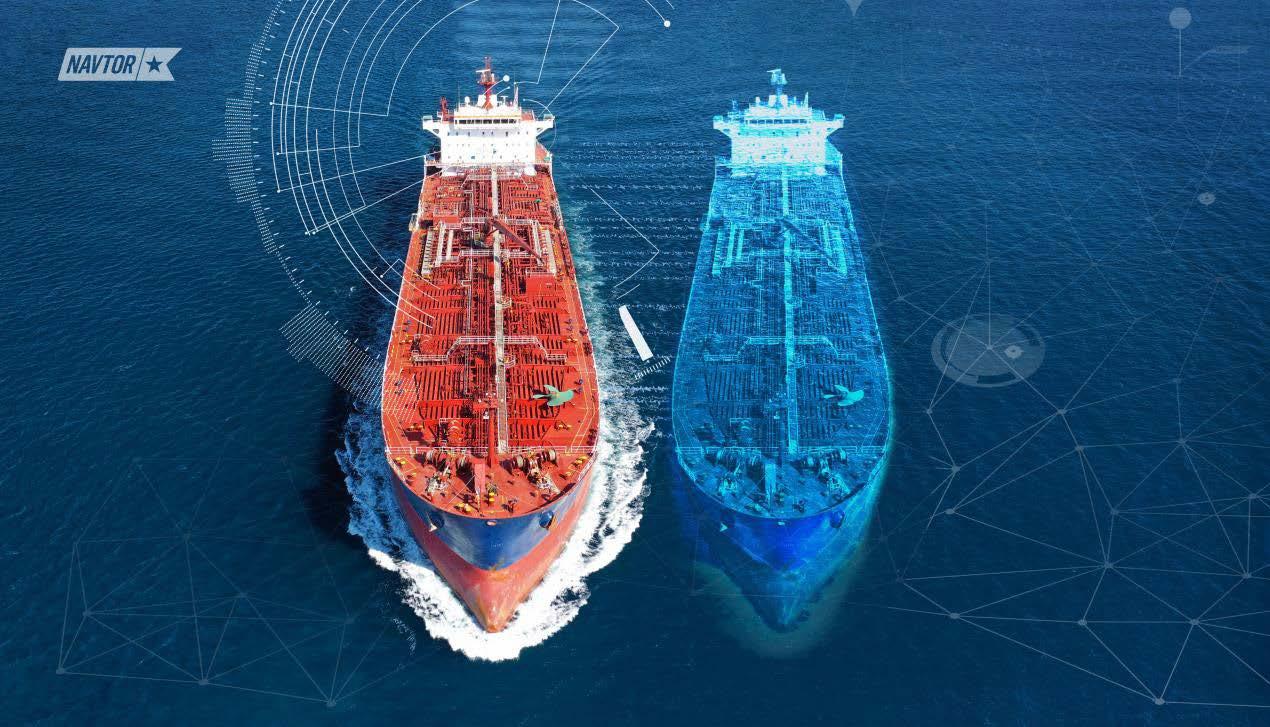
most of up-to-the-minute insights and enhance decision-making.
“If we can dynamically optimize voyages and energy consumption, we can also, by extension, dynamically optimise costs,” he says, “helping owners around the world cut down on their greatest OPEX outgoing.”
Today, worldwide shipping accounts for nearly 3% of greenhouse gas emissions. However, widely reported research suggests that it could reach as much as 17% by 2050 as global trade expands and other industries cut emissions faster than maritime. GASS expects that a machine learning application that dynamically optimises vessel energy use should be able to reduce consumption, and therefore GHG emissions, by 20%.
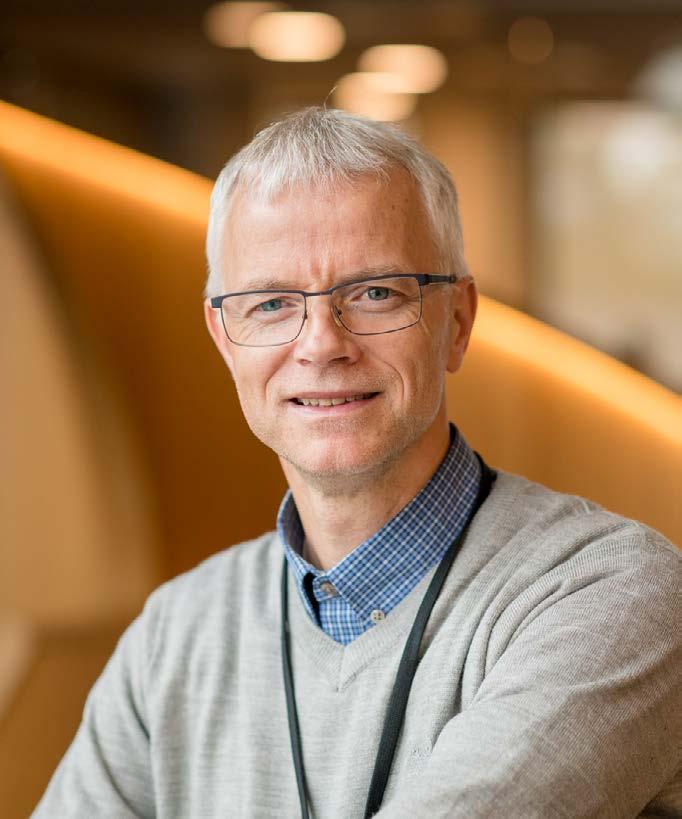
STRATEGIC PARTNERSHIP
In a joint announcement, 90POE and Harbor Lab have announced a strategic integration partnership. This collaboration unites 90POE’s pioneering maritime digital platform, OpenOcean STUDIO, with Harbor Lab’s industry leading e-disbursement platform, underscoring a mutual commitment to enhancing operational efficiencies and ensuring transparent, secure commercial outcomes in the maritime sector.
Richard Buckley, CEO of 90POE, says: “The integration of Harbor Lab’s capabilities with our OpenOcean STUDIO platform is a testament to our commitment to delivering innovative
TECHNOLOGY CLEAN SHIPPING INTERNATIONAL – Spring 2024 38
NAVTOR’s chief sustainability officer Bjørn Åge Hjøllo
NAVTOR and the GASS partners believe a combination of AI and digital twin technology could cut vessel emissions by around 20%
and efficient solutions for the industry. This is not just a strategic alliance; it builds on a long-standing relationship underscored by deep appreciation for their team’s knowledge and expertise.
“This partnership amplifies the strengths of both platforms, offering our combined customers an unparalleled level of efficiency, transparency and operational excellence, helping them stay in control and make better operational and commercial decisions. We believe this synergy will not only enhance the day-to-day operations of our customers but also pave the way for a more connected and digitally advanced maritime ecosystem.”
Antonis Malaxianakis, founder and CEO Harbor Lab, comments: “Our collaboration with 90POE marks a pivotal moment for Harbor Lab and the maritime industry as a whole. By integrating our leading e-disbursement platform with 90POE’s OpenOcean STUDIO, we are not just merging technologies; we are forging a powerful alliance that amplifies operational efficiency and transparency.
“This partnership speaks volumes about our shared commitment to pushing the boundaries of what is possible in maritime solutions. Together, we embark on a journey to redefine industry standards, offering our clients unparalleled value and ushering in a new era of excellence in port operations and disbursement management.”
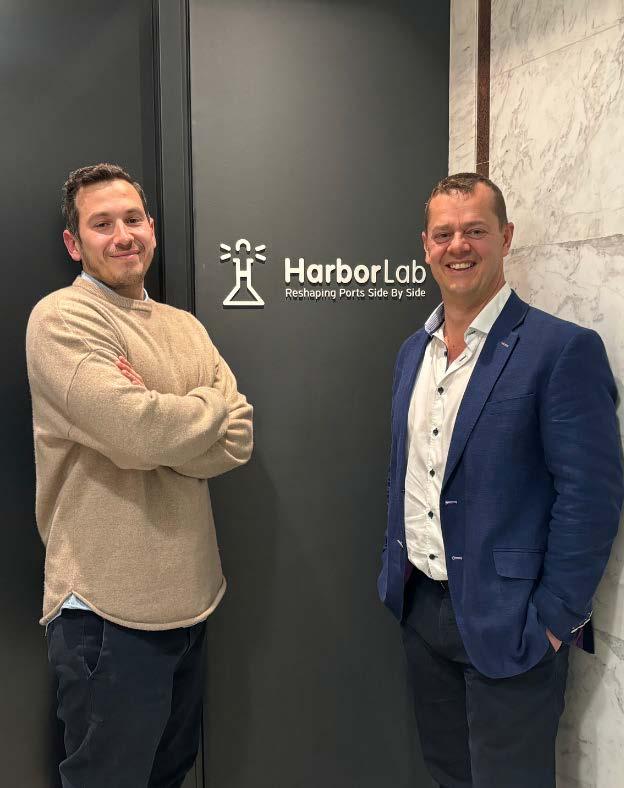
MARITIME MILESTONE
This year marks a milestone in the acceleration of digitalisation in shipping – the mandatory ‘Maritime Single Window’.
The requirement under the Convention on Facilitation of International Maritime Traffic (FAL), requires governments to use a single digital platform or Maritime Single Window to share and exchange information with ships when they call at ports, from 1 January 2024. This will streamline procedures to clear the arrival, stay and departure of ships and greatly enhance the efficiency of shipping worldwide.
International Maritime Organization (IMO) secretary-general Arsenio Dominguez says: “Digitalisation is critical for greater efficiency in shipping. The Maritime Single Window delivers information between ships, ports and government agencies quickly, reliably and smoothly.”
More than 4.6m port calls were recorded globally in 2022. Typically, ships spend at least one full day in port (more or less depending on the ship type).
IMO has supported countries to implement the Maritime Single Window. In November 2023, a generic Maritime Single Window (MSW) platform was handed over to the Port of Lobito in Angola, following a Single Window for Facilitation of Trade project which was supported by the Maritime and Port Authority of Singapore and IMO.
The initiative built upon an earlier successful project coordinated by IMO that saw successful delivery in 2019 of a Maritime Single Window system in Antigua and Barbuda.
The Facilitation Committee of IMO has issued guidelines to assist Member States to implement the MSW, including the revised guidelines for setting up a maritime single window and the guidelines on authentication, integrity and confidentiality of information exchanges via maritime single windows and related services.
The Facilitation Convention was adopted in 1965 and contains Standards and Recommended Practices with rules and procedures for
simplifying formalities, documentary requirements and procedures on ships’ arrival, stay and departure. The Convention has been updated continuously, embracing digitalisation and automation for procedures.
The annex to the Convention makes it mandatory for public authorities to establish, maintain and use single window systems for the electronic exchange of information required on arrival, stay and departure of ships in ports. In addition, public authorities will have to combine or coordinate the electronic transmission of the data to ensure that information is submitted or provided only once and reused to the maximum extent possible.
Other amendments to the Facilitation Convention, which entered into force on 1 January 2024, include those addressing lessons learnt from the covid-19 pandemic and new and amended Recommended Practices to prevent corruption and illicit activities in the maritime sector.
PERFORMANCE MONITORING
Ta-Ho Maritime Corporation, one of the leading bulk shipping companies in Taiwan has strengthened its commitment to digitalising operations by installing NAPA’s performance monitoring, voyage optimisation and navigational risk monitoring on eight vessels. With enhanced fleet monitoring and management, NAPA is supporting Ta-Ho in minimising fuel consumption and emissions.
Under the deal, NAPA, a global provider of maritime software and data services, is delivering its nextgeneration NAPA Fleet Intelligence software, providing Ta-Ho with a full-picture understanding of its operations, including fleet-wide intel on vessels’ locations, past voyages, performance, speed, voyage duration, and fuel consumption. The software has been certified by ClassNK’s Innovation Endorsement framework for its function of accurately assessing and optimizing performance.
An initial pilot using NAPA Voyage Optimization over two months has already demonstrated a total fuel saving potential of 4.0%. In addition to this, trials showed that a further 2.9%
TECHNOLOGY CLEAN SHIPPING INTERNATIONAL – Spring 2024 39
Harbor Lab CEO Antonis Malaxianakis (left) and 90POE CEO Richard Buckley (right)
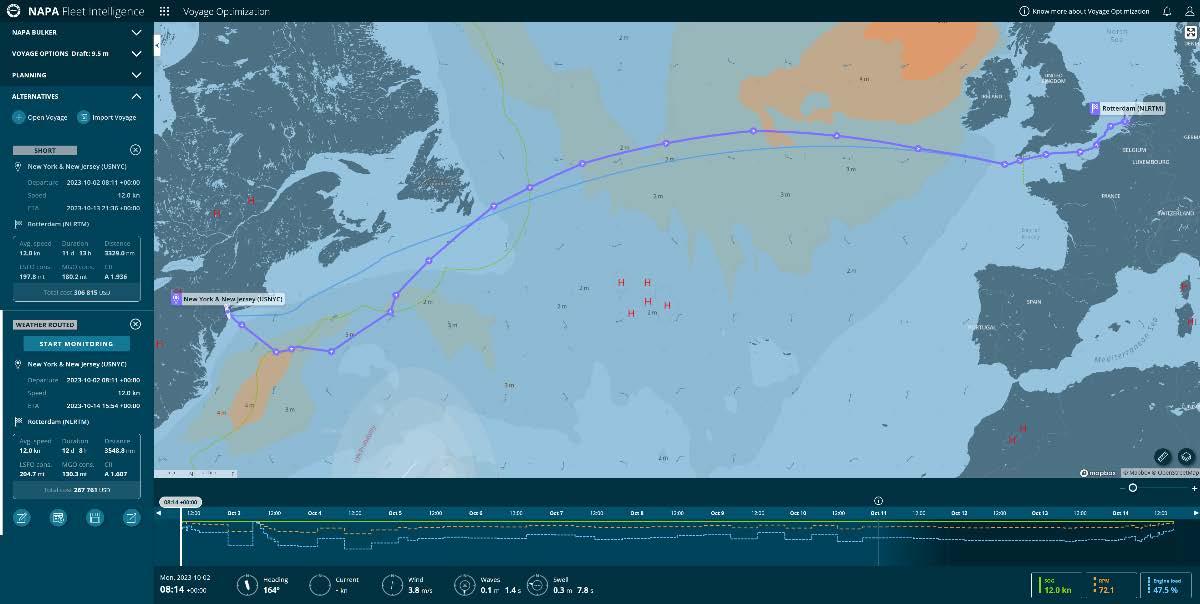
fuel saving was possible by improving vessels’ operational profile using recommendations from the platform. At the same time, using navigational risk monitoring allows teams to gain an overview of high-risk areas and map out voyages in line with this to minimise risk and maximise safety.
Furthermore, enhanced data collection and integration allows Ta-Ho’s teams to take a proactive approach to fleet management where, for example, insights on a vessel can help optimize maintenance schedules and manage aging. This operational optimisation contributes to enhanced energy efficiency and safety.
Greater intelligence on fleet performance will support decisionmaking in line with tightening environmental regulations, like the IMO’s Carbon Intensity Indicator and the European Union’s Emissions Trading System, allowing teams to make better-informed and strategic decisions to minimise their carbon footprint.
DIGITAL PLATFORM
Inspection, technology and data business Idwal has launched Idwal ID – a comprehensive condition improvement programme. The digital platform delivers defect management, fleet analytics and benchmarking through detailed ship inspections and reports through dynamic data.
Idwal ID integrates all aspects of the inspection and condition monitoring process, enabling the interrogation of
data to achieve insight into overall fleet integrity, as well as specific issues at a granular level. It allows all relevant inspection information to be recorded in one place, facilitating continuous condition improvement.
Idwal has inspected 15% of shipping’s global fleet since 2019. During this time, the company has performed more than 10,000 inspections across 100 countries, which contributed to an average of 15 inspection reports delivered every working day last year.
Idwal ID uses the 10m data points gathered by Idwal over the past four years to provide grade analytics; benchmarking assets, vessels and fleets against global averages. It provides access to large volumes of data for benchmarking purposes, while keeping all proprietary information confidential.
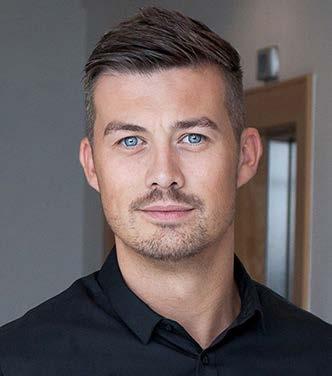
Nick Owens, CEO at Idwal, says: “Idwal ID brings together our market-leading inspections, maritime experience and digital technology to create a secure, one-stopshop repository for all inspection information, which can be quickly and easily accessed, analysed, shared and updated. This empowers users to make confident and informed decisions with information that provides a clear business case for necessary change, thereby optimising budget spend and operational efficiency.
“We have collaborated with several highly regarded shipping companies to develop Idwal ID, including Anglo American, CMA CGM, Cobelfret, Fednav, Swire Bulk, and Tufton. The platform has been tested, sharpened, updated and improved in cooperation with these organisations to ensure it provides exactly the right information and functionality. We have every confidence that this intuitive digital platform will help save time and money, take effective action, and demonstrate excellence both within an organisation and externally - to shippers and charterers, for example.
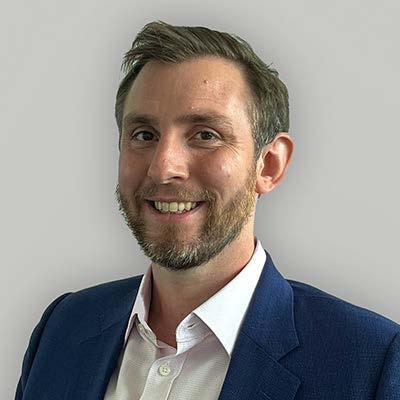
George Haysom, CCO at Idwal, says: “We know that using Idwal ID minimises manual processes and reduces the workload for technical teams. In addition, instant access to both the granular detail of individual inspection reports and high-level benchmarking against the global fleet enables recommendations that non-technical people can understand, which technical people can then drill into and implement. This increased
TECHNOLOGY CLEAN SHIPPING INTERNATIONAL – Spring 2024 40
Nick Owens, CEO at Idwal
George Haysom, CCO at Idwal
Screenshot of a potential route on NAPA Voyage Optimization for a bulker
visibility supported by simple and clear reporting tools not only provides a solid business case for either targeted maintenance investment or reducing spend, it also provides independent validation to demonstrate excellence.”
SIRE DEVELOPMENT
The Oil Companies International Marine Forum (OCIMF) has commenced ‘Phase 3’ of the transition to its digitalised Ship Inspection Report Programme (SIRE 2.0), meaning all programme users can now participate in trial SIRE 2.0 inspections.
OCIMF has been rolling out SIRE 2.0 (the digitalised and enhanced version of the widely used tanker inspection programme SIRE) in a ‘phased approach’ over the past year. Phase 3, the industry-wide ‘beta-testing’ phase of the roll-out, provides the opportunity for all vessel operators, programme recipients and submitting companies to fully familiarise with the new inspection process under SIRE 2.0.
OCIMF has notified its membership and programme users that this will be the only opportunity to participate in SIRE 2.0 inspections and identify areas for improvement before SIRE 2.0 becomes the commercial tanker inspection regime at Phase 4 and SIRE (VIQ7) is withdrawn
Aaron Cooper, programmes director, OCIMF, explains: “SIRE 2.0 represents a seismic shift in the way tanker inspections will be conducted which is why we have taken a gradual approach to rolling out the new programme. Having successfully completed end-to-end trial inspections with a sample group, we’ve now reached a critical milestone; giving all programme users the opportunity to trial SIRE 2.0 inspections in Phase 3 of the roll-out.
“Programme users have been working exceptionally hard to familiarise themselves with all the resources and training materials developed to support the new inspection regime, and for that we are very grateful. This trial inspection period coupled with the anonymisation of reports allows all users to put theory into practice with no commercial implications. We strongly encourage all programme users to participate.”
SIRE 2.0 inspections will be
conducted in digital format, in realtime, with inspectors completing a Compiled Vessel Inspection Questionnaire (CVIQ) using a tablet device.
The move to a digital solution means that every tanker inspection will be bespoke, with questions drawn from the ‘SIRE 2.0 Question Library’ using an algorithm to select questions based on the type of vessel, its outfitting and operational history to create a one-time Compiled Vessel Inspection Questionnaire (CVIQ).
As the CVIQ generated will be bespoke and specific for each inspection for each individual vessel, users of SIRE 2.0 should be prepared to respond to all questions within the SIRE 2.0 Question Library applicable to a particular vessel. Every question will require the inspector to give a response in relation to Hardware, Processes and Human Factors, and observations can be supported with photographs, where allowed.
OCIMF advises industry to use all the documentation and training resources made available on the OCIMF website to ensure that personnel at sea and onshore are fully prepared for SIRE 2.0 inspections.
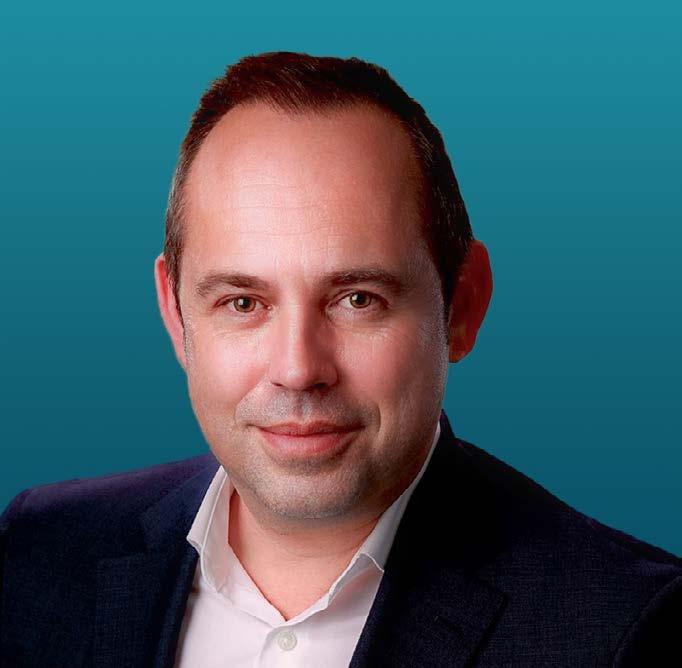
CONTAINER TRIAL
Ocean Network Express (ONE) has announced the launch of the world’s first dual-temperature refrigerated container trial equipped with Controlled Atmosphere (CA) functions in collaboration with Pan Pacific International Holdings Inc (PPIH) and NAX Japan.
It is the world’s first use of marine transportation of the dual-temperature
refrigerated container equipped with CA functions that will transport various types of perishable goods and fruits from Japan to overseas stores of Don Quijote, the largest Japanese discount store chain operated by PPIH.
In addition to transporting two different temperature zone commodities, the container also has CA functions, which prolong the shelf life of fruits and vegetables. It will also create a more efficient way to transport cargoes in small quantities and reduce inventory risks, ultimately reducing cost, CO2 emissions and food loss.
A foldable partition is installed in the middle of a container to accommodate different temperature zones. The room adjacent to the reefer unit supports both chilled and frozen temperatures, maintaining cargo from -30°C to +30°C, similar to a standard refrigerated container.
In the other compartment of the container, a thermal fan sends cold air through the ceiling to maintain cargo between -5°C and +30°C. Depending on a customer’s requirements, the position of the partition can be adjusted, and the partition can also be stored in the ceiling when it is not in use, turning it into a stand refrigerated container.
PPIH currently operates 43 stores (as of December 31, 2023) in six Asian countries, including the specialty store DON DON DONKI, which offers mainly Japanese products. As fresh Japanese fruits and vegetables are popular at each store, maintaining freshness during ocean transportation has always been challenging.
Furthermore, the small volume of cargoes for countries with fewer stores, such as Thailand and Malaysia have made it crucial to improve container loading efficiency and reduce transportation costs.
By utilising the dual-temperature refrigerated CA container, ONE, PPIH, and NAX Japan strive to enhance container loading efficiency by transporting smaller quantities of a more diverse range of perishable commodities in a single container. This approach not only aims to reduce overall transportation costs, but also maintains the freshness and quality of goods throughout the shipment.
TECHNOLOGY CLEAN SHIPPING INTERNATIONAL – Spring 2024 41
Aaron Cooper, programmes director at OCIMF (© OCIMF)
COACH SOLUTIONS: DECARBONISATION IS AN IMPERATIVE; HOW YOUR FLEET GETS THERE IS ABOUT CHOICES
IT solutions can help to drive sustainability, but they require a positive mindset towards change, writes
Christian Rae Holm, Managing Director, Coach Solutions.
The process of increasing vessel efficiency and thus reducing carbon emissions is a daunting task; but it holds at its heart a simple proposition. If it’s possible to collect validated vessel performance data then it is possible to create actionable insights that can be used to drive measurable improvements.
We help shipping companies use software to understand their carbon emissions and make choices about how to optimise their voyages to create financial and environmental sustainability. We don’t claim that we can save the world; it’s regulators that set the course for decarbonisation.
We think that sustainability means more than just defending the environment, it’s about protecting your business. Of course shipping has a really strong focus on carbon emissions reduction and that’s a good
thing, but the truth is that take-up is always going to be slow unless there is a benefit to the bottom line.
Of course shipping has a really strong focus on carbon emissions reduction and that’s a good thing, but the truth is that take-up is always going to be slow unless there is a benefit to the bottom line.
We provide the tools that owners can use to optimise their operations but we understand that ultimately, sustainability is in the hands of our customers.
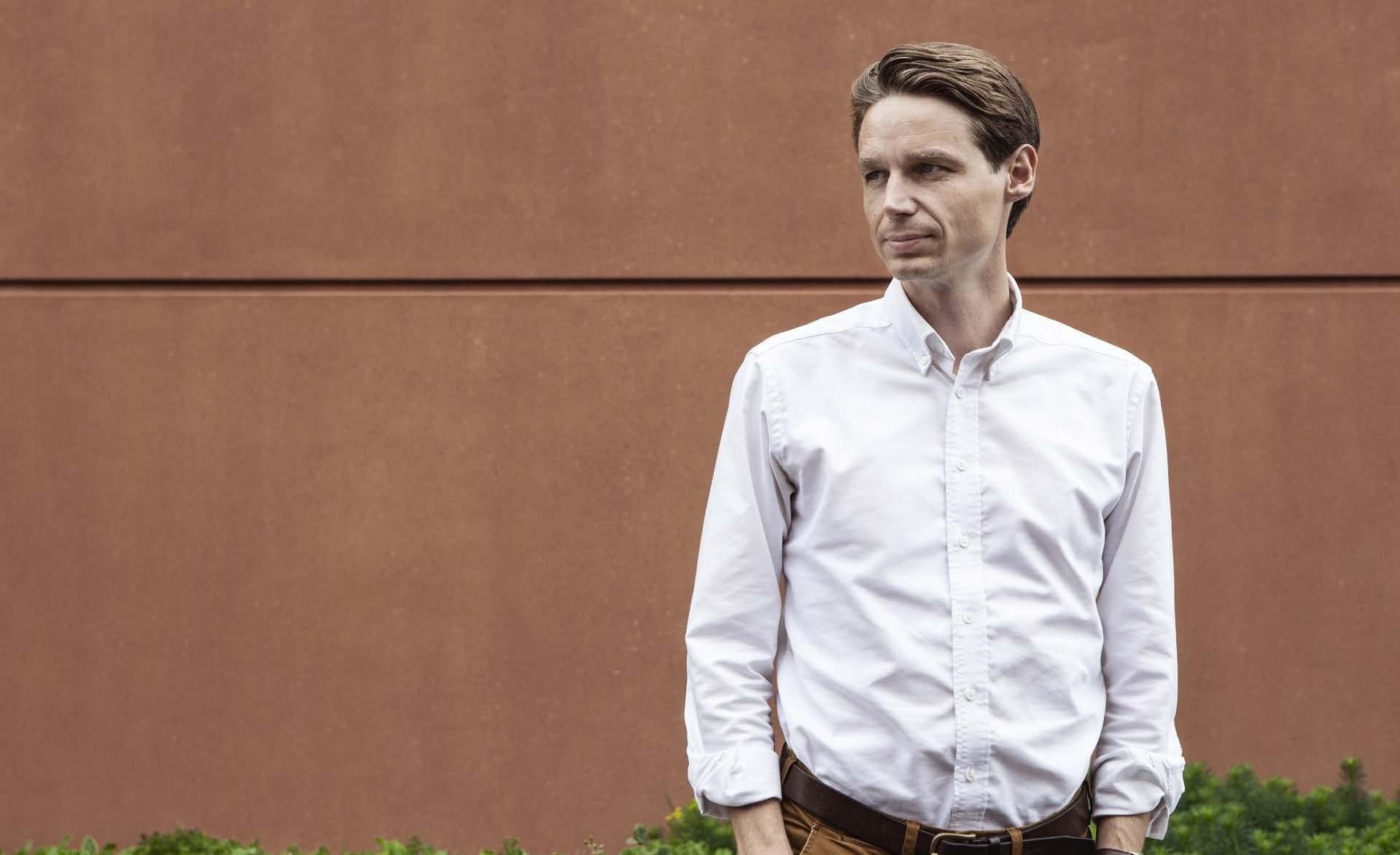
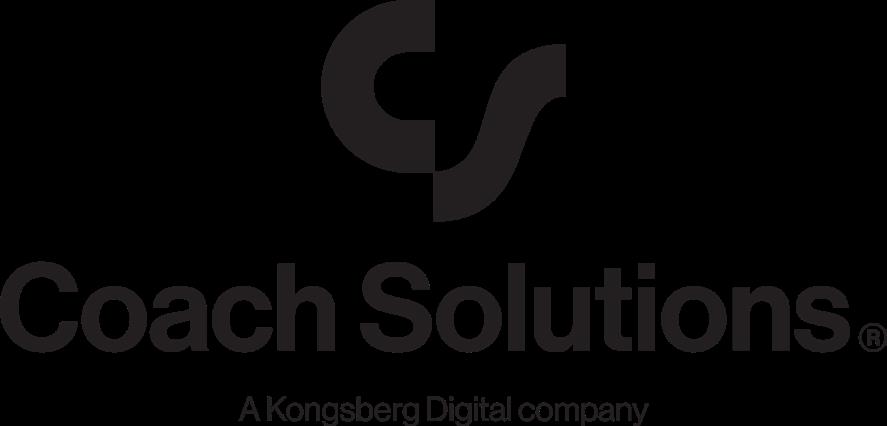
COMPANY PROFILE CLEAN SHIPPING INTERNATIONAL – Spring 2024 42
Christian Rae Holm, Managing Director, Coach Solutions
Software tools shouldn’t require huge and costly integration projects with shipping company operations either. We can show shipping companies exactly how their vessels are performing by gathering small amounts of data collected by crew and validating it. This restricts users to providing only the information considered the most useful and ignoring the rest.
By having the master and the chief engineer provide this data, there is a far greater probability that it will be not just correct but also useful in accurately determining vessel performance. With the right data in place, the owner can choose how they use it.
Owners can then adjust their route and speed to minimise fuel consumption – or not – but at a minimum they know their options.
Many owners will still execute voyages at high speed, even though it would objectively be ‘greener’ to sail more slowly. They do it either because they have always done it this way, or because using a tool like ours, they can see that it is - all things consideredthe best choice for their business.
It is this difficult choice, with many
moving parts, that we want to support our users in, because it is impossible to understand without a tool like ours. What matters is having a complete view of the voyage, not just accessing the available information but having the ability to compare it to something and make changes along the way.
Any software solution must cater to the operator’s commercial needs; simply presenting data does not equal insight that necessarily has any value. Understanding vessel performance also means looking beyond simplistic numbers for energy or fuel savings and having a better view of the big picture.
For software to have value we must be an objective partner; we don’t have the opinion on what’s right for each owner or voyage; we deliver objective data and analysis and inform the choices that owners make. That can lead directly to more sustainable operations – and the emphasis is financial as well as environmental.
The key aspect remains to be the ability to optimise on the right data. Without valid data you are just another person with an opinion. This sounds logical but many software systems don’t include a proper validation process but simply rely on whatever
reporting already exists onboard a vessel which can be anything from free text e-mails to excel sheets.
It is possible to derive a single source of truth on vessel performance and have it independently verified but it does require applying some more structure and co-operation to the owner/charterer relationship.
The switch to predictive, proactive, trust-based vessel performance data will result in better estimates of both emissions and bottom line performance and it also enables the owner to decide which voyages to perform and which to decline.
We fully support the agenda of decarbonisation and the need for increases in vessel efficiency and we agree that global legislation is the best way to guide that process. However, we also believe that daily decisions about vessel fixtures are subjective. Most shipowners are compliance-minded; they want to trade and these days that means lower carbon and higher efficiency. For them, it’s about making that decision and having the tools to realise it.
For more information, contact: coachsolutions.com

COMPANY PROFILE CLEAN SHIPPING INTERNATIONAL – Spring 2024 43
NAX Japan is also working with ONE as a logistics partner in the export of perishable goods.
The manufacturing of the dualtemperature refrigerated container and trial shipments are supported by a subsidy project conducted by the Ministry of Agriculture, Forestry and Fisheries in Japan in the Fiscal Year of 2022.
ONE, PPIH, and NAX Japan will continue this trial shipment to contribute to more stable exports of Japanese agricultural products and their global promotion.
DIGITAL SHIPYARD
HD Hyundai Heavy Industries, the world’s largest shipyard, has announced a joint development project (JDP) with NAPA and CADMATIC, two leading providers of smart 3D maritime design, engineering and information management software, to accelerate the digital transformation of the shipbuilding industry.
The joint project will develop a nextgeneration ship design and information management solution, which will also embed a product lifecycle management (PLM) system.
The partnership will harness advanced 3D models and the latest developments in information management technology to create intelligent solutions to support the entire ship building process.
This will help HD Hyundai Heavy
Industries implement its vision of a ‘digital shipyard’, where smart data and digital twins support the optimisation of the design process from the early stages to construction and production, and then provide a valuable source of information throughout the ship’s lifetime at sea.
The new partnership aims to deliver high shipbuilding efficiency including shorter time schedules, lower costs, and higher quality in large and more complex shipbuilding projects via digitalisation and a seamlessly integrated solution.
The platform will enhance the collaboration of different shipyard departments and significantly improve information accessibility between the hundreds – if not thousands – of people involved in the ship design and building process. The goal is to optimise processes and enable error-free design for production and safe operation.
By digitalising and optimising the ship design and construction processes, the project will also help HD Hyundai Heavy Industries to respond to growing demand by shipowners for innovative energyefficient designs that will support their decarbonisation transition, and enhance its capability to deliver next-generation vessels, including alternative fuels or vessels equipped with new technologies such as batteries or wind propulsion.
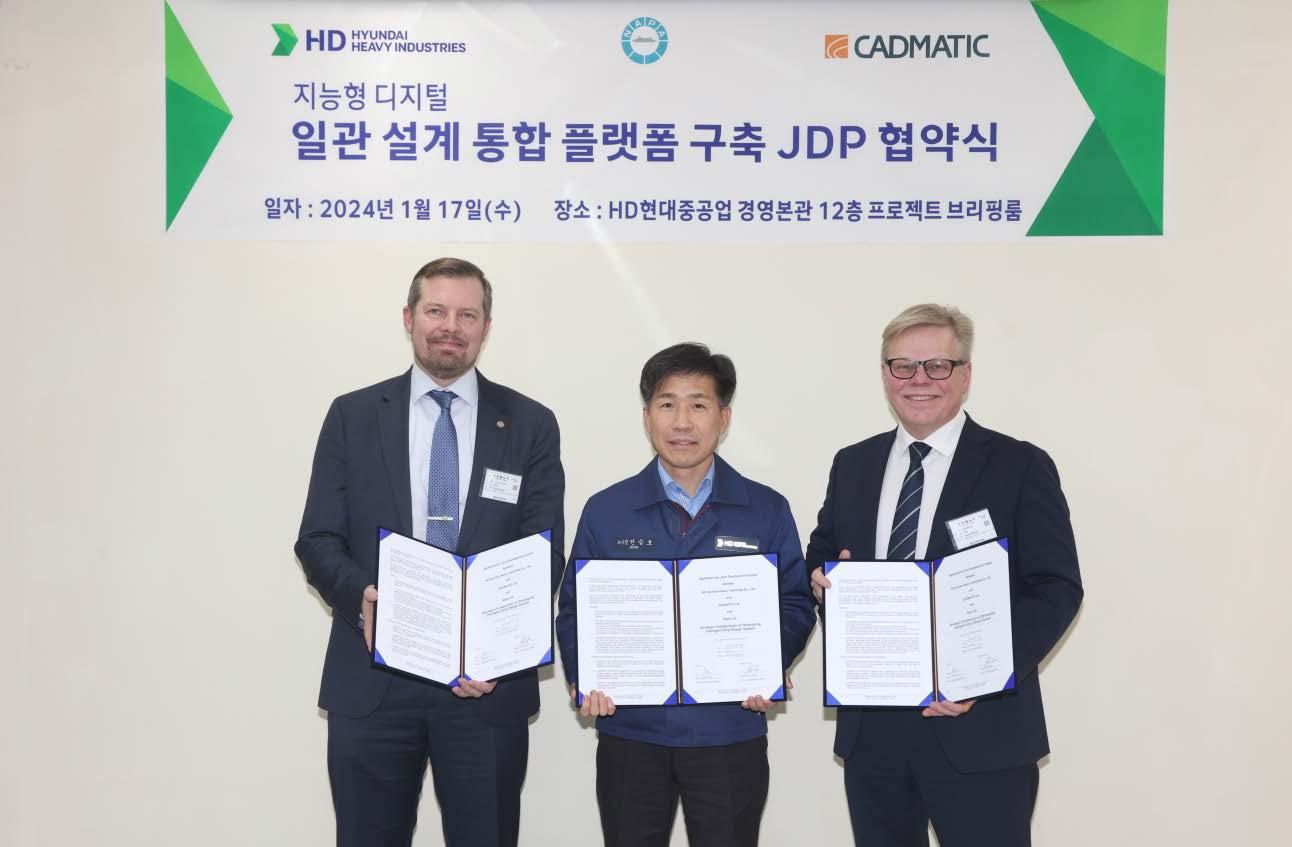
TRACKING PLATFORM
Technology company ZeroNorth and shipping company Euronav have announced that ZeroNorth will acquire and manage Euronav’s Fleet Automatic Statistics and Tracking (FAST) platform. As part of the deal, Euronav also becomes a customer of ZeroNorth’s full platform offering.
FAST collects advanced highfrequency data in real time from sensors across Euronav’s fleet. Euronav has successfully implemented the FAST platform across its fleet, using ship reporting, voyage optimisation and ship optimisation through the use of high-frequency data.
FAST has significantly improved collaboration between ships and all shore departments, optimised vessel and fleet utilisation, reduced fuel consumption, and lowered OPEX. These improvements have had a tangible positive impact on Euronav’s bottom line results and have also helped improve its sustainability strategy.
The data can power up voyage and vessel optimisation decisions, allowing crew and shoreside teams to collaborate in making the most detailed live adjustments to improve sustainability and profitability for Euronav’s diverse fleet of globally operating vessels.
Over time, the plan is for ZeroNorth and Euronav to integrate FAST’s data and full functionality with the ZeroNorth platform. This highfrequency data and FAST’s existing functionality will drive ZeroNorth’s data flywheel, accelerate the industry’s green transition and massively increase the company’s positive impact on the market.
The transfer comes at a time of increasing transformation for the global trade value chain, with digitalisation and data now at a tipping point for impact. The new collaboration between the two companies will radically accelerate the digitalisation of shipping, uniting two sustainable shipping leaders with a shared vision to make a positive impact on the planet.
Pelle Sommansson, chief growth officer and EVP, ZeroNorth, says: “We are extremely excited by this new partnership with Euronav, which is
TECHNOLOGY CLEAN SHIPPING INTERNATIONAL – Spring 2024 44
Mikko Kuosa, CEO at NAPA Group (left), Seung-Ho Jeon, CTO at HD Hyundai Heavy Industries (centre), Jukka Rantala, CEO at CADMATIC (right).
already recognised as one of the most sustainable and progressive companies in the shipping industry. By acquiring FAST and incorporating it into our existing platform, we believe we will accelerate the transformation and sustainability strategies of a large part of the global fleet.
“High-frequency data is the solution to many industry challenges. Optimised journeys play a major role in achieving zero emissions in our industry. That’s why we are proud to work with likeminded leaders at Euronav, because together we can change the way that our customers, and shipping as a whole, operate for the better.”
Patrick Declerck, operations manager, Euronav, adds: “Euronav has a clear ambition to be a leader in sustainability and efficiency. We are proud to partner with ZeroNorth, which is already making a significant impact on enabling green global trade.
“Together, we are leading brands focused on creating a better world. We believe this new partnership will enable us to drive the journey to zero emissions across the shipping industry to decarbonise today and navigate tomorrow. This will make more parties aware of the transformative impact data can have on their operations.”
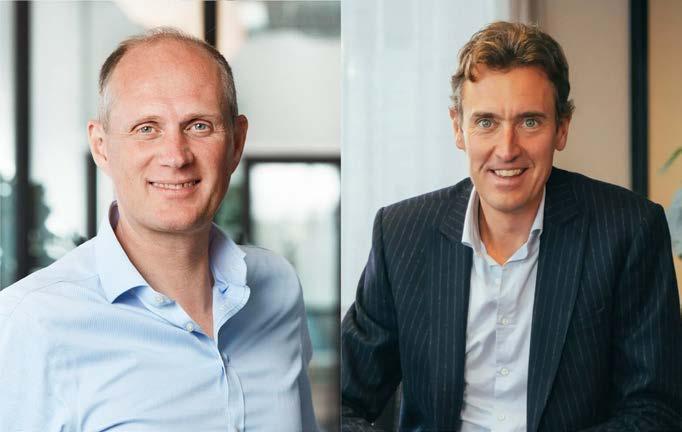
NAPA STUDIO SERVICE
Industry partnerships are key to developing new products and technological services if the industry is to overcome operational challenges surrounding shipping’s energy transition.
Software provider NAPA has introduced NAPA Studios, an initiative that will foster cross-industry partnerships to deliver new data-driven solutions and insights on some of the most imminent ship design, safety and
operational challenges faced by the maritime industry.
The initiative will leverage NAPA’s expertise to resolve some of the critical uncertainties of shipping’s energy transition, among other challenges.
It will bring together data and industry expertise from shipowners, charterers, shipyards, classification societies, but also financiers and insurers, in joint projects that will provide more clarity on the practical implications of deploying new technologies or contracts, and help develop the new technologies and operational frameworks needed for the transition to net-zero.
NAPA Studios will work directly with individual shipyards, shipowners, charterers, and other supply chain stakeholders in tailored projects that will leverage NAPA’s advanced software, performance models, and experience with digital twins and simulation tools.
This will, for example, enable shipyards to make a greater use of ships’ operational data to improve future designs, while other projects will support shipowners and charterers in assessing their fleet’s environmental performance and potential emissions reductions and cost savings.
Modelling will provide a datadriven picture of the future impact of deploying new technologies, such as weather routing, wind propulsion, or batteries, on the vessel’s safety, operations and cargo capacity. It will also be used to validate the performance of new systems once installed on board.
“For the past 35 years, NAPA has supported the maritime industry from shipyard to sea, with technology spanning ship design and operational safety and efficiency,” says Naoki Mizutani, executive vice president for NAPA Studios at NAPA.
“Today, we are proud to take this to the next level by leveraging NAPA’s unique digital technology and maritime expertise to foster new partnerships and develop new solutions. In practice, this means using solid digital tools to solve practical problems such as helping shipyards and owners assess the future impact of new technologies on their specific ships. But it doesn’t
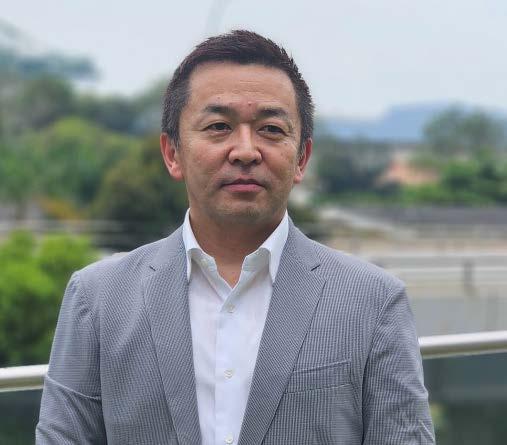
stop there – our aim is also to reach across all key maritime stakeholders, including financial, insurance, governments and cargo owners, to enable the industry to confidently embrace new partnerships and business models, which are essential to solve current uncertainties and make the energy transition a reality.”
“We want to respond to shipping’s growing demand for data-based evidence and proven solutions for every aspect of the huge transformation ahead, and by doing so, contribute to the whole industry’s success,” Mikko Kuosa, CEO of NAPA, adds.
“We are eager to work with companies from across the industry to share knowledge and experience and create innovative solutions together. Our vision is that by enhancing collaboration, we can help bring the clarity that the sector demands to be able to face some of its most pressing challenges safely and in a way that makes business sense for everyone.”
“The maritime sector has entered a period of fast-paced change that brings significant uncertainty,” says Taku Nakamoto, general manager at Marubeni. “As the industry considers the best avenues to comply with new environmental regulation and respond to pressure from customers and investors, what it needs is certainty on what the energy transition should look like for their fleets and businesses.
“Having worked with NAPA on a project to assess the impact of voyage optimisation on CII compliance, we welcome the launch of NAPA Studios, which will bring our partnership to the next level, and deliver much-needed insight for the industry more broadly.”
TECHNOLOGY CLEAN SHIPPING INTERNATIONAL – Spring 2024 45
Søren Meyer, CEO of ZeroNorth [left]; Alexander Saverys, CEO of CMB Group [right]
Naoki Mizutani, executive vice president for NAPA Studios
SIMPLIFYING SOLUTIONS
In a climate of increasing complexity, with new regulations, environmental concerns and commercial considerations, how can owners and operators control their fleets, and futures, from dry land? NAVTOR’s Tor Håkon Svanes believes the answer lies in innovation and integration – developing solutions that evolve in line with the needs of a dynamic global industry.
Svanes and his team have developed, and are continually developing, one such solution. NavFleet, originally launched in 2017, is billed as a “complete ship operations platform”. It works by integrating multiple streams of data – from vessels, shore-based facilities, and business-critical sources – into a single solution, empowering management teams to monitor, refine and improve ship- and fleetwide performance.
It not only provides situational awareness and control, unlocking smarter decision making, but also automates and simplifies tasks –seamlessly gathering data across NAVTOR’s joined-up digital ecosystem.
“It sounds complex, but the benefits are easy to understand,” Svanes states, “and that’s particularly true when it comes to compliance.”
The latest NavFleet updates provide a powerful demonstration of just this point. Released in November last year, NavFleet 1.8 introduced an advanced Emissions Simulator to help customers navigate CII. This draws on data ranging from vessel noon reports to
e-Navigation and performance data – all of which is computer- and humanvalidated – to gauge vessel and fleet historical emissions and model them for future predictions.
Parameters can be easily changed, and vessels compared, to give indepth insights into how assets will perform and what CII ratings they can expect. All without the need to juggle an ocean of different documents and service providers.
The just-released NavFleet 1.9 adds to this with a range of updates, including an EU ETS dashboard, statement and voyage estimator tailored to address this year’s new regulatory reality. This creates estimates of allowances, EUA statements and the necessary reports in an instant – empowering both compliance and the ability to transparently share both data and costs with charterers and freight owners.
With what seems like a constant flow of new regulations, such digital abilities are, Svanes says, no longer a “nice to have” but a “must have”.
“There’s a lot of excellent ship- and fleet managers out there, many of whom are very adept at using Excel sheets, various reports and a range of methods to work through required tasks,” he says.
“So, you could argue you don’t need this kind of integrated solution yet… perhaps for the next month, six months, or year. But it’s a fact of the matter that sooner or later you will. Complexity is increasing, regulatory and market demands are accelerating,
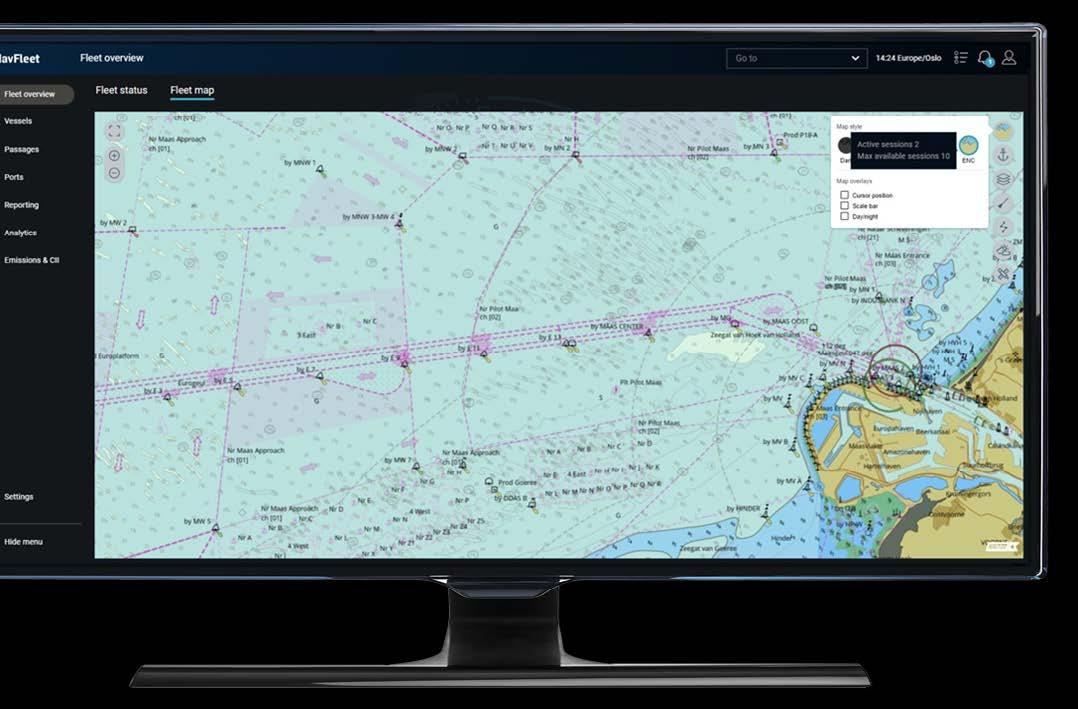
and without the right digital tools it’ll be impossible to keep up.”
January’s 1.9 update also saw the introduction of online ENCs for shorebased teams, while a new earthquake and tsunami warning is on the cusp of being integrated now (“an important feature for our Japanese customers in particular”). The next major release in spring will add a range of notifications to improve monitoring and situational awareness, in addition to further improvements on the Emission and CII Module.
Digital logbook integration should follow later in the year, while a late summer update will add a service helping users understand and plan for the FuelEU Maritime regulation, coming into force in January 2025.
“This is a further requirement targeting greenhouse gas emission intensity for ships trading in the EU, with added shore power requirements for container and passenger vessels,” he notes.
“We’re refining the NavFleet module now to give our customers the ability to stay ahead of the regulatory game here, paving a way for simplified compliance as and when its needed.”
“By staying close to the industry, being at the core of the latest research projects (NAVTOR is currently leading the Green AI for Sustainable Shipping, GASS, initiative) and constantly developing our own competency –something boosted by the Voyager deal – we can ensure we offer our customers the very best smart shipping solutions available. NavFleet, I believe, is a prime example of that.”
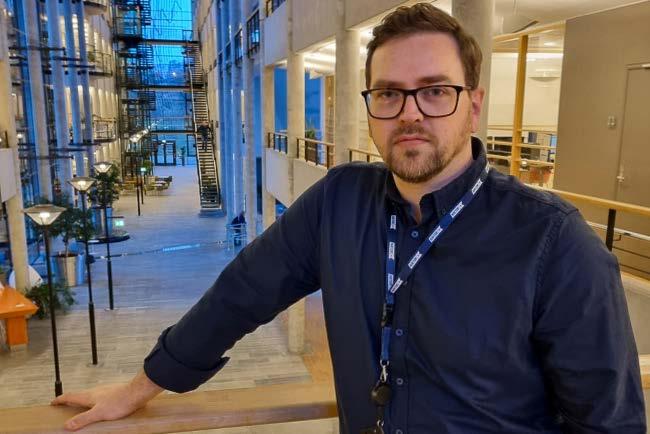
TECHNOLOGY CLEAN SHIPPING INTERNATIONAL – Spring 2024 46
NavFleet, now featuring online ENCs for shore-based teams
NAVTOR’s Tor Håkon Svanes
PROTEA: STATE-OF-THEART SOLUTIONS
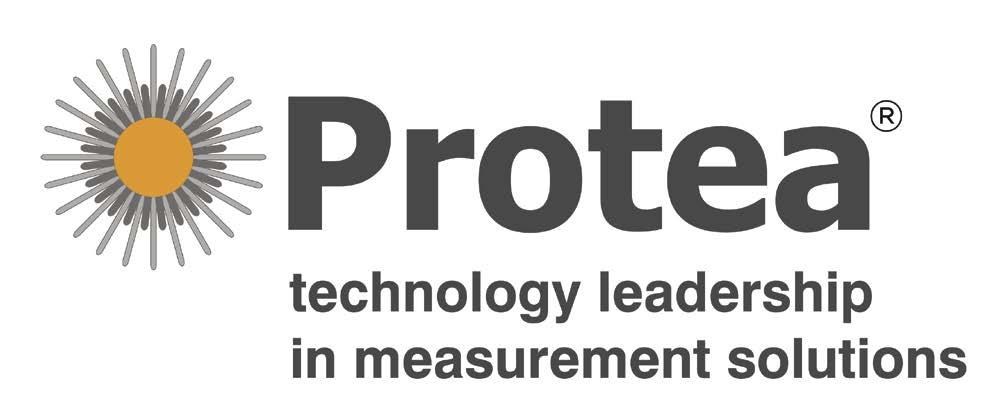
Protea Ltd manufactures an extensive range of gas analysers for use in both continuous emission and process monitoring. This enables Protea to select the product best suited to the application without compromise. Protea operates two modern facilities incorporating application development, production and aftersales support.
Our customers are supported by a worldwide partner company network employing factory trained service personnel, supported by our service team. Protea is dedicated to working with our customers to develop state-of-the-art solutions to meet the requirements of critical industrial/marine sectors to meet their environmental goals. Protea’s proven in-situ technique is both cost effective and reliable.
Protea’s fixed and portable analysers can monitor emissions from many classes of vessel, (for example cruise ships to platform support vessels.) This is an ideal solution that complies with International Maritime Organization regulations. Proteas P2000’s are used to monitor/report emissions from vessels with and without exhaust gas cleaning systems/ scrubbers and have been developed to meet the requirements of multifuel vessels.
Robust and with proven reliability, up to six gases can be measured including sulphur, carbon dioxide and nitrogen oxides. The Protea 2000 emissions monitoring system comprises up to eight exhaust-mounted analysers, each with automatic verification facilities.
For more information, contact:
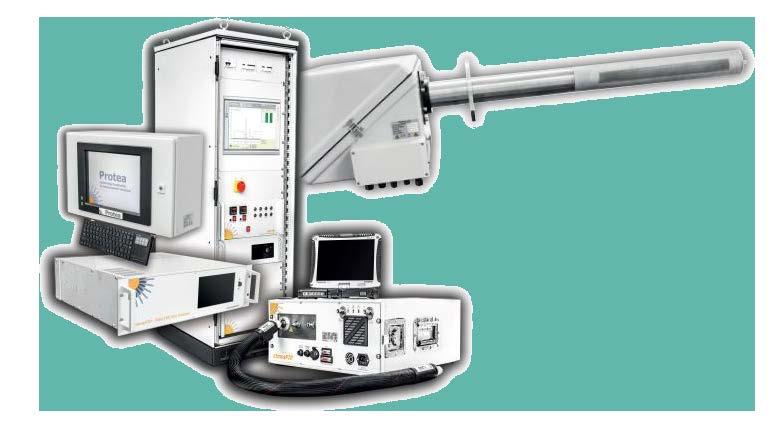
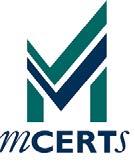

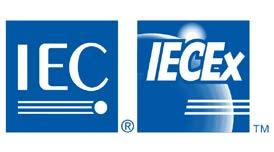

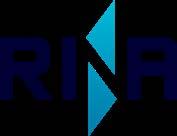
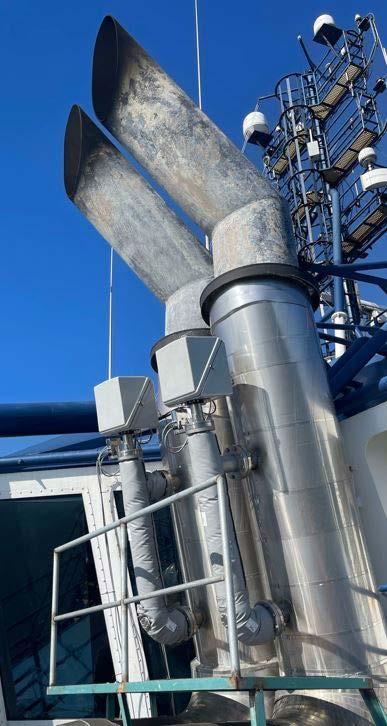
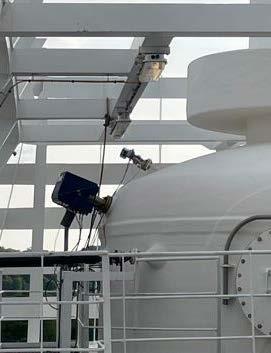
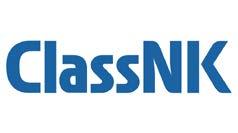
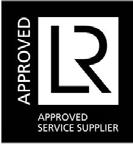
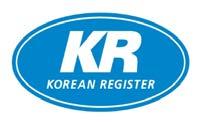
COMPANY PROFILE CLEAN SHIPPING INTERNATIONAL – Spring 2024 47
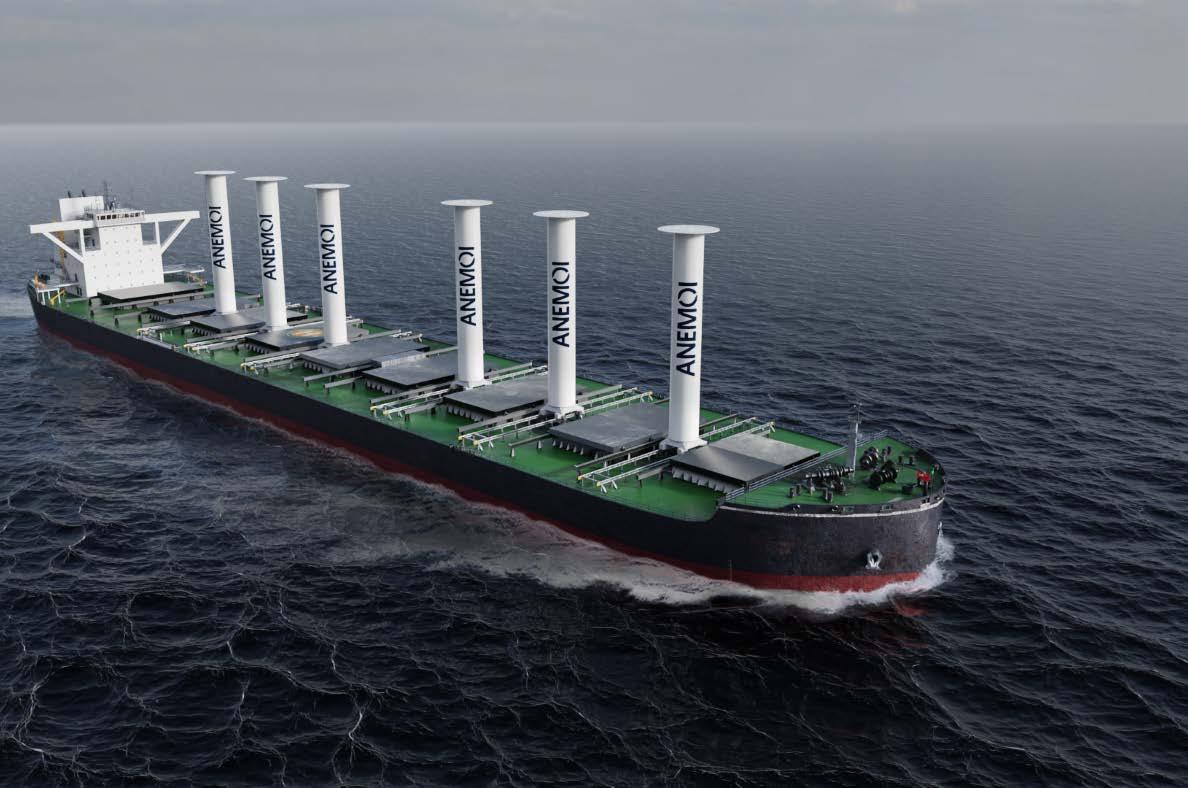
HIGHER POWERS
The Republic of the Marshall Islands (RMI) Maritime Administrator recently awarded an Approval in Principle (AiP) to Anemoi Marine Technologies (Anemoi) for its Rotor Sail systems following a review of two bespoke configurations of the windpropulsion technology.
Rotor sails, also known as ‘Flettner’ rotors, are vertical cylinders that harness the renewable power of the wind to provide additional forward thrust to the vessel and thereby improves its energy efficiency, along with a reduction in carbon emissions.
The RMI Maritime Administrator’s AiP was issued after undertaking a comprehensive review of a 210,000dwt Newcastlemax bulk carrier designed by Shanghai Merchant Ship Design and Research Institute (SDARI), thereby validating Anemoi’s four rotor sails (measuring 5m x 35 m) with a folding deployment system and six rotor sails (measuring 5m x 30m) with a bespoke rail deployment system.
The review also included a technical assessment of how the installation of rotor
A number of propulsion innovations have been introduced recently, with a view to improving efficiency as well as providing greener options
sails in both configurations will impact the vessel’s Energy Efficiency Design Index (EEDI) calculations, with an estimated improvement of 20% for the rail system and 17% for the folding deployment system for the vessel’s EEDI.
Anemoi rotor sails have been installed on board a number of RMI flagged vessels. Installation of Anemoi’s rail deployment system was completed in June 2023 on the 82,000dwt TR Lady Kamsarmax bulk carrier. The 400,000dwt Sohar Max very large ore carrier is scheduled for completion in mid2024 with Anemoi’s folding deployment system. The rotor sails on both of these vessels will provide additional forward thrust, improve their energy efficiency and reduce their total carbon footprint.
Shipowners are increasingly turning to rotor sails as an energy saving technology to ensure their vessels meet critical international emission reduction targets, including EEDI/Energy Efficiency Existing Ship Index (EEXI) and the Carbon Intensity Indicator (CII). The installation of three
PROPULSION CLEAN SHIPPING INTERNATIONAL – Spring 2024 48
Graphic showcasing six Anemoi rotor sails deployed on 210,000dwt Newcastlemax bulk carrier with a rail deployment system
Anemoi rotor sails on board TR Lady is expected to save more than 10% on fuel and emissions annually, while the inclusion of rotor aails onboard Sohar Max is expected to reduce CO2 equivalent emissions by up to 3,000 tonnes per year.
WINDFARM SUPPORT
K Line Wind Service, a joint venture of Kawasaki Kisen Kaisha, and Kawasaki Kinkai Kisen Kaisha, together with Japan Marine United Corporation and Nihon Shipyard, have been jointly granted Approval in Principle (AiP) from ClassNK for the design concept of the multi-functional floating offshore windfarm support vessel (MFSV).
The development of this design concept is subsidised by the New Energy and Industrial Technology Development Organisation (NEDO) as a part of Green Innovation Fund Project ‘Technology development project for basic manufacturing and installation cost reduction for floating wind turbines’.
The development of floating offshore wind is expected to play a key role in the achievement of carbon neutrality by 2050, especially in Japan where shallow waters are limited.
The installation of floating offshore wind turbines requires mooring works by vessels, with the whole mooring system composed of an anchor, a mooring chain, and a fibre rope. K Line Wind Service has been pursuing the study on the most effective mooring method and the most suitable vessel design for such mooring work together with Japan Marine United and Nihon Shipyard.
The MSFV envisaged is designed to perform mooring work efficiently for floating offshore wind turbine installation, including transporting the mooring system, deploying it on the seabed and anchoring it securely
ELECTRIC FERRY FIRST
Indian Register of Shipping (IRS) has announced the successful launch of Dheu, a new generation electric ferry at M/s Garden Reach Shipbuilders and Engineers (GRSE) Kolkata. Built to IRS class, the battery-powered electric ferry has an aluminium hull and a fibre-
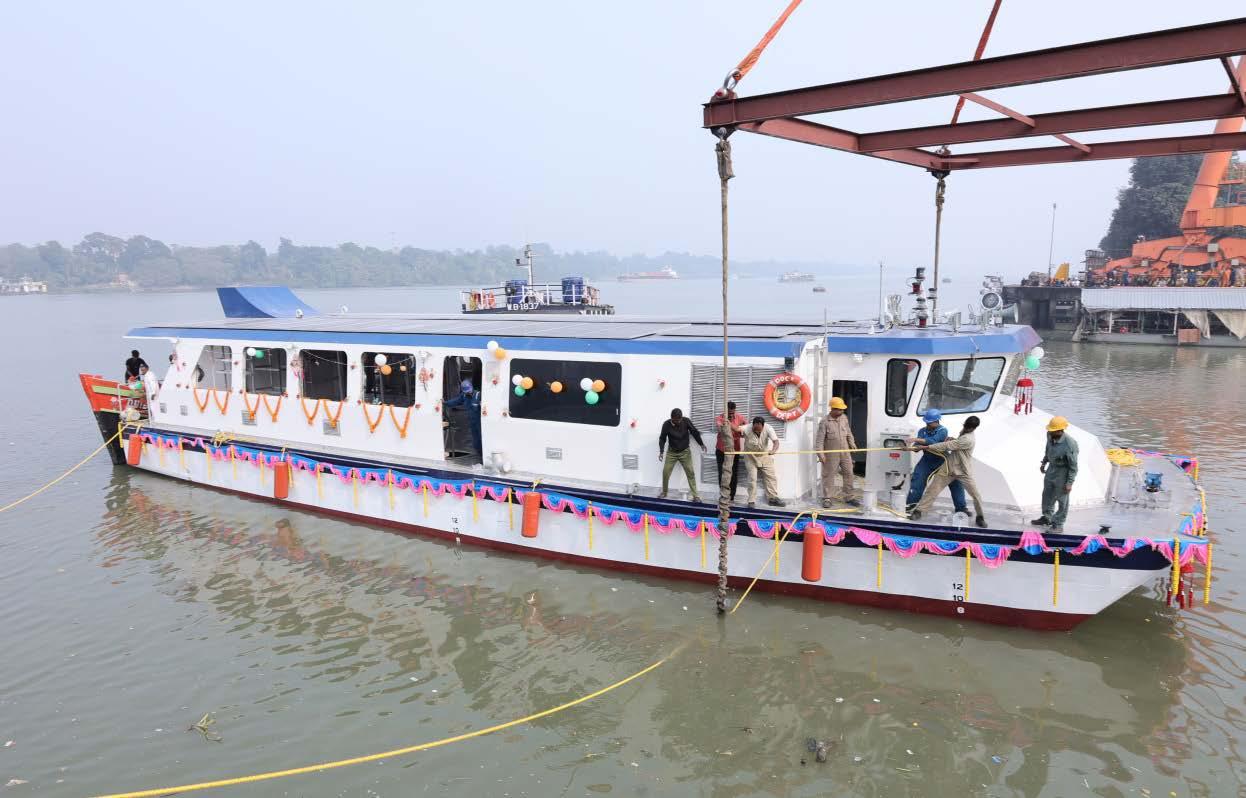
reinforced polymer superstructure. The vessel is a catamaran ferry with full electric propulsion and a potential complement of 150.
Designed to serve the government of West Bengal, Dheu is a 24m long twin-hulled vessel equipped with a 246kW capacity liquid-cooled battery system which can be charged from a shore-based source or through deckmounted solar panels that generate 18kW per hour.
In addition, the vessel incorporates an efficient energy management system, which maximises the use of solar power to achieve speeds of up to 10 knots through two 50kW electric propulsion motors.
Built to IRS Guidelines for battery powered vessels, Dheu marks the advent of green energy in maritime transportation, eliminating carbon emissions associated with diesel engines. For added safety, the ship is equipped with a 50kW emergency DG set, ensuring lighting and power during emergencies.
Vijay Arora, managing director, IRS, says: “Dheu meets the requirements of our guidelines which we will continue to update as we gain more experience. This vessel not only marks a technological milestone in electric ferry technology, but also signifies the collaborative efforts of IRS and GRSE, ushering in a new era of sustainable and environmentally conscious maritime solutions.”
HOLY BOSS TECHNOLOGY
EcoMarine Innovation’s Holy Boss Cap technology demonstrated a 2.1% improvement in efficiency following its latest cavitation tunnel test campaign, the organisation says. This marks a significant stride towards EcoMarine’s commitment to enhancing marine propulsion systems, not only in performance but also in environmental impact.
“Our journey within this highly reputed test facility, known for its state-of-the-art facilities, allowed us to put our design through rigorous testing, ensuring reliable, real-world performance data. The improvement signifies not just fuel savings, but also a step forward in reducing the maritime industry’s carbon footprint,” the organisation says.
“As we navigate through the waves of innovation, we remain focused on delivering solutions that align with global sustainability goals. While 2.1% is a lower value then those predicted by CFD simulations, there exists a potential impact of scale effect for the results acquired during the model scale tests.
“In order to address this, we are planning a second cavitation tunnel test campaign in March 2024 with enlarged Holy Boss cap holes to enable sufficient flow through even at scaled model size.
“It’s a testament to our team’s dedication and the collaborative
PROPULSION CLEAN SHIPPING INTERNATIONAL – Spring 2024 49
The 24-metre long twin-hulled New Generation Electric Ferry, Dheu
spirit of the industry in pursuit of a greener tomorrow.”
Initial computational fluid dynamic (CFD) tests based a typical twin-screw vessel with V-brackets and a 90m coastal general cargo ship showed that EcoMarine Innovations’ Holy Boss Cap (HBC) – named to indicate the holes bored into the conically shaped hub – increases propulsion efficiency by up to 5%, compared to conventional propeller boss caps.
Tests also assessed the patentpending HBC against more advanced energy efficient boss caps currently in operation, and found they are at least 3% more efficient.
“Overall, compared to the propeller boss caps currently available, HBC improved propeller efficiency by 3.1% and thrust by 1.1%, while reducing torque by 2%, rudder cavitation by 10%, and propeller induced noise by 1-3dB,” explains Dr Batuhan Aktas, CEO of EcoMarine Innovations, a ship research and development group at the University of Strathclyde, Glasgow.
“The Holy Boss Cap eliminates completely propeller hub vortex cavitation, the main source of rudder erosion, and reduces associated propeller efficiency losses, which can be as much as 8%.
“Considering the investment levels required for other energy saving devices currently in the market and the potential fuel savings, Holy Boss Cap is a game changer with and ROI of less than six months,” he says.
Essentially, the holes channelled into the Holy Boss Cap affect the high pressure in the hub vortex by redirecting the flow downstream. The resulting low-pressure swirl flows in the opposite direction to conventional hubs, behind the propeller blades, reducing propulsive drag, fuel consumption and maintenance costs.
“With shipowners grappling with new environmental legislation and emissions reporting rules, zero propeller hub vortex cavitation can help towards environmental, social and governance, Energy Efficiency Existing Index and Carbon Intensity Indicator goals, improve efficiency and reduce the costs associated with cavitation induced rudder erosion,” adds
EcoMarine Innovations’ chief technical officer Ahmet Gurkan.
What’s more, the Holy Boss Cap is reportedly less expensive than those propeller hub cap fins, that incorporate small blades or fins to hydrodynamically deflect the water flow, as Holy Boss Cap is easier to cast and requires less material.
“What we have designed is a propeller boss cap that is 5% more efficient and costs 50% less to manufacture than current conventional propeller hubs. Considering the minimal investment required, this is a significant level of saving,” Gurkan says.
“We are delighted that CFD trials have validated the concept and will now to take the development to the next stage and start secondary model tests in March. We will scale up hole areas by 60% and expect to achieve improved performance by eliminating any negative scale up effects. We are also in advanced discussions with several shipowners that have expressed interest in installing HBC on its vessels as early adopters.”
CONTAINER POWER
Bureau Veritas recently granted an Approval in Principle to Greek company ERMA FIRST for its Blue Connect system, a high voltage alternative maritime power solution that can be housed in a 12m container.
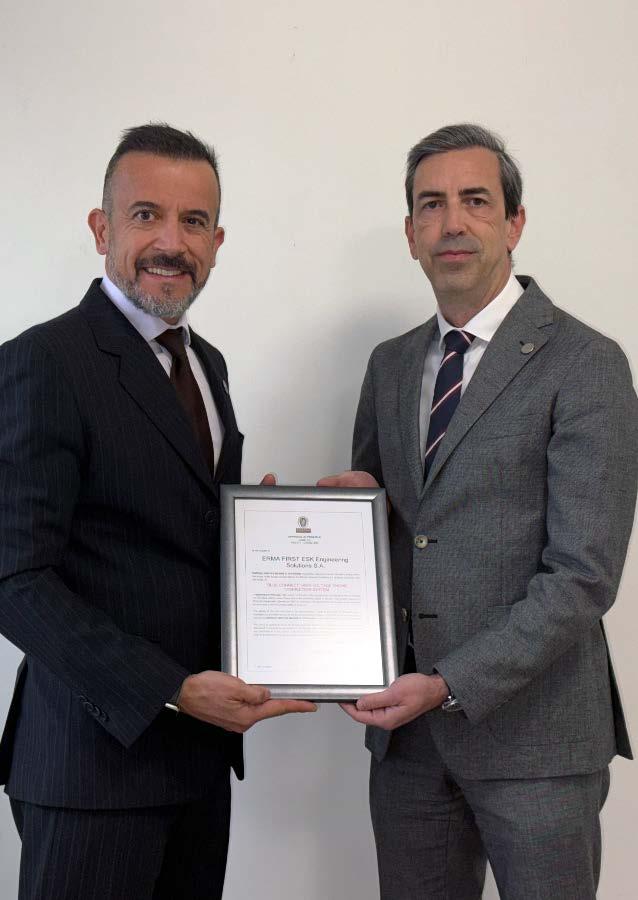
ERMA FIRST’s system, which can be housed in a container or provided in a stand-alone configuration, enables most ships to connect with different shore power systems based on their required power. Blue Connect can be plugged into a port’s infrastructure (external connection) and to a vessel’s electrical grid (internal connection).
Connection to shore power will be a requirement for containerships and cruise ships in European ports from 2030 and may be demanded by other customers looking to eliminate or reduce emissions while in port.
The Blue Connect system has been designed for a specific maximum load capacity according to individual vessel specifications and to meet specific port requirements. This provides maximum flexibility for access to shore power while at berth. High voltage shore connection (HVSC) equipment can either be standalone or included in the 12m container.
Bureau Veritas has confirmed that the Blue Connect HVSC system meets its requirements for safety, including structural integrity of the containerised ‘box’ containing the connection system, allowing the unit to be stored on a ship’s deck and deployed when required.
Athens-based Paillette Palaiologou, vice president, marine and offshore for Bureau Veritas, says: “It’s always a pleasure to be able to support innovation – and for us, based here, to support innovation in Greece. Our approval helps enable the rapid application of the Blue Connect solution by providing the confidence that our classification requirements for safety and performance will be met.”
Konstantinos Stampedakis, cofounder and managing director of ERMA FIRST, said: “We are delighted to receive this Approval in Principle from Bureau Veritas, which confirms that Blue Connect’s safety and operational profile meets the in-principle expectations of the classification society. Developing solutions that not only protect the environment, but also have a positive impact on our customers’ operations has always been a priority for ERMA FIRST.”
Theodosia Digalaki, technical
PROPULSION CLEAN SHIPPING INTERNATIONAL – Spring 2024 50
Left to right, Konstantinos Stampedakis (ERMA) and Vassilios Dimoulas (BV)
product manager at ERMA FIRST, says: “Blue Connect is a highly advanced shore power solution than can significantly reduce emissions in ports and enhance CII ratings for ships. Throughout the development process, flexibility, reliability and safety were key priorities and we are pleased that the exhaustive approach taken by ERMA FIRST has been recognised by Bureau Veritas through the award of this AiP.”
ESAIL HEADS SOUTH
Bound4blue has been selected to install a 22m-high eSAIL onboard the newbuild mixed cargo vessel Na Pae E Hiro, helping shipowner SNA Tuha’a Pae (SNA) reduce energy consumption by 10%.
Launching in 2026, the ship will mix green technology with an ambition to accelerate development of the remote Austral Islands, carrying both vital supplies and up to 200 tourists on its voyages from Tahiti to the South Pacific archipelago.
The contract marks the first time bound4blue’s solution has been selected for a newbuild vessel of this type. The eSAIL, designed for both retrofits and newbuilds, is a ‘suction sail’. It works by harnessing wind power to propel vessels, employing an autonomous vertical sail with suction technology, dragging air over a think aerodynamic profile.
This process generates seven times more lift than a conventional airplane wing, resulting in exceptional propulsive efficiency, greatly reducing the load on main engines – saving fuel and cutting emissions.
At the end of 2023, bound4blue announced commercial agreements with LDC for the installation of four 26m-high eSAILs on the Louis Dreyfus Company chartered vessel MV Atlantic Orchard and three 22m-high units on the Ville de Bordeaux, used by Airbus to transport aircraft subassemblies. These new contracts showcase the system’s flexibility, delivering energy efficiency and cost savings for a broad range of vessels, regardless of their size and age.
The 89m-long newbuild is now set for construction at Armon Shipyard in Vigo, Spain, with naval architecture
delivered by Cotenaval (Spain) and consultancy by ECO (France). Financial support has been awarded through the French Government’s Appel à Manifestation d’intérêt initiative, with the project meeting criteria of local fleet renewal, opening the Australes, delivering cruise business, supporting local employment, and sustainability goals.
The design process of this ship, carried out by Cotenaval, has been centered around presenting it with state-of-the-art systems and an optimised design aimed at reducing overall energy consumption, emissions, and maintenance costs. Additionally, flexibility and quick loading/unloading operations have been key focal points for Cotenaval’s design. The comfort and modern appearance of the accommodation areas, providing ample space for leisure, and maintaining natural light within the ship’s areas, have always been crucial aspects of this design.
In addition to the lightweight, easy to maintain eSAIL, Na Pae E Hiro will be fitted with engines capable of running on biofuel or e-fuel, as soon as it becomes commercially available in the region. It also offers efficiency in terms of waste treatment, electric
pod propulsion and autonomy in fresh water supply. Cargo capacity is 1,500 tonnes, almost four times more than its predecessor, the Tuhaa Pae IV, translating to much reduced energy consumption and emissions per cargo tonne.
OLDENDORFF APPROACH
Oldendorff and Norsepower have announced an agreement to use Norsepower rotor sails to further reduce CO2 emissions on a modern bulk carrier.
The vessel Dietrich Oldendorff (IMO 9860350) is to be outfitted with three 24m x 4m Norsepower rotor eails by mid-2024. It is contracted to be employed on a North Pacific trade route to Asia.
The Norsepower rotor wail is a moderniwed, digital-era version of the Flettner rotor. It uses a minimal amount of the ship’s electric power to actively rotate the cylinder-shaped rotors on the ship’s deck.
Rotation, together with wind, packs the air behind the sail and creates powerful thrust – saving fuel and reducing emissions. The huge, spinning rotors are partly manufactured from approximately 342,000 plastic bottles.
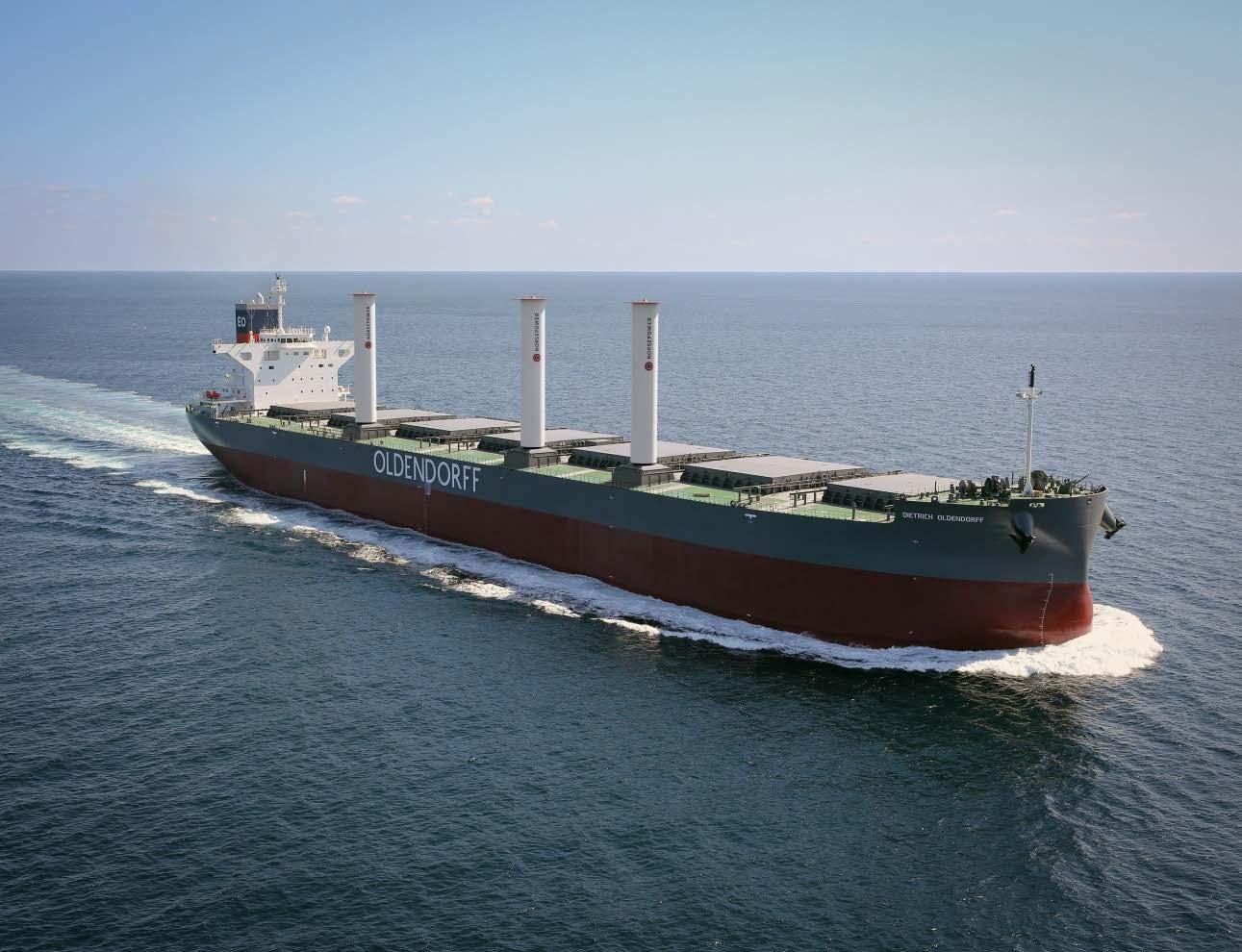
PROPULSION CLEAN SHIPPING INTERNATIONAL – Spring 2024 51
Dietrich Oldendorff (IMO 9860350) is to be outfitted with three 24m x 4m Norsepower rotor sails
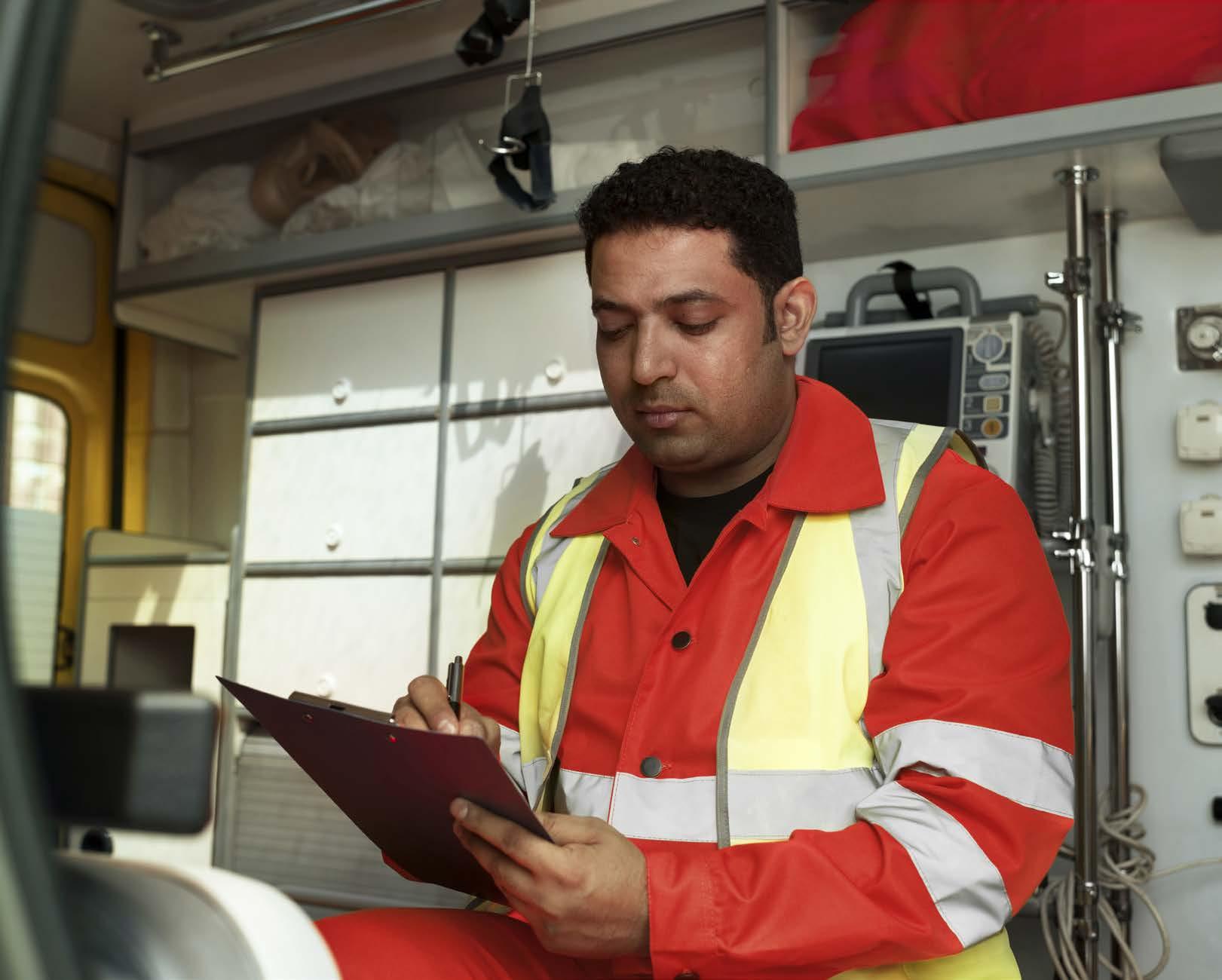
Crew safety and wellbeing has been a major concern for the industry in recent times, with developments in the Red Sea and other flash points increasing crew fears over piracy and war risks
PUTTING CREW SAFETY FIRST
Seafarer happiness has been affected by many geopolitical issues in recent times, as the Mission to Seafarers’ most recent Happiness Index shows.
The results of the latest Seafarers Happiness Index showed a further drop in seafarer happiness for the fourth quarter of 2023, raising serious concerns over conditions for all those working at sea.
The Seafarers Happiness Index is a quarterly survey commissioned by The Mission to Seafarers and made possible through the sponsorship of NorthStandard and Idwal, as well as the support of Inmarsat. The survey measures the wellbeing of seafarers through ten key questions about their work and life, designed to gauge sentiment about their experiences on board.
This is fourth successive quarter to show a decline in seafarer happiness. The Q4 2023 survey results show a wide range of reasons for this worrying trend, but common causes for concern expressed by seafarers taking part in the survey include feeling overburdened, underappreciated
and disconnected, as well as concerns over a lack of shore leave and an inability to contact family.
The Q4 report shows an overall fall in seafarer happiness to 6.36 out of 10. This compares to 6.6 in Q3, 6.77 in Q2 and 7.1 in Q1 2023, and represents a considerable decline over the course of the year.
This fall in happiness is driven by a decrease in sentiment across most areas of life on board covered by the survey, with onboard connectivity being the only notable aspect that showed improvement. However, frustration was expressed by some respondents over what seems to be unfair inconsistency in vessel connectivity, with some vessels in the same fleet having better internet access than others.
Respondents to the Q4 2023 Seafarers Happiness Index also expressed concern over a lack of social interaction and a growing sense of isolation. While seafarers recognise the benefits of spending quality time with their colleagues, much more needs to be done to create focal points that provide
SAFETY CLEAN SHIPPING INTERNATIONAL – Spring 2024 52
time and space together, which in turn helps to build a sense of togetherness and a team ethos onboard. Seafarers also reiterated their concerns about stagnating wages, which are failing to keep up with inflation, and a lack of training opportunities.
The growing security threats to the lives of seafarers are also reflected in the results of the Q4 survey. It is clear that the escalating risks to seafarer safety from piracy, terrorism and war risks are having an impact on crew welfare. It is also adding to the workload burden on seafarers, due to the ramping up of security duties in higher risk waters.
The survey also highlighted the importance of warlike operations area payments. However, there is likely to be a lag between the responses and the official designation of these areas. As such, the Q1 2024 survey should reveal the true impact of these changes.
Looking back at 2023, it is clear
Seafarers often feel the world’s crises first and hardest, as we have seen in recent years
that the emergence from covid-19 was not accompanied by a return to pre-pandemic conditions for seafarers, despite an initial recovery in seafarer happiness in 2022. Extended contracts, diminished employment terms, downward pressure on wages and growing workload demands have undermined welfare and working conditions. In turn, seafarers continue
to call for action on shore leave, connectivity, training, diversity, recreation, and mental health support, in order to see their working lives transformed into more sustainable, equitable, and fulfilling careers.
Commenting on the Q4 survey results and looking back on 2023, The Revd Canon Andrew Wright, secretary general of The Mission to Seafarers, says: “Following the uptick in seafarer happiness in late 2022 after the lifting of COVID restrictions, it is very disappointing to see the downward trend in happiness over the course of 2023.
“If there was ever any complacency about the circumstances facing seafarers around the globe, these results surely dispel that. We know that some ship owners and managers are doing fantastic work to invest in the wellbeing of their crew, but sadly the overall picture remains concerning.
“From perennial concerns over an unsustainable workload, insufficient shore leave, limited rest hours, financial concerns and the burden of separation from family, we now see rising concerns over the security risks facing seafarers, whether in the Red Sea or in high-risk piracy waters. Seafarers often feel the world’s crises first and hardest, as we have seen in recent years. While it is not within the power of industry to change such events, we are reminded of the vulnerability of seafarers and of the imperatives of prioritising their wellbeing in all circumstances.
“It is my hope that we will see the index moving upward in 2024. Let’s make it a year of further action, with meaningful steps taken to ensure that every single seafarer feels safe, happy and respected. The future prosperity of the shipping industry depends on it.”
The Mission to Seafarers is working with partners from across the shipping industry to tackle the issues that continue to affect the wellbeing of seafarers, as well as providing direct support for seafarers through its global network of seafarers’ centres and ship visits, chaplains, staff and volunteers, and its digital solutions, such as its ‘Happy at Sea’ app for seafarers.
TOOLKIT FOR WELLBEING
The Seafarer Hospital Society’s (SHS) maritime KPI toolkit was unveiled at its recent conference, which focused on changing regulations, training and upskilling, recruitment and retention, DEI and ESG, and health and welfare for maritime workers.
The SHS addressed maritime’s goals of embedding greater resilience, collaboration and sustainability across the supply chain by bringing together industry leaders, experienced healthcare providers, HR and crew management specialists, and young cadets at the in-person conference.
Titled ‘Sustainability at Sea: Why Seafarers’ Health Matters,’ the February event saw the launch of SHS’ key performance indicator (KPI) toolkit to help organisations track regulatory compliance and year-on-year impact on seafarer health and welfare.
Sandra Welch, CEO of the Seafarers Hospital Society, says: “The maritime industry is increasingly turning to benchmarking and data-led solutions to demonstrate value and progress to a wide variety of stakeholders — and crew capacity and resilience underpins these endeavours and our wider global supply chains. Benchmarking the health and welfare of maritime workers will ensure that our industry is tracking its successes, proving value and identifying gaps so that these can be addressed.
“In addition to benefiting organisations and workers, collecting this data will increase transparency, clearer communication and greater collaboration between stakeholders.”
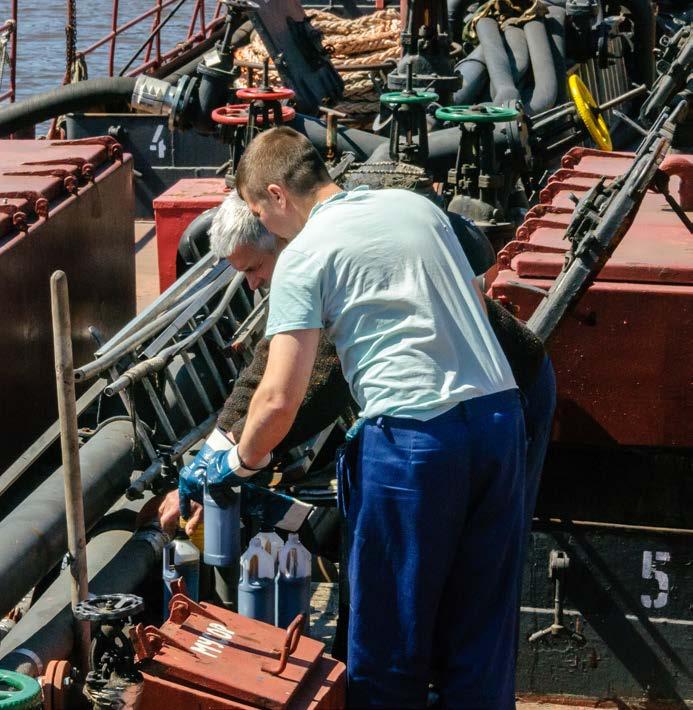
SAFETY CLEAN SHIPPING INTERNATIONAL – Spring 2024 53
HEIGHT WARNINGS
Falling from height is a leading cause of workplace fatalities and injuries. International freight transport and cargo handling insurance specialist TT Club is warning of this danger in the transport, port and logistics industries, environments in which, unfortunately elevated working locations are often unavoidable.
Continuing with its series of TT Briefs aimed at simplifying complex risk issues by providing easily digestible information and guidance, TT has published its latest Brief, Understand and mitigate the risks of working at height. In such working environments that are common throughout the supply chain, prioritising safety is of the utmost importance to prevent accidents and injuries. In this Brief TT looks at the steps that should be taken to reduce such risk, ensure the safety of your workforce when working at height, avoid exposure to injury claims and safety prosecutions, and reputational damage.
The series was Introduced three years ago by the specialist liability insurer; a TT Brief is a two-sided infographic-style advice sheet, each aimed at a specific risk. It is designed to offer guidance on general good practice to avoid loss. It also has the potential to act as a poster to be utilised in the workplace so as, always in plain sight, it is a constant reminder to both employees and management.
TT’s managing drector, loss prevention Mike Yarwood pinpoints the relevance of the latest Brief: “Globally, there is no consistent regulation that outlines at which height a worker is considered to be at risk of serious injury should they fall. Therefore, simply complying with regulated safety provisions may not be enough to protect a workforce from potentially fatal accidents. Our advice therefore is a considered guideline on the minimum measures that employers, be they warehouse, port or terminal operators, road hauliers or other carriers, should put in place.”
Recognising the range of operational conditions across the transport and logistics industry, the advice raises a
number of points to consider relating to infrastructure design and improved working practices.
Safe stowage of cargo at various points in the supply chain is also discussed, as is the use of technology such as drones to carry out inspections or stocktaking, and deployment of fall prevention platforms. Not least, training programmes and the encouragement of a strong safety culture should be in place throughout any operation.
Yarwood concludes: “When promoting best practices in working environments that have similar physical characteristics but are spread throughout the world, we believe effective communication is paramount. TT is always concerned with delivering relevant insight, based on the experiences of its insured, to best assist operators in avoiding situations of maximum risk. Understand and mitigate the risks of working at height represents that commitment to safety that TT has at its core.”
PIRACY PROTECTION
West P&I Club recently launched West Piracy Protection to help owners manage the evolving threat of piracy in high-risk waters.
The new product provides cover for vessels entering a War & Piracy ‘breach’ area, such as the Gulf of Aden or the Gulf of Guinea, where there is a heightened risk of vessels being seized.
This innovative offering is tailored to provide insurance protection for piracy events where the traditional War policy coverage does not respond adequately
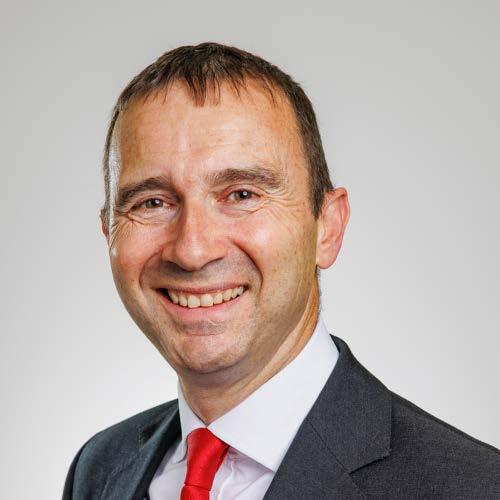
to indemnify clients for the typical seizure situations that can take place in these geographic areas. This includes incidents when ships are sometimes held for just a few hours at a time.
Indemnities are provided for ransoms, including loss of transit of a ransom, and the costs of response consultants and legal experts, including reputational risk expenses. Expert support is provided for employees directly impacted by the seizure.
Additional coverage is available for Loss of Hire related to a seizure, and for a maximum period of 14 days after release of the vessel.
This product has been developed in partnership with the Hamilton Global Specialty (Hamilton) underwriting platform written by Syndicate 4000 at Lloyd’s. Embedded emergency expertise is provided by Crisis24, one of the industry’s largest exclusively retained crisis response teams, and global law firm HFW, a market leader in the specialist field of piracy response.
Richard Turner, head of product development at West, says: “West Piracy Protection responds to the realities of the evolving piracy threat faced by owners in such locations as the Gulf of Aden and the Gulf of Guinea. We have seen a pattern of incidents where a vessel is hijacked for just a few hours, meaning that current market wording on Loss of Hire may not be triggered, or ceases as soon as the vessel is released, with little regard for the knock-on consequences, which may include crew changes or vessel repairs.
“Our new product will stand out
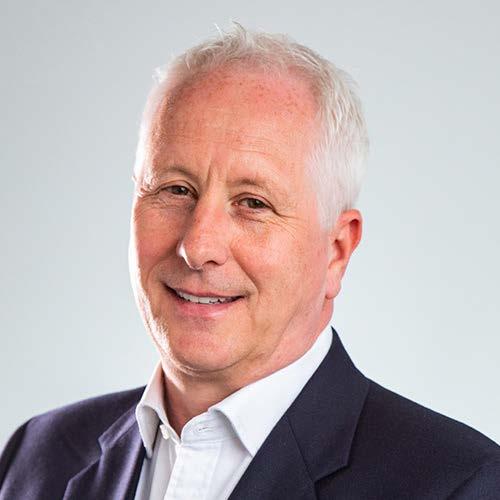
SAFETY CLEAN SHIPPING INTERNATIONAL – Spring 2024 54
Richard Turner, head of product development, West P&I Club
Mark Matthews, deputy head of underwriting (London), West P&I Club
from the market, not just for the extended coverage but also the embedded expertise we can offer with Crisis24 and HFW. Through this new offering, we look forward to providing West Members and other shipowners with the support to manage the everpresent threat of piracy.”
Mark Mathews, deputy head of underwriting (London) adds: “We are excited to launch West Piracy Protection. We have worked closely with Hamilton to develop an innovative product that addresses a number of identified needs in the market where existing cover falls short. This new product enables West to offer a tailored piracy protection solution alongside our existing West War policy (launched in March 2023).”
Shipowners and operators can purchase West Piracy Protection as an extension to the West War policy, or as a product on a standalone basis. It is also available to non-West clients.
West Piracy Protection joins other specialist products offered by West, including West Hull (H&M) and West War, both launched by West in 2023. West also provides other diversified products, delivered with expert partners such as Nordic Marine Insurance, Qwest and Astaara, ensuring Club Members are fully supported at every stage of their voyage.
SECURITY GUIDE
The Nautical Institute is pleased to announce that its new compendium of essential maritime security advice, guidance and insights, Maritime Security – A Practical Guide for Mariners, is now available. It covers a wide range of topics, from a detailed examination of the ISPS Code and its implications to practical advice on key topics, such as cybersecurity, crime at sea and dealing with stowaways and migrants.
The book, which updates and expands the content of three existing texts, is aimed at Masters, CSOs, SSOs and anyone else who is involved with maritime security at any level. Topics covered include threats to seafarers, ships and maritime trade; evolution of maritime security; basic shipboard security procedures; elements
and implications of the ISPS Code; cybersecurity; piracy; stowaways, migrants and rescue at sea, and crimes and criminality at sea.
Author and global security expert Steven Jones says: “The book tackles many of the issues that we have previously focused on within maritime security, such as coping with piracy, stowaways at sea and migrants. It also covers other challenges faced by officers, such as cybersecurity and criminality at sea, in ports and across the entire supply chain. This has made it a real focal point; a book that can be relied upon to illuminate some of those darker issues within the industry.” Visit nautinst.org for more information
ADDRESSING CHALLENGES
Issues such as illegal recruitment fees are negatively impacting the lives and wellbeing of seafarers and jeopardising the profession’s future, according to the latest annual progress report on seafarers’ rights.
The Delivering on Seafarers’ Rights Annual Progress Report, published by the Institute for Human Rights and Business (IHRB) and the Sustainable Shipping Initiative (SSI), is a comprehensive review of the challenges facing seafarers, the shipping industry’s efforts to address challenges, and recommendations for 2024.
The report covers topics including attracting people to a seafaring career, illegal recruitment fees and corporate action on improving seafarer welfare,
as well as an update on data from the RightShip Crew Welfare SelfAssessment Tool.
These issues significantly impact the lives and wellbeing of seafarers worldwide, making it even harder to attract the talent the industry needs to pursue careers at sea. The impact of welfare on recruitment and retention is a huge concern for shipping’s wider viability and sustainability. The prevalence of illegal recruitment fees poses a severe threat, exploiting seafarers, their families and communities, and undermining their rights.
The report shares insights from various organisations and stakeholder groups on the issues facing seafarers, as outlined in the Delivering on Seafarers’ Rights Code of Conduct, and brings together contributions from the International Seafarers Welfare and Assistance Network (ISWAN), Nautilus International, Oldendorff Carriers, Rio Tinto, RightShip, and Turtle.
For all the negatives, there has been progress. Leading shipping companies and charterers are working on a range of initiatives to enhance seafarer welfare, to improve standards and diversity on their ships and within their supply chains. Such efforts play a pivotal role in fostering a supportive and conducive environment for those working at sea, acknowledging their fundamental rights and basic needs.
Furthermore, a recorded increase in companies using the RightShip Crew Welfare Self-Assessment Tool
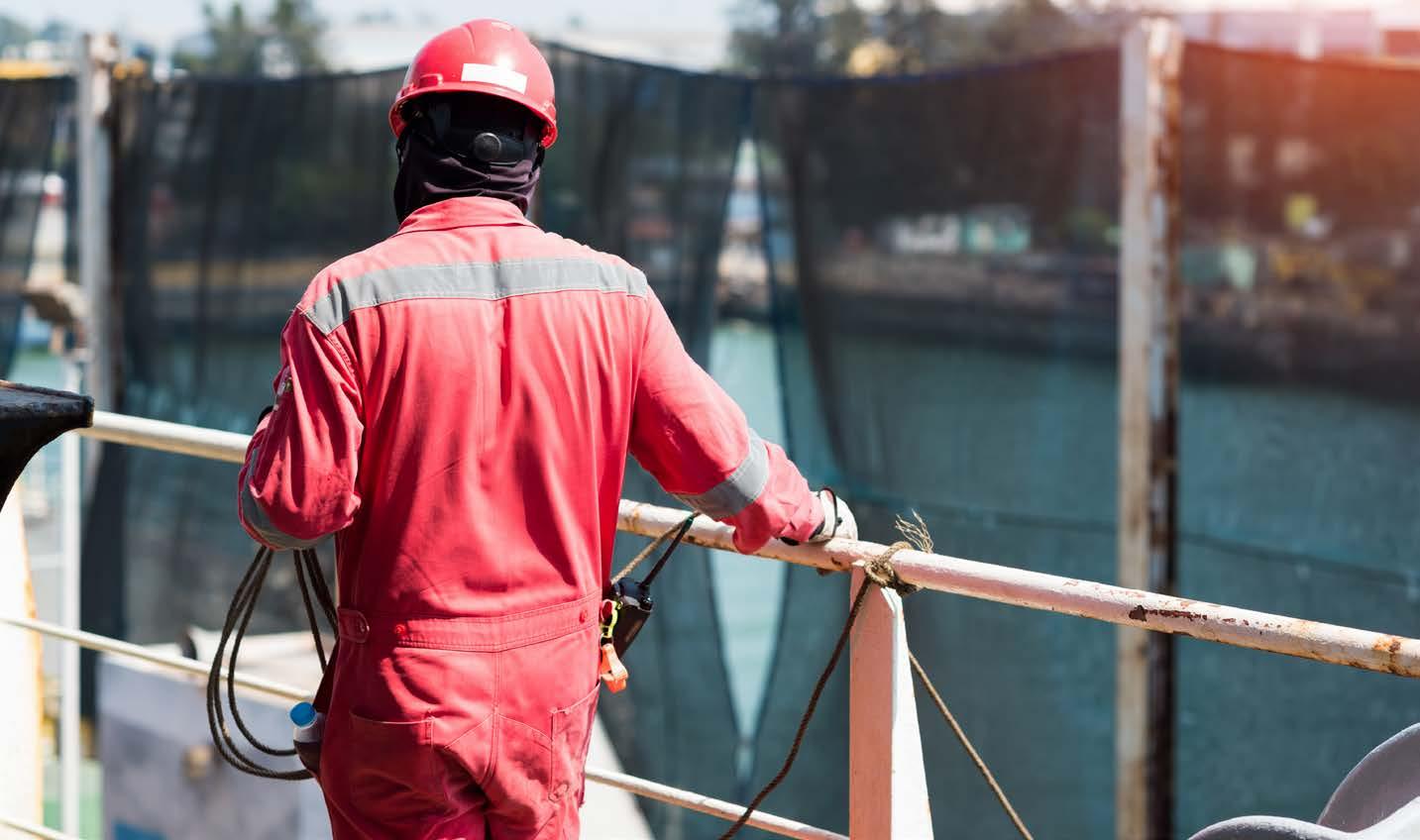
SAFETY CLEAN SHIPPING INTERNATIONAL – Spring 2024 55
signals a commitment to monitoring and improving industry standards, emphasising the importance of continuously evaluating and advancing the conditions and treatment of seafarers aboard vessels.
Steven Jones, CEO of the Sustainable Shipping Initiative, says: “This second Delivering on Seafarers’ Rights Annual Progress Report is vital reading for all in the industry. There is progress we can learn from, such as the ideas, innovation, and energy
FENDER TEST
of companies who are investing and making sure their people and social needs are to the fore. However, it is clear that there is so much more to be done. We need to take these lessons and ensure they are not simply the domain of the good companies, we need to make sure there is no place for the bad to operate.”
Frances House, special advisor at IHRB, says: “We know the Maritime Labour Convention isn’t enough to prevent seafarers’ rights being
Trelleborg Marine and Infrastructure has added a state-of-the-art marine fender test facility to its Qingdao manufacturing site in China, specifically built and equipped to verify and test fenders in line with the forthcoming PIANC WG 211 guidelines.
Richard Hepworth, business unit president of Trelleborg Marine and Infrastructure, says: “Until the development of the new guidelines, the marine industry lacked unified standards for marine fender manufacturing, design, testing, and certification. As fender systems play a critical role in port operations, the absence of standards for their manufacturing and design could potentially have far-reaching implications.
“Port operators not only face operational risks but also sustainability concerns when the replacement of fenders is more frequent than expected. Instead of lasting for 20 years or more, poor quality leads to replacement two or three times within that period. To address this issue, we have been collaborating with PIANC for the last ten years to reassess design guidelines for fender systems. It is a shared responsibility to ensure the safety and longevity of ports.”
Due to be published soon, the PIANC WG 211 guidelines represent best practices that aim to enhance safety and efficiency in port operations by providing
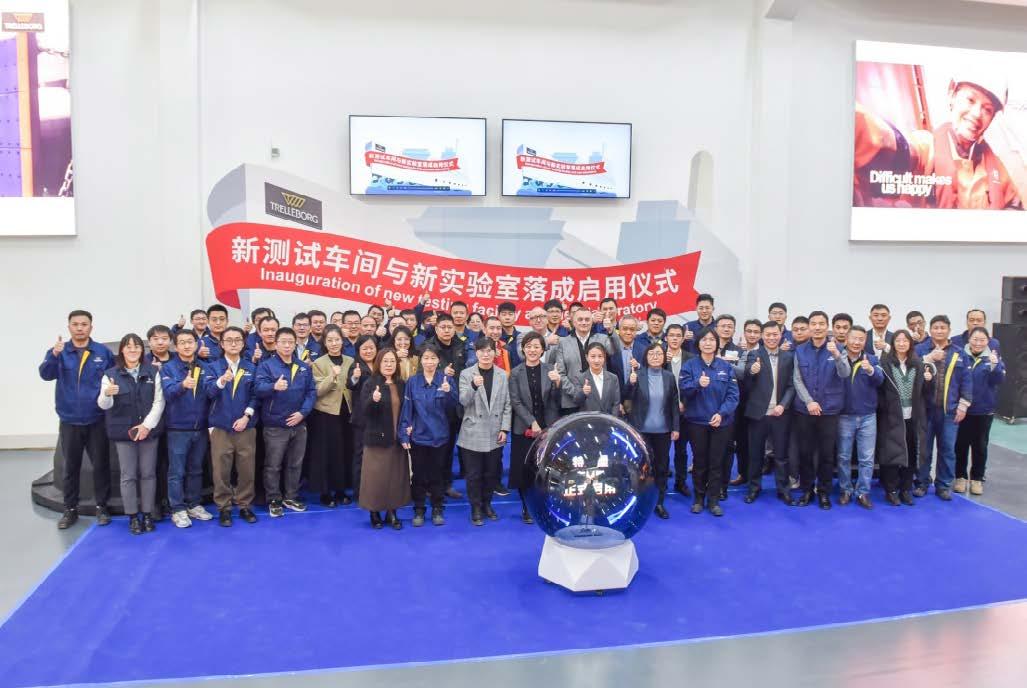
undermined. Charterers and container cargo owners should encourage their shipping suppliers to comply with the Seafarers’ Rights Code of Conduct and use the self-assessment tool to improve their performance.
“This report is a positive sign that uptake of the Code of Conduct is increasing, but verification and transparency around compliance are the critical goals now.
The report can be downloaded at tinyurl.com/CSI-SeafarerReport
comprehensive recommendations for fender design, manufacturing, and testing. They have been drawn up by industry leaders including Trelleborg and the update will include stringent requirements for designing fenders with a specific focus on fender testing.
The newly established fender testing facility in Qingdao, which is now in operation, comprises stateof-the-art test presses, enabling Trelleborg to cover all comprehensive and specialised test requirements for marine fenders of varying sizes, evaluating their performance under various load conditions, and simulating real-world scenarios including shear, fatigue, high speed, and shear-compression. In alignment with the upcoming PIANC WG211 guidelines, the entire area, testing, and conditioning will be climate-controlled.
Hepworth concludes: “With the opening of this new testing facility, our overarching aim is to set a new benchmark when it comes to fender quality in the industry, and work together with our customers to design solutions that meet their challenges for today and tomorrow.”
The expansion of Trelleborg’s manufacturing site in Qingdao, China, highlights the region’s importance as a key market for Trelleborg’s marine and infrastructure products.
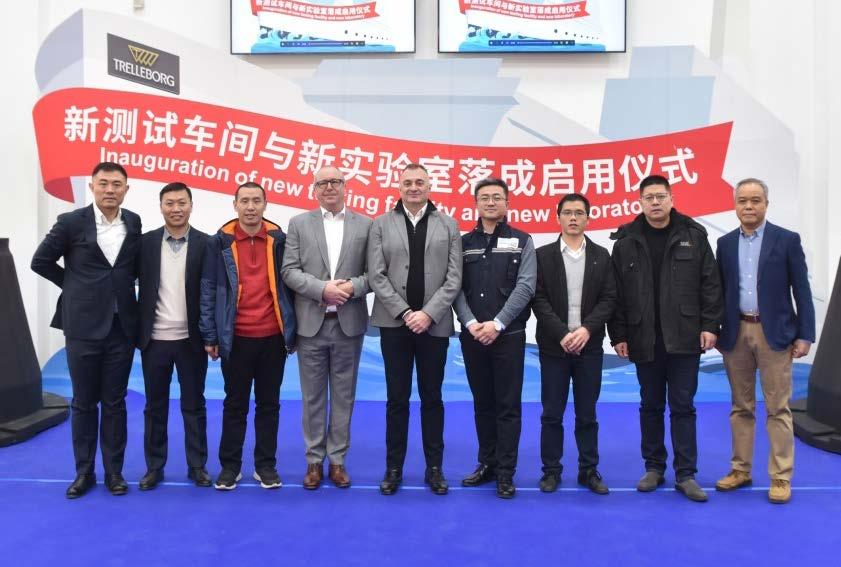
SAFETY CLEAN SHIPPING INTERNATIONAL – Spring 2024 56
WELLBEING GUIDANCE
The International Maritime Rescue Federation (IMRF) launched its #SARyouOK? Guidance and Best Practice Framework on 14 February 2024. The initiative is supported by the Trinity House DFT Maritime Safety Fund and aims to promote awareness of mental health and wellbeing issues and break down the attached stigma for those working in the maritime search and rescue (SAR) sector.
This initiative provides comprehensive guidance on mental health and wellbeing for maritime SAR services. The aim is to recognise the unique psychological challenges that SAR personnel face while dealing with high-stress and traumatic situations in their line of duty.
The core of the guidance is structured around the ‘Prepare, Normalise, Support’ approach, which provides a structured pathway to managing stress and trauma among SAR personnel.
The guidance stresses the importance of an organisation’s commitment to promoting mental health and wellbeing. This entails assessing the organisational culture, ensuring favourable working conditions, and having well-defined policies and procedures in place. Allocating budgets for mental health support and nurturing a culture of
The guidance stresses the importance of an organisation’s commitment to promoting mental health and wellbeing
transparency are also identified as crucial steps.
The guide addresses an important issue – the management of secondary trauma. It refers to the emotional and psychological distress that SAR personnel can experience when they are exposed to the traumatic experiences of others. The guide recognises that SAR personnel can be vulnerable to both primary and secondary trauma and provides strategies to mitigate these effects.
It further aims to provide a comprehensive approach towards understanding and addressing mental health and wellbeing within the SAR work environment. It ensures that individuals can access the necessary support to overcome the challenges they face during their operations. By incorporating these practices into their daily operations, SAR organisations can enhance the effectiveness of their operations and ensure the long-term health and well-being of their personnel.
#SARyouOK? has received support from SAR organisations worldwide, organisations have shared case studies that showcase different models and best practices in use across various contexts. These real-life examples provide practical insights into how SAR organisations can effectively support their staff and volunteers.
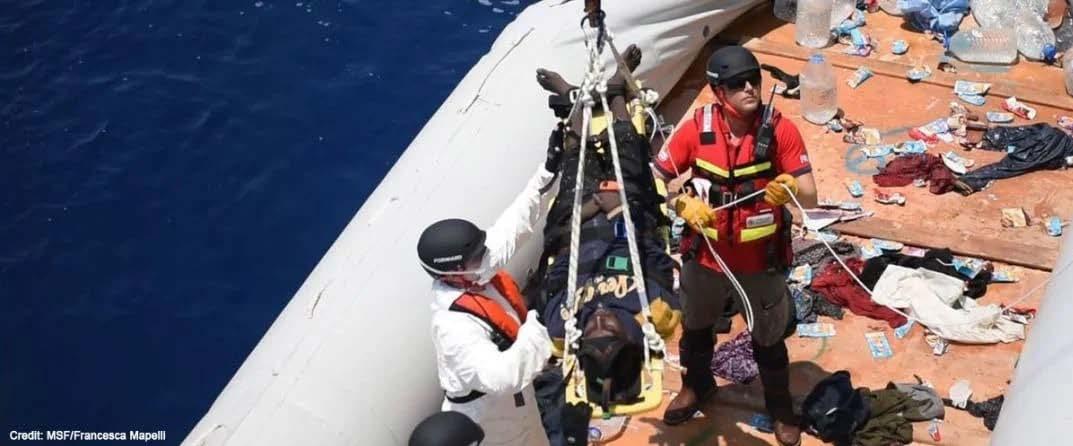
SAFETY CLEAN SHIPPING INTERNATIONAL – Spring 2024 57
The #SARyouOK? Guidance and Best Practice Framework provides a comprehensive approach towards understanding and addressing mental health and well-being within the SAR work environment
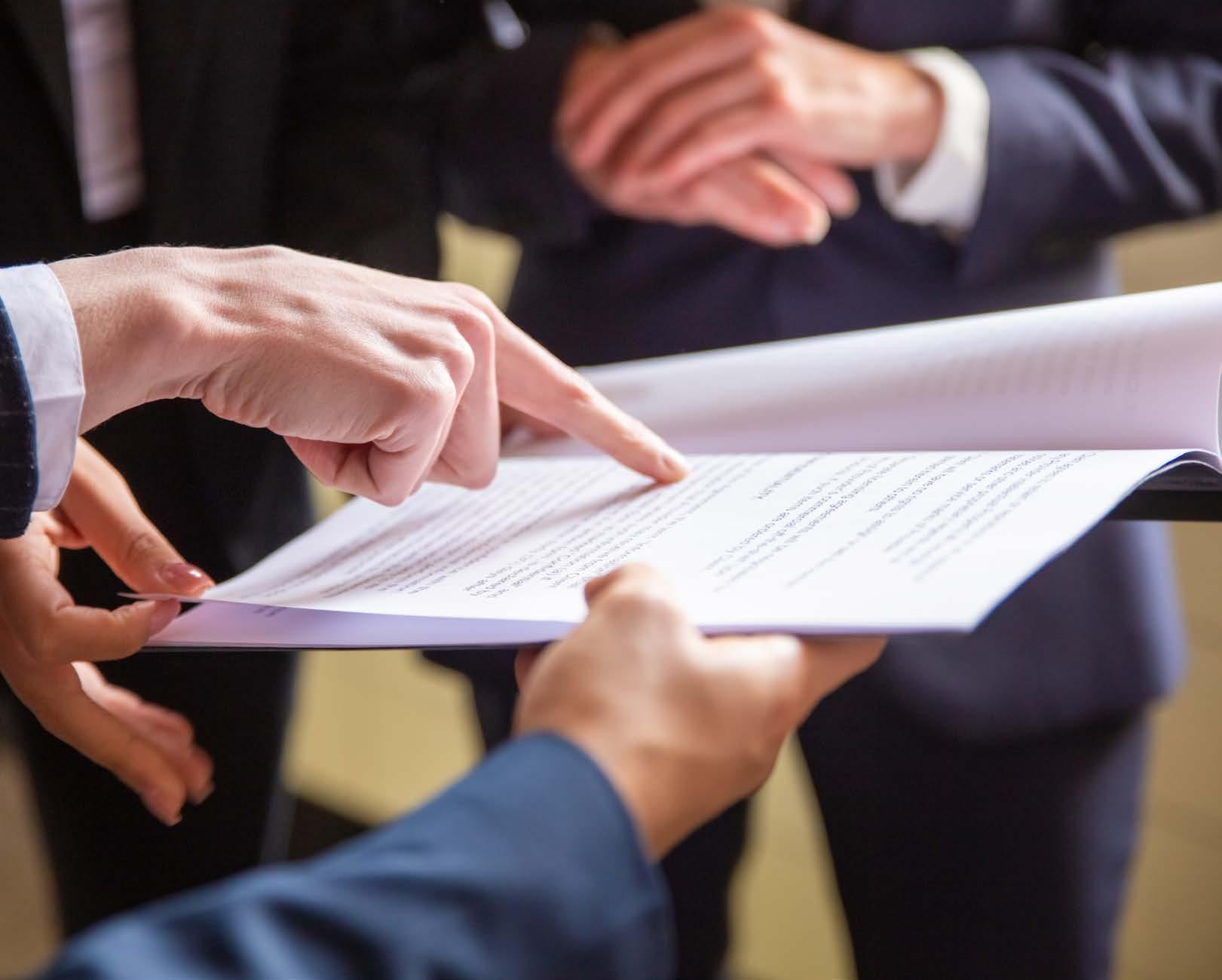
Further swathes of environmental regulation affecting the maritime industry will continue, and companies have been warning that more preparation for the new rounds of legislation is needed
NEW WAVES OF REGULATION
Amid the numerous unprecedented logistical challenges the maritime industry faces worldwide, it is vital not to overlook how the sector is potentially unprepared for the crucial new EU environmental regulations. “It seems not everyone is aware of the impending EU requirements,” warns Sjoerd de Jager from PortXchange.
As international regulators require net-zero emissions across the sector by 2050, impactful regulations have been implemented to achieve this necessary goal. The recording of EU emissions by measurement, reporting, and verification (MRV) and Corporate Sustainability Reporting Directive (CSRD), coupled with the increasingly strict limits on emissions by FuelEU and ETS, signifies the profound regulatory change the maritime sector is undergoing. The recent Emisssions Trading System (ETS) assignment of administering authorities to shipping companies is one of the final stages in implementing ETS.
Each shipping company has also been allocated a country to open its Maritime
Operator Holding Account (MOHA) and submit its greenhouse gas emission allowances (EUAs), further restricting allowable emission levels.
Although these new requirements may currently appear modest, they will quickly intensify and necessitate sweeping adjustments within the sector. Adequately adapting to these changes demands a swift and dedicated response. The substantial fines for non-compliance will mean a change of attitude from indifference and waiting and seeing to rapid compliance in meeting deadlines. This underscores the need for immediate action to avoid any financial consequences.
Despite the regulations primarily targeting shipping lines, the role ports will play in meeting these challenges is vital. Ports are strategically positioned to lead the charge towards greener shipping, as they are essential locations in designing the new fuel infrastructure and are often sources of massive emissions from transportation and industrial cluster activity. Port emissions
REGULATION CLEAN SHIPPING INTERNATIONAL – Spring 2024 58
cannot be ignored in the shipping line calculations as Scope 3 and sometimes Scope 2. With ports often also close to residential areas, the impact of a port’s decarbonisation agenda is hard to overestimate.
The complexity of the current environmental regulations requires data-driven solutions so the maritime sector can remain proactive in complying with the new industry standards. Ports must lead in the historic effort to reduce emissions and PortXchange is committed to supporting the industry in achieving this goal.
PortXchange’s EmissionInsider will help benchmark current port emissions, evaluate strategies to reduce emissions, and implement decarbonization practices so ports can achieve zero-emission status. Its reliable data collection services enable ports to be leaders in complying with international climate regulations while transitioning to creating a more sustainable port ecosystem.
CONFORMITY ASSESSMENT
Verifavia, the independent transport emissions verifier and part of Normec Group, has become the first validation and verification body to obtain approval from global freight transportation decarbonisation body, Smart Freight Centre under its Conformity Assessment Scheme.
Smart Freight Centre’s Conformity Assessment Scheme is the next step in its work to identify and encourage logistics decarbonisation strategies. Smart Freight Centre developed the Global Logistics Emissions Council (GLEC) Framework – designed to inform business decisions that reduce emissions and track progress towards climate goals.
This provided the foundation for ISO 14083, a common methodology established in early 2023 for the quantification and reporting of greenhouse gas (GHG) emissions from passenger and freight transportation, now the definitive standard for transport carbon accounting. Third-party verification is essential to ensure the credibility of sustainability reporting. Now that ISO
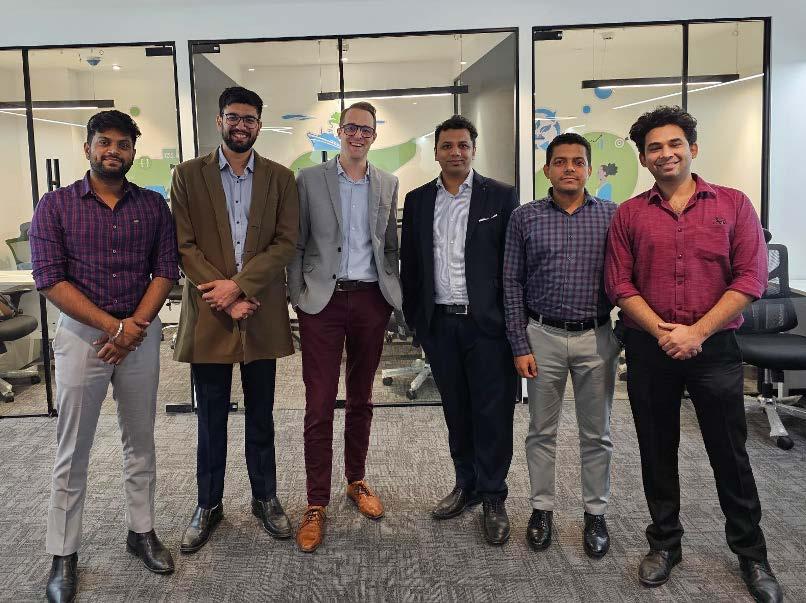
14083 is in place, Smart Freight Centre is focused on ensuring competent assurance of the reported information by providing the Conformity Assessment Scheme which enables a consistent evaluation, specifically designed for assessing logistics GHG emission calculations.
The scheme promotes a shortlist of Smart Freight Centre’s approved Verification and Validation Bodies (VVB’s). Verifavia received the first formal approval as a VVB following the first ever Smart Freight Centre VVB mandatory training and exam.
Christoph Wolff, CEO of Smart Freight Centre, comments: “Comparing GHG emissions across different modes of transport or suppliers can be like comparing apples with oranges. That’s why the GLEC Framework was developed, to harmonise the calculation and reporting of logistics GHG emissions across multi-modal supply chains. It is the primary industry guideline to support implementation of ISO 14083, and can be implemented by shippers, carriers and logistics service providers.”
He continues: “Third-party assurance of greenhouse gas reporting
enhances its credibility. It provides trust that the information is accurate, relevant, reliable and complete. Verifavia is the first VVB to receive Smart Freight Centre’s approval. This underlines the team’s in-depth knowledge of GHG accounting in line with ISO 14083. We are confident that they will set the benchmark for competent and impartial assurance of GHG emissions statements.”
Compliance with ISO 14083 is a crucial and fundamental step to ensure accuracy of emissions inventories, from which all other emissions-related efforts can be derived. These efforts include commercial activity such as pooling across ownership groups, insurance, primary (sometimes instantaneous) emissions data sharing among suppliers, and emerging topics such as market-based measures and insetting. There is demand for assurance services for several of these activities, and Verifavia is focused on meeting this demand.
Nicolas Duchene, president of Verifavia, says: “Calculating emissions is now mandatory across the logistics supply chain. ISO 14083 provides a new tool for the transport sector to drive
REGULATION CLEAN SHIPPING INTERNATIONAL – Spring 2024 59
From left to right (part of the Verifavia team): Nilay Warkhedkar, environmental emission analyst Himanshu Rai Sharma, business developer Nicolas Duchêne, president Yuvraj Thakur, VP commercial shipping Rajat Bishnoi, director of shipping emissions and performance BU Shubham Jain, business development manager.
climate action, create policies and roadmaps to reduce emissions, and track progress. Recognition from the Smart Freight Centre is a testament to Verifavia’s unwavering commitment to providing transparent, independent, and robust verification services.
“Today, carbon has a value, and Verifavia is supporting companies across the shipping, road and rail sectors to realise the commercial opportunity that emissions reduction represents.”
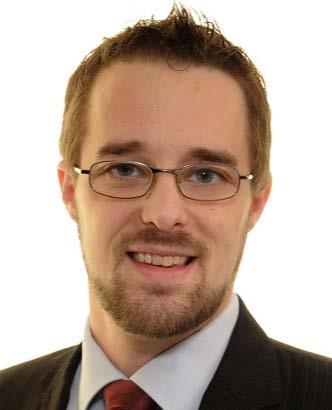
GREENHOUSE GAS PRICING
The global shipping regulator, International Maritime Organisation (IMO), has set a target of net-zero carbon emissions by 2050 for the industry, and now needs to develop climate regulations by 2025 that make it possible to reach that target.
A core challenge is how to craft a global greenhouse gas pricing regulation that can bridge the price gap between the cleanest fuels and fossil fuels, driving investments in green fuels, without imposing an outsized cost on the global economy, says the World Shipping Council (WSC), which has put forward a proposal on greenhouse gas pricing.
“We see the catastrophic effects of climate change every day, and as a significant emitter of greenhouse gases, the shipping industry must do its part and decarbonise by 2050. Container and vehicle carriers are
building and already operating vessels that can run on the greenest fuels, but those fuels cost three to four times more, and the supply of green fuels is only a fraction of what is needed. Global climate regulations are necessary to make it possible for carriers to operate on green fuels, and to incentivize fuel and energy providers to invest in new production capacity,” the Council said in a recent statement.
The WSC Green Balance Mechanism outlines a new approach to greenhouse gas pricing which makes it possible to close the price gap between fossil fuels and green fuels, at the lowest possible overall cost.
Through the Green Balance Mechanism, fees are taken from fossil fuels and allocated to green fuels used, so that the average cost of fuel is equal.
The greater the greenhouse gas emission reductions a fuel delivers – on a well-to-wake lifecycle basis – the greater the financial allocation received.
The monies collected in any given year is determined by the amount of green fuels used, allowing for a relatively low fee at the start of the transition.
The minimum fee necessary to offset the price differential in a given year is collected and allocated to ships using green fuels that meet a specific greenhouse gas threshold. This ensures that green fuels can be produced and used and does so with the least possible cost to transportation.
The emission reductions required for a fuel to receive a pricebalancing allocation are linked to IMO decarbonisation requirements, increasing in stringency toward the 2050 net-zero goal.
The Green Balance Mechanism is adaptable and fully integrated with a greenhouse gas fuel-intensity standard. It can be used as a targeted greenhouse gas pricing mechanism, or a possible addition to an integrated measure.
Other fees can be added to raise funds for climate mitigation initiatives and research, development and demonstration projects, to provide a
just and equitable transition.
The council says the Green Balance Mechanism makes it economically rational and attractive for both ship owners and energy providers to invest in fuels and technologies that deliver deep greenhouse gas reductions from the day the regulation takes effect.
Existing and soon-to-be delivered dual-fuel ships will be able to operate on the cleanest fuels, rather than having to wait years before economically viable fuels are available. This allows production of the cleanest fuels to grow more quickly, accelerating economies of scale that will push down the cost of green fuels, getting us to zero in the most economically efficient way possible.
“Liner carriers are committed to decarbonising shipping and eager to support the development of effective and timely global climate regulations through the IMO. Switching from fossil fuels to green energy sources for the engine of global trade will take time and require massive private and public investments. It is our shared responsibility to make sure we meet the needs of our climate in a way that minimises the cost for the global economy,” says John Butler, WSC president and CEO.
EU ETS IMPACT
Ships of 5,000 gross tonnage and above, carrying out voyages to and/or from ports in the European Economic Area, must submit a revised and verified monitoring plan for carbon dioxide (CO2), methane (CH4) and nitrous oxide (N2O) emissions to the administering authority by 1 April 2024, P&I Club Gard writes in an opinion piece.
Since 1 January 2018, large ships of 5,000 gross tonnage and above loading or unloading cargo or passengers at ports in the European Economic Area (EEA) have been required to monitor and report related CO2 emissions and other relevant information to the European Commission under its Monitoring, Reporting and Verification of Maritime Transport (MRV) Regulation (2015/757).
In order to ensure the effective functioning of the EU Emission Trading
REGULATION CLEAN SHIPPING INTERNATIONAL – Spring 2024 60
Nicolas Duchene, president of Verifavia
System (ETS) at an administrative level, the scope of the EU MRV Regulation has been amended and now includes requirements for additional greenhouse gases and emissions from additional ship types.
A consolidated version of the amended EU MRV Regulation is available on the EC website. A questions and answers page further guides shipping companies in understanding the application of the regulation.
Preparation is key for companies to comply with the amended EU MRV Regulation. As most major classification societies are acting as accredited bodies for EU MRV verification, Gard recommend consulting the vessel’s classification society for assistance. They will be able to work with companies to assess monitoring plans to ensure they comply, as well as verify annual emission data. Gard gives details of key dates and requirements, and the full information can be found on its website.
To find out more about the implications of including maritime emissions in the EU ETS from 2024, visit Gard insights at: tinyurl.com/CSI-EUETS and tinyurl. com/CSI-AreYouReady.
Further information can also be found on the EC website at: tinyurl.com/CSI-ReduceEmissions
New emission control areas
The previously announced Mediterranean Sea ECA is set to take effect on 1 May 2025. In addition, Norway and Canada have submitted proposals to designate the Norwegian Sea and parts of the Canadian Arctic as ECAs and work is also underway on a new ECA in the North-Atlantic Ocean, Gard says in an opinion piece on the issue, also to be found on the Gard website.
As the maritime industry continues its efforts to achieve net zero emissions by 2050, steps are also being taken to reduce the negative effects that ship emissions of sulphur oxides (SOx) and nitrogen oxides (NOx) have on human health and the environment
today. In December 2022, the IMO adopted amendments to MARPOL Annex VI and established a Mediterranean Sea emission control area (ECA) that will take effect on 1 May 2025. This is the fifth ECA designated under MARPOL Annex VI, following the Baltic Sea, North Sea, North American, and US Caribbean Sea ECAs. An overview of all MARPOL designated ECAs is available in the latest version of IMO document MEPC.1/Circ.778.
Norway and Canada have proposed new ECAs in the Norwegian Sea and parts of the Canadian Arctic respectively. In addition, a proposal for a North-East Atlantic Ocean ECA may be ready for MEPC 81. Should this be the case, and all goes as planned, three new ECAs could be adopted by spring 2025 and take effect in 2027.
The three prospective ECAs would prohibit ships from using fuel with a sulphur content greater than 0.10% m/m, or achieve equivalent emission reductions using approved technology, and would require all ships constructed after a certain date to comply with NOx Tier III limits as specified in Reg.13 of MARPOL Annex VI, Gard says. It also considers whether
ECAs are effective and the club provides recommendations on steps opertors should take to ensure their bunkering procurement and onboard operating procudures comply with MARPOL requirements, and also take into account that various regions, states and ports have introduced their own emission limits.
Ship operators need to make sure their bunkering procurement and onboard operating procedures comply with MARPOL requirements in force at any given time. To be compliant it is important to ensure that enough fuel with the appropriate sulphur content is available and that proper fuel changeover procedures are in place and implemented before entering an ECA.
Ship operators must therefore ensure that crews are familiar with the sulphur emission limits in force, not only in the MARPOL designated ECAs, but in all jurisdictions to which they trade.
The club also highlights the forthcoming prohibition on the use and carriage of HFO in Arctic waters. See the insight “Regional sulphur emission limits at a glance” at: tinyurl.com/CSI-RegionLimits
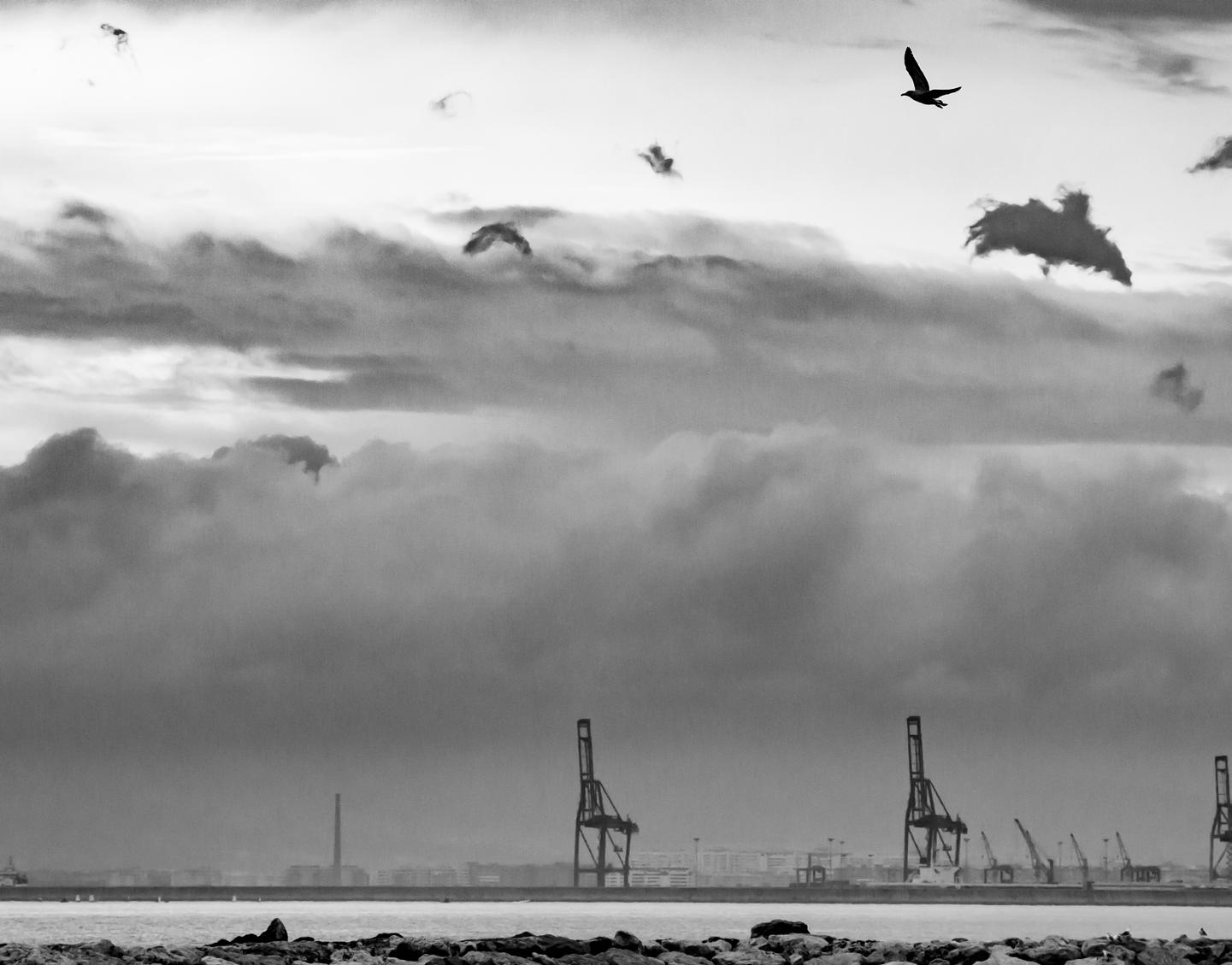
REGULATION CLEAN SHIPPING INTERNATIONAL – Spring 2024 61
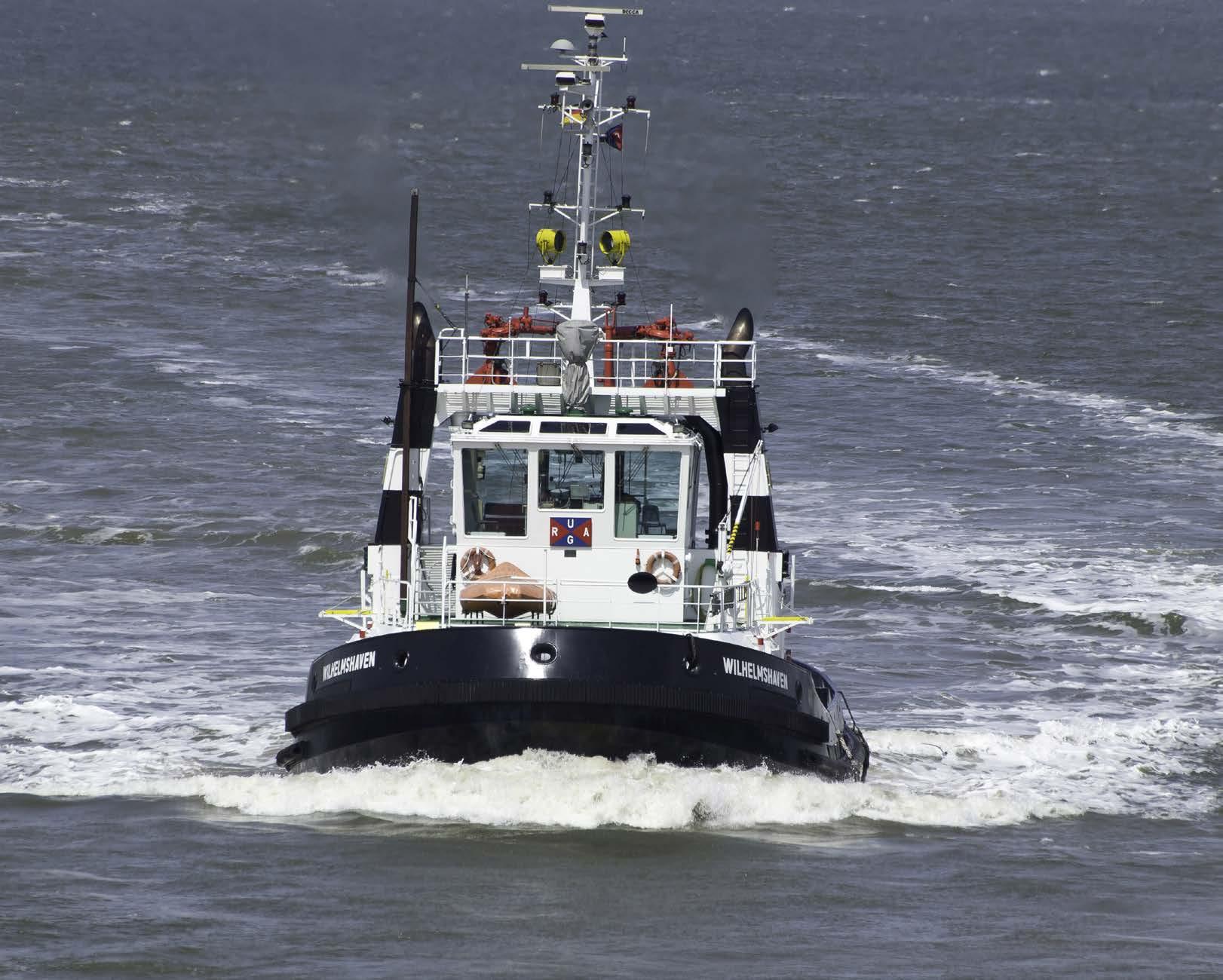
BLUE SKY THINKING
Classification societies continue to release guidelines to assist shipowners on their net-zero journey
The Blue Sky Maritime Coalition (Blue Sky), with the support and leadership of member organisations, the American Bureau of Shipping (ABS) and Port Houston, has signed a Memorandum of Understanding (MOU) on Energy Transition Cooperation involving three Belgian and three Houstonbased partners to boost transatlantic cooperation on the green transition.
The Center for Houston’s Future, Waterstofnet, Port Houston, the Port of Antwerp-Bruges, Exmar and the Blue Sky Maritime Coalition agreed to explore a partnership around an import-export coalition for renewable and low-carbon molecules, a green shipping corridor and the exchange of best practices, knowledge and research.
ABS chairman and CEO and Blue Sky board member, Christopher Wiernicki, comments on the unique nature of the Green Shipping Corridor initiative:
“ABS is pleased to be leading the development of the Houston – Antwerp/ Bruges Green Shipping Corridor in
association with the MOU partners and other stakeholders. This corridor has a unique opportunity to address not only decarbonisation of maritime operations between these great ports, but also to build out the assets and infrastructure for clean energy fuel transportation between these major energy hubs for the US and Europe.
“Connecting the ambitions and investments of the US, including the Gulf Coast Hydrogen Hub development, with the EU to support the clean energy transition is a major strategic step for global decarbonization efforts.”
Port Houston chief infrastructure officer and Blue Sky board member Rich Byrnes adds: “We are pleased to be a signatory to this MOU and look forward to working with all partners to develop this vital green shipping corridor. This partnership represents a great opportunity to progress our shared goals of decarbonisation in maritime, environmental sustainability, and trade development in clean energy.”
CLASSIFICATION CLEAN SHIPPING INTERNATIONAL – Spring 2024 62
Blue Sky president David Cummins highlights how this MOU provides opportunities for Blue Sky members to engage on this important initiative: “Blue Sky Maritime Coalition members recognise the need to address global climate change and are committed to accelerating the transition of waterborne transportation toward netzero GHG emissions.
“The extensive footprint of our member organisations in the Houston area and the broader Gulf Coast region will provide many opportunities for key partners and stakeholders to support these initiatives, including the development of the Houston –Antwerp/Bruges Green Shipping Corridor, which is being led by ABS. We are excited to be working on energy transition cooperation between the largest petrochemical clusters in the world with the associated ports.”
Cummins continues: “Success will require many different stakeholders and participants, so collaboration is key. We encourage all Blue Sky members, prospective members and other stakeholders to join and support these efforts.”
GREEN STEEL GUIDE
ClassNK has released Environmental Guidelines (Edition 4.1). The guidelines newly specify the class notations related to green steel products*1 and microplastics*2 collecting systems.
In response to environmental challenges such as climate change and marine pollution, the introduction of various environmental technologies to ships, beyond compliance with regulations, is promoted. For evaluating these efforts, ClassNK has issued its Environmental Guidelines, which set out criteria, including the ‘a-EA (Advanced Environmental Awareness)’ notation for ships with advanced environmental measures.
In Edition 4.1, the range of measures eligible for the a-EA notation has been expanded to include the use of green steel products in ship structures and other components, and the installation of microplastics collecting systems, with each examination procedure and requirement.
Accordingly, a-EA (GRS) can be granted for ships using green steel products and a-EA (MPC) notation for ships equipped with microplastic
collection devices.
*1 Steel products manufactured by utilising technologies that substantially reduce or eliminate the emission of carbon dioxide in the steel production process
*2 Marine plastic waste that is smaller than 5mm in length
Safety management
ClassNK and Lovoy have signed a Memorandum of Understanding (MoU) to cooperate with development and implementation of more user-friendly Safety Management Systems (SMS).
Lovoy has highlighted that many SMSs have grown so complex that they lose sight of the end user – the seafarer. If procedures are user-friendly, people will use them more with reduced risk of mistakes. The industry faces many new requirements making user-friendly SMS design even more critical. Introducing elements such as liquefied natural gas will most likely make SMSs even more complicated.
ClassNK has engaged in SMS audits for 6,000 vessels and 800 companies to ensure that each system complies
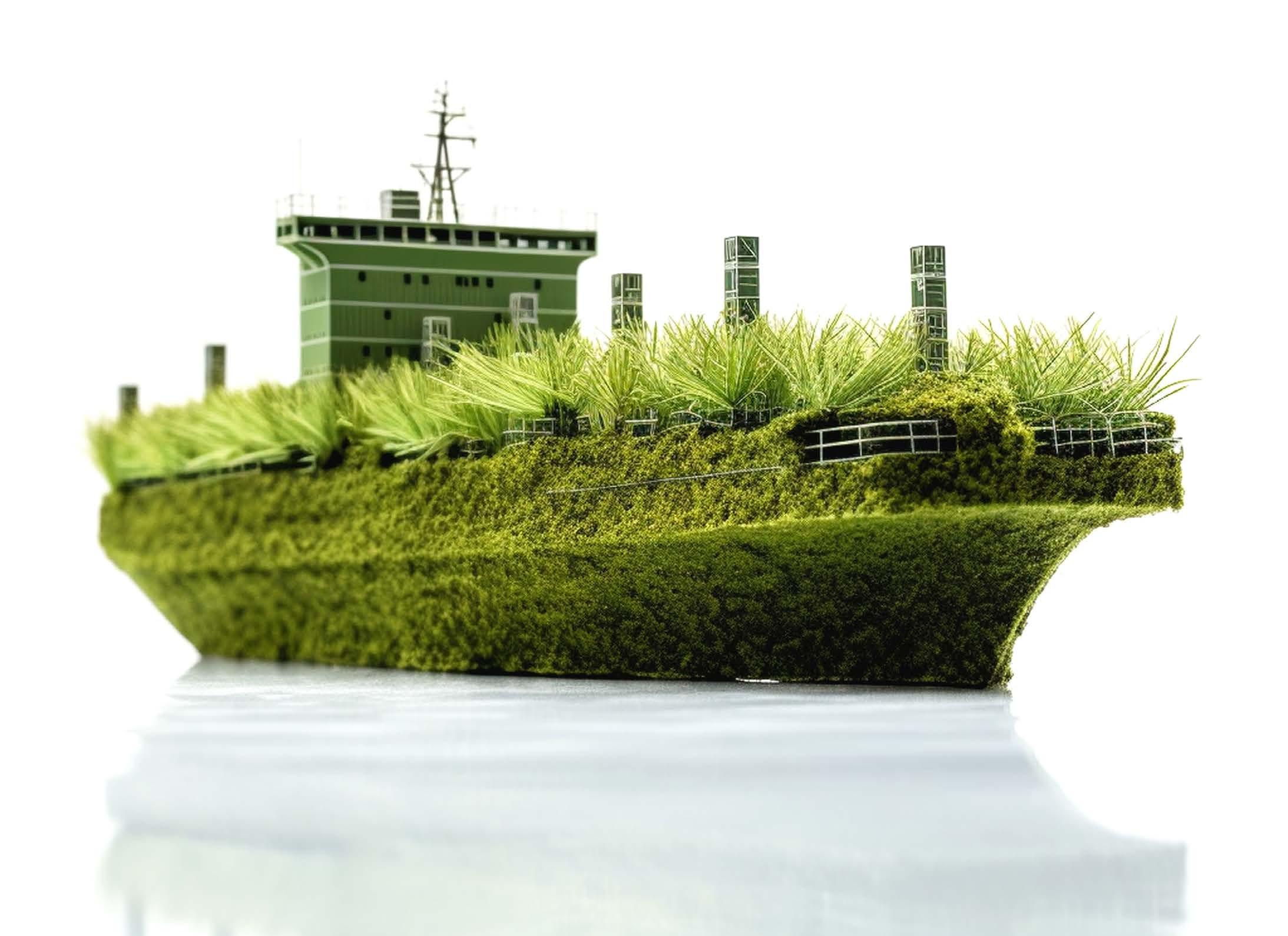
CLASSIFICATION 63
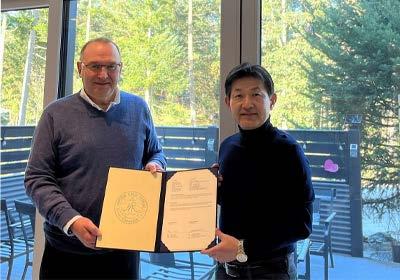
with regulations. The society has also worked to provide valuable insights and tools for enhancing safety practices.
Both parties have agreed that overly complex SMSs are not only a problem, but also an opportunity for improvement. With the signing of this MoU, the two parties will join forces to support and improve safety at sea.
Captain Naoki Saito, general manager of Maritime Training and Education Department, ClassNK comments: “To support the shipping stakeholders’ ongoing and steadfast pursuit of safety, ClassNK is committed to examining every possible approach to ensure elevate safety standards. I am pleased to join hands with Lovoy in exploring potential and measures that will contribute to this endeavour.”
Captain Terje Lovoy, senior partner, Lovoyn adds:“Quality is not a quick fix – it’s about making lasting change. ClassNK is a world leader in quality
management. Together, ClassNK and Lovoy will make lasting change by training companies to permanently stop their own people from putting unnecessary complexity into their SMSs.”
ClassNK e-learning courses
ClassNK has introduced e-learning courses through its training and education service, ClassNK Academy. The courses are designed to impart foundational and technical knowledge essential for professionals and stakeholders in the shipping and shipbuilding industries.
The initiative begins with four key courses. The introductory course delivers a broad overview of the shipping and shipbuilding sectors, suitable for newcomers to the industry. It is followed by three specialised courses on Stability, covering buoyancy principles and both intact and damage stability;
Propulsive Performance, detailing the basics of propeller operation, hull form impact, and efficiency enhancements; and Structure and Strength, addressing load considerations and the assessment of hull integrity.
The ClassNK Academy’s e-learning platform offers an intuitive and interactive learning experience, aimed at maximising knowledge retention and engagement.
Upon completion of the courses, participants will be awarded a certificate, acknowledging their achievement and readiness to apply their new knowledge. For companies, this platform also enables the monitoring and assessment of employee learning progress.
Registration for the courses is now available, with pricing set to ensure accessibility for all interested parties.
The dedicated website can be found at https://academy-en.classnk.or.jp/
CLASSIFICATION CLEAN SHIPPING INTERNATIONAL – Spring 2024 64
Captain Terje Lovoy, senior partner, Lovoy (left) with Captain Naoki Saito, general manager of Maritime Training and Education Department, ClassNK

Your Trusted Partner
The Maritime Association Management Company (Maritime AMC) provides comprehensive secretariat services for trade associations operating across all sectors of the global maritime and offshore industries.
When it comes to entrusting the management of your association to a specialist services provider, we are your ideal partner.
Whether your association is a fledgling or established entity, Maritime AMC has the expertise to ensure growth, develop your association and influence regulatory and media agendas on behalf of your membership.
Our directors have extensive maritime industry and trade association expertise, with demonstrable successes in association governance, publishing, conference production and communications. We speak your language and understand the maritime world.
Maritime AMC currently provides full secretariat services to the Association of Bulk Terminal Operators (ABTO) and previously to the Clean Shipping Alliance 2020 (CSA 2020).



www.maritimeamc.com
AMC Ltd 35 Beacon Drive, Newton Abbot
1GG
+44 (0) 1626 681103
info@maritimeamc.com
Maritime
TQ12
T.
E.



 Sandra Speares Editor, Clean Shipping International
Sandra Speares Editor, Clean Shipping International

































 Don Gregory Director, Exhaust Gas Cleaning Systems Association
Don Gregory Director, Exhaust Gas Cleaning Systems Association
















































































